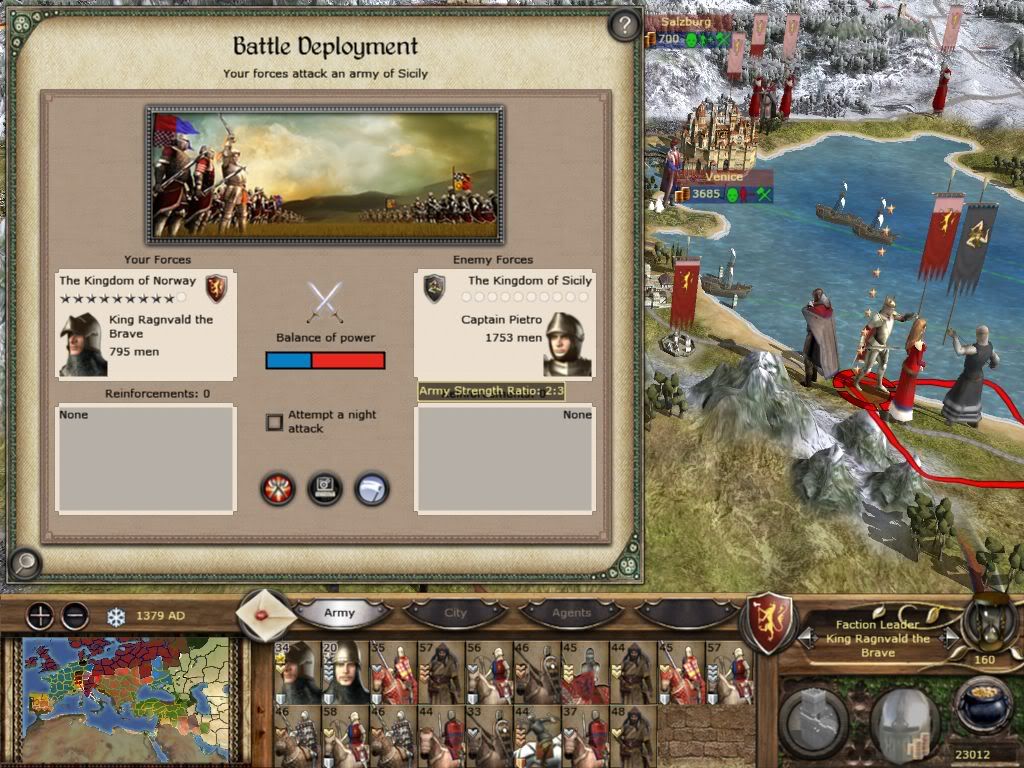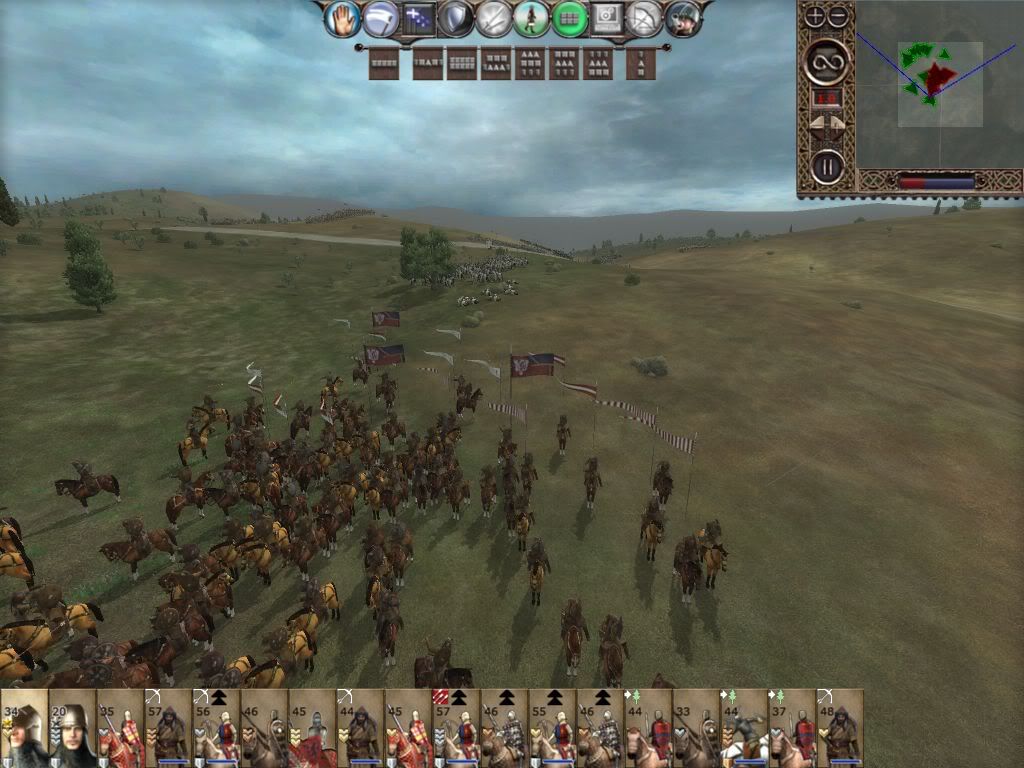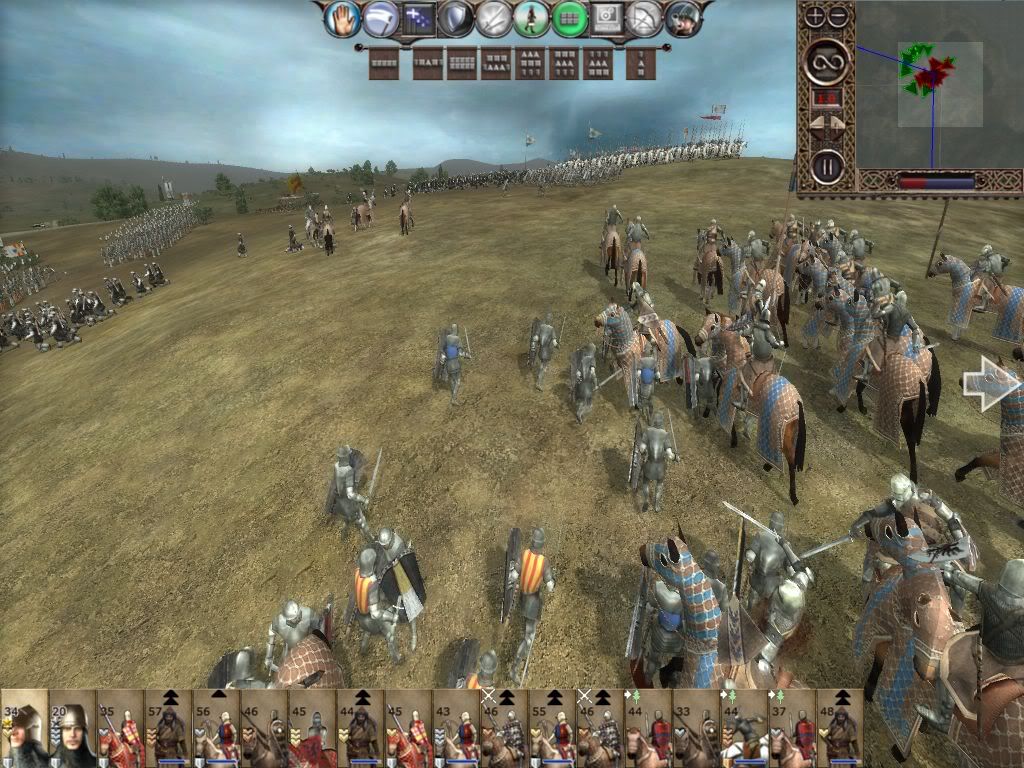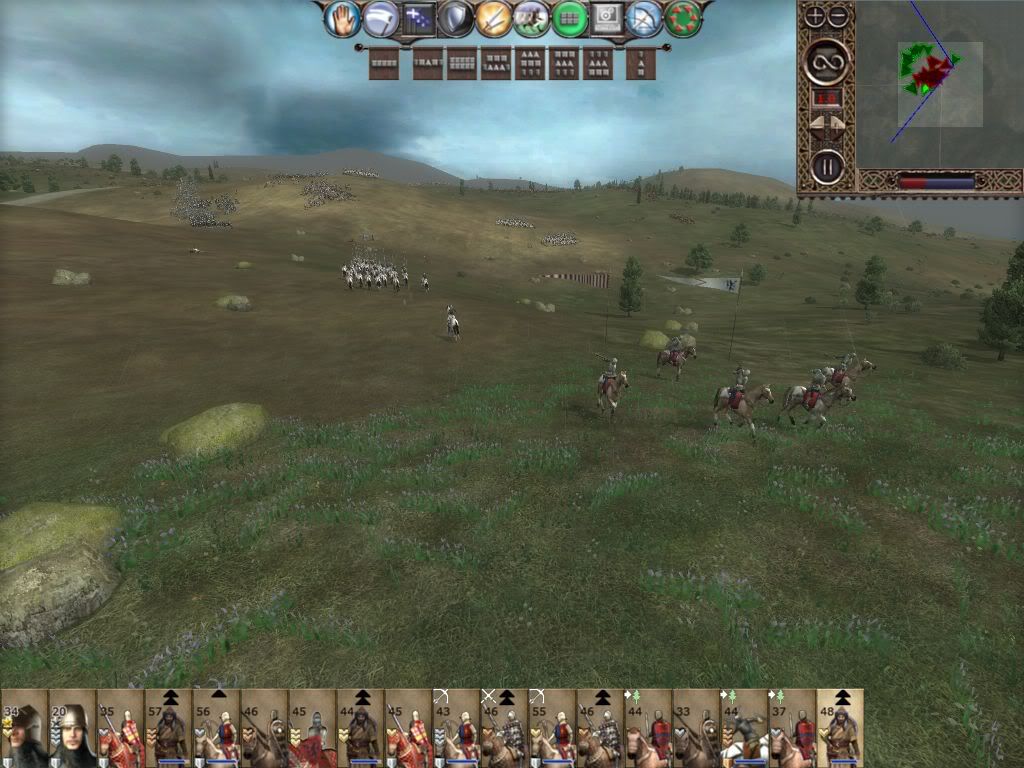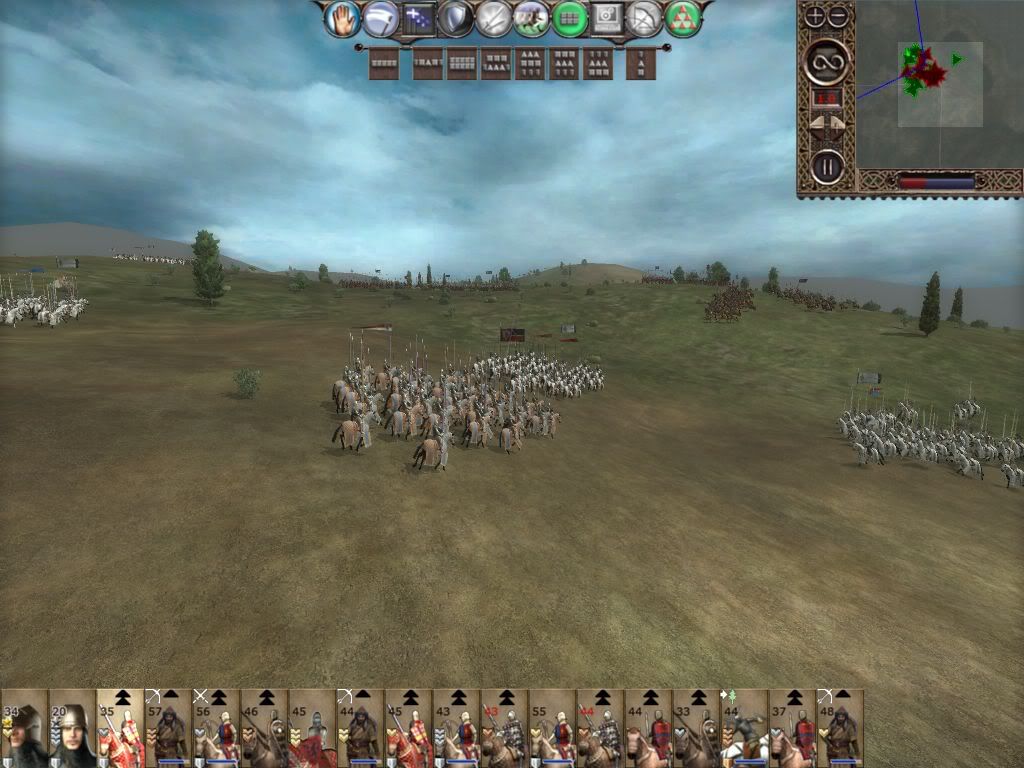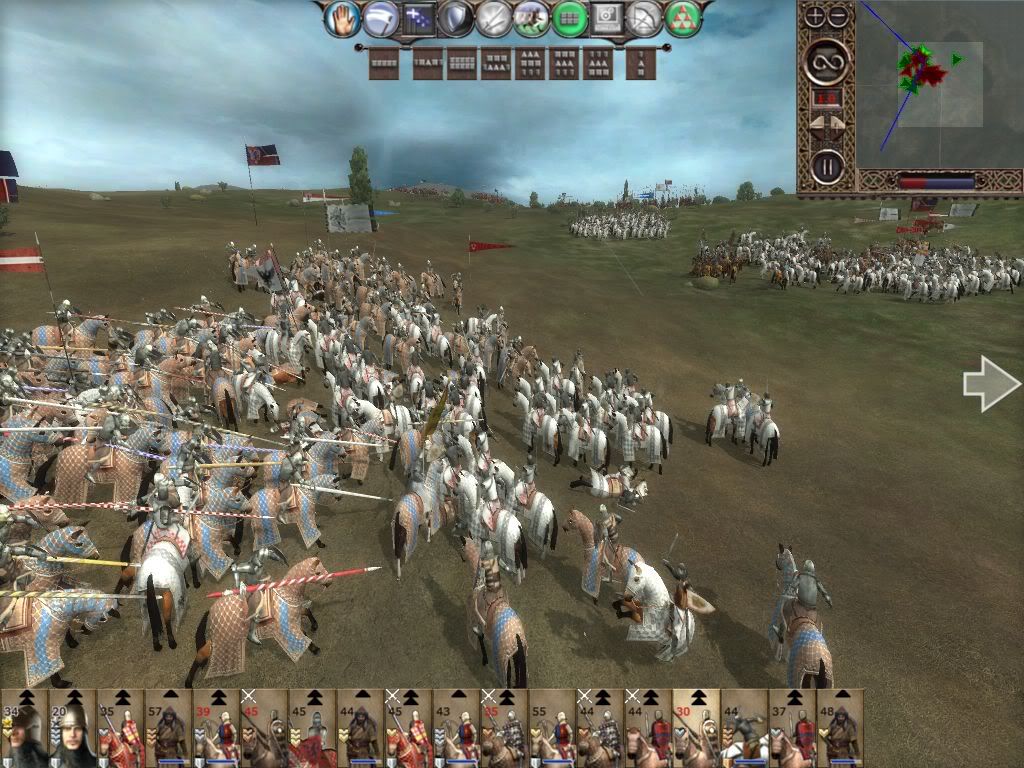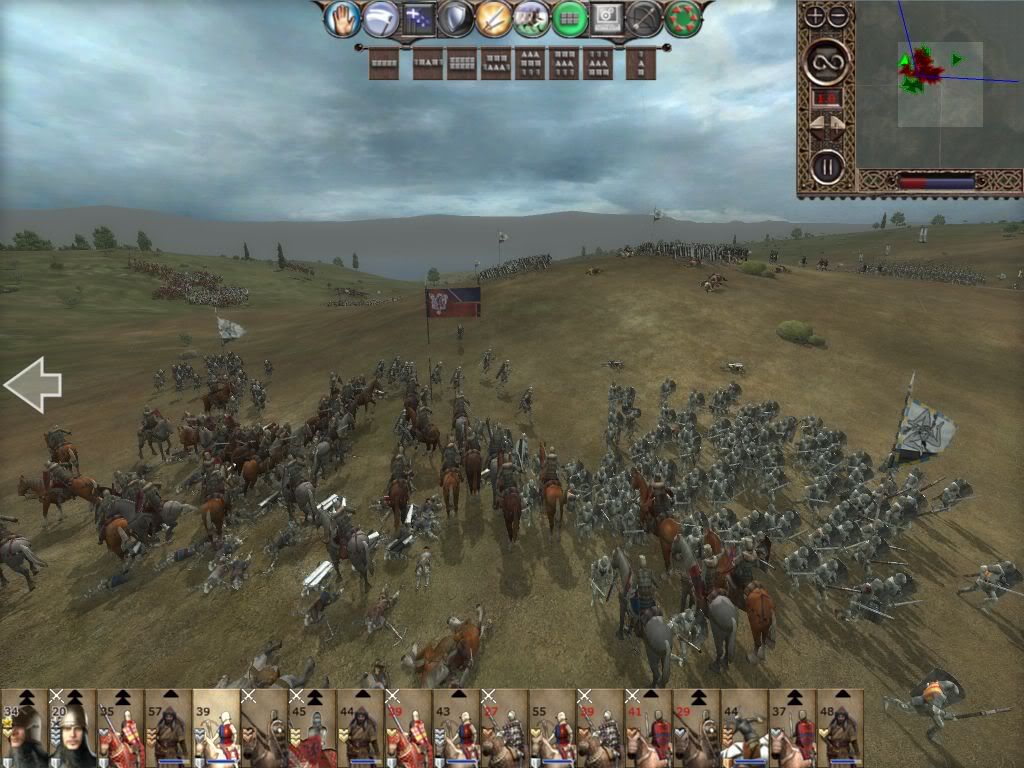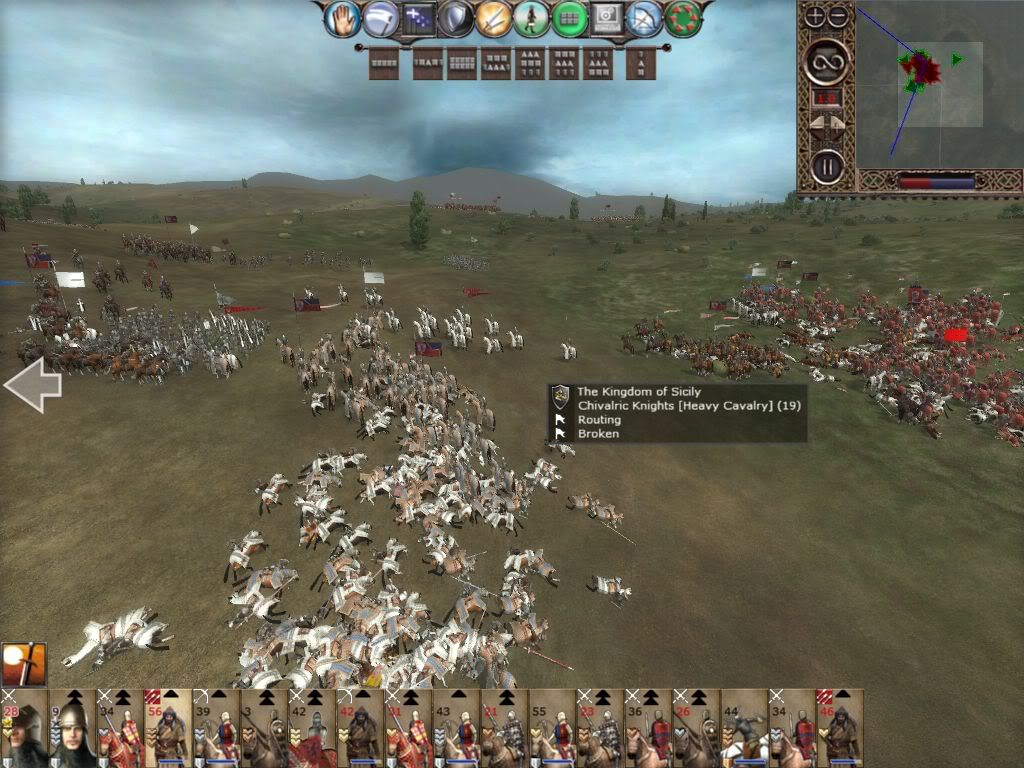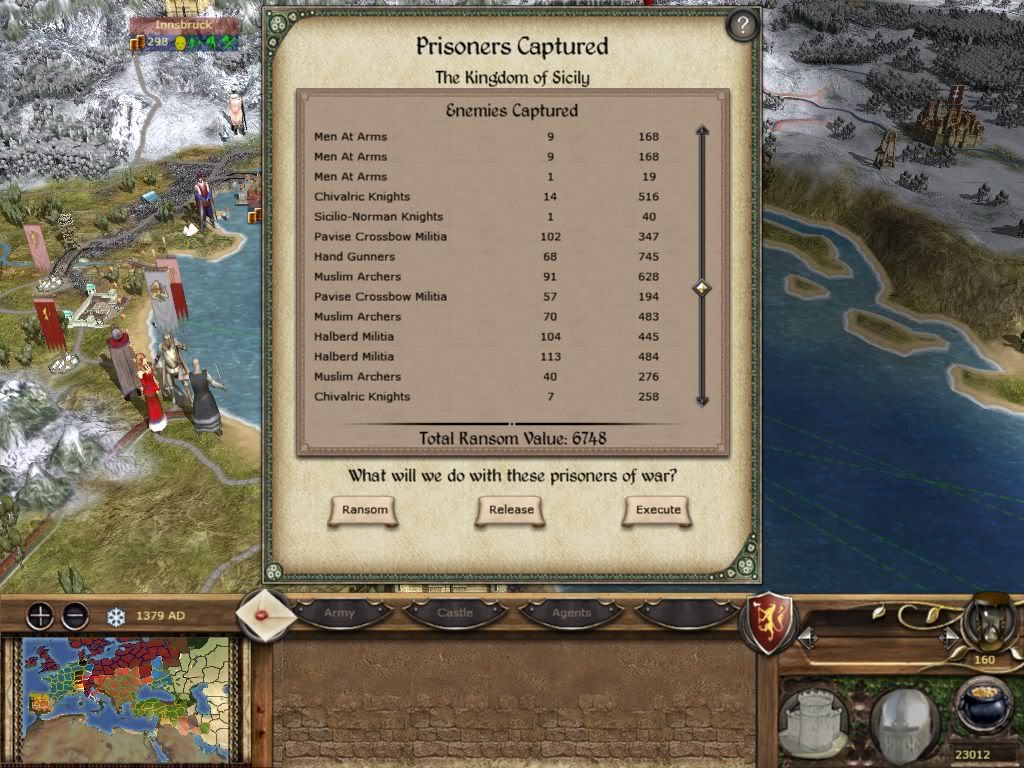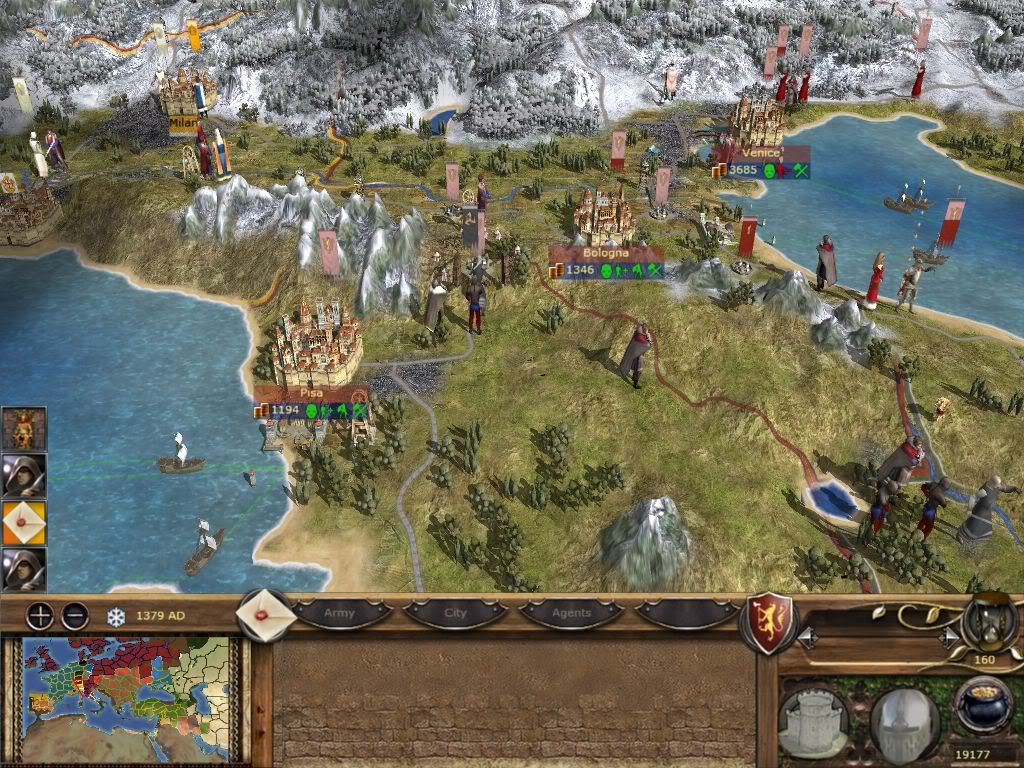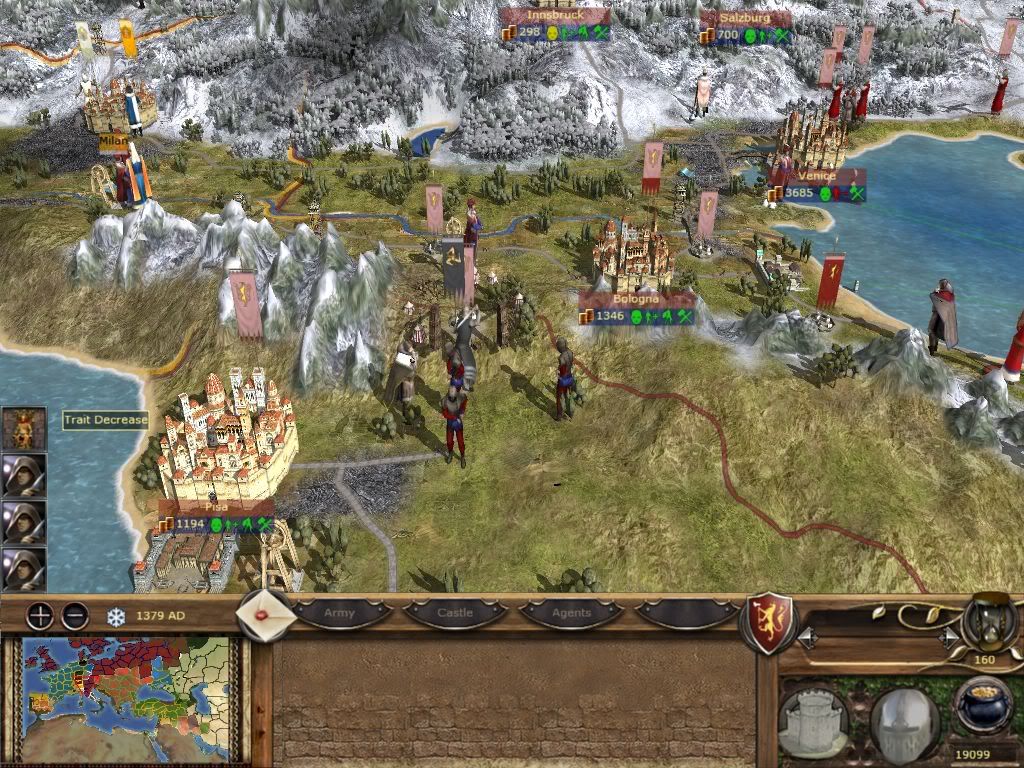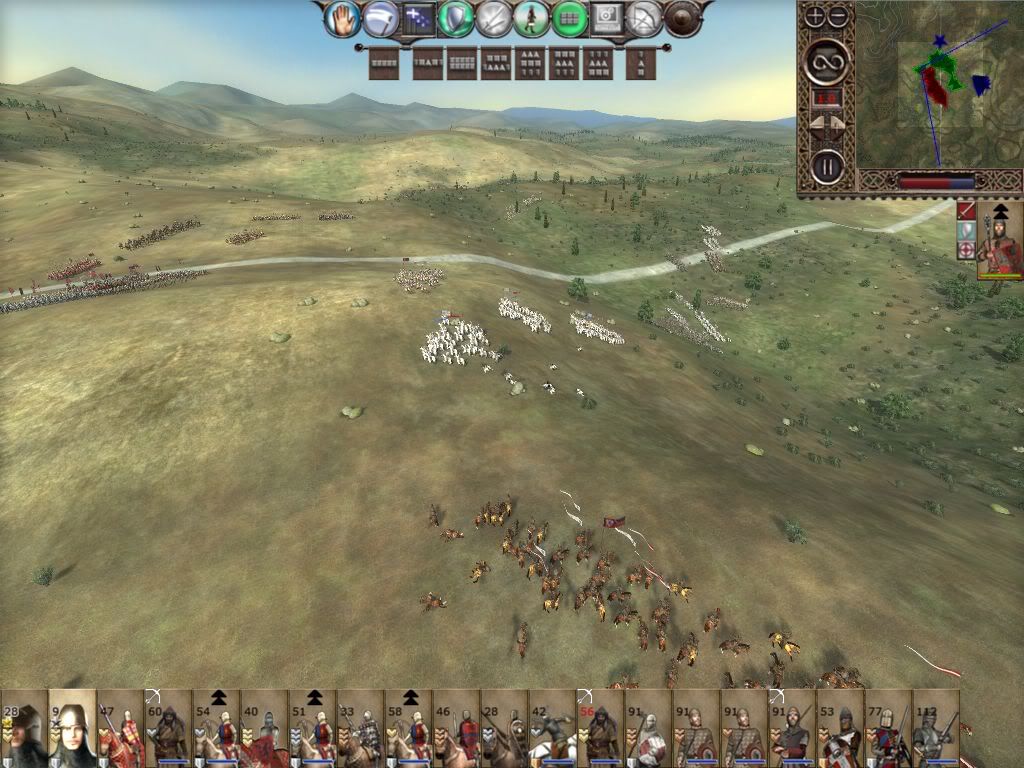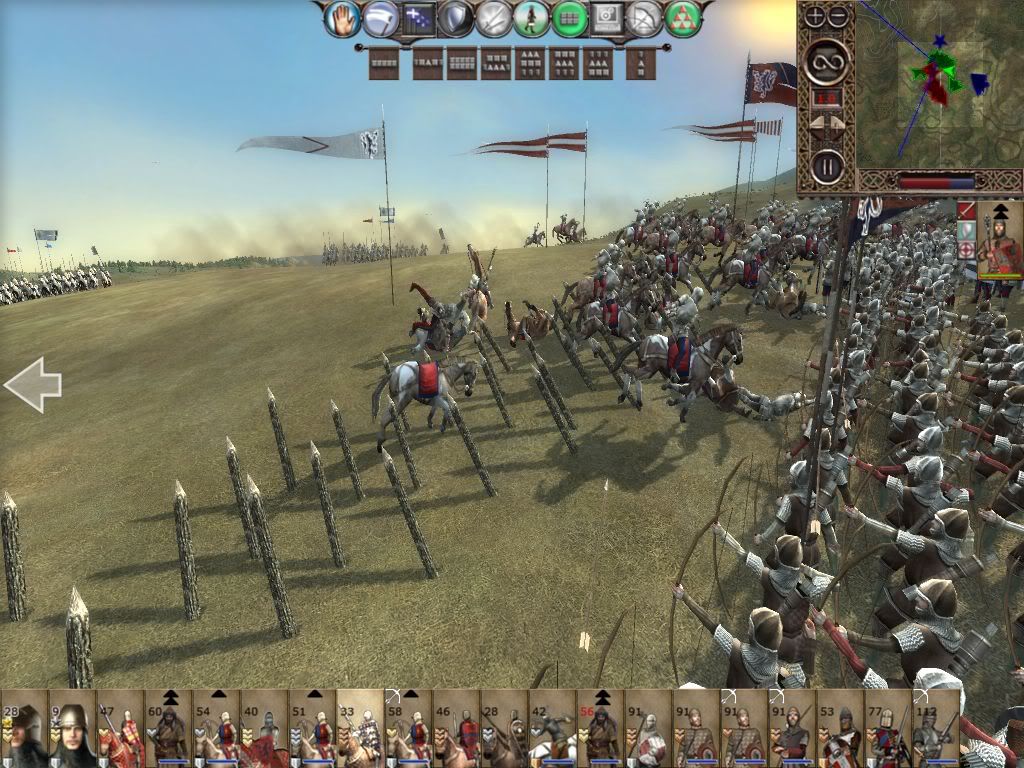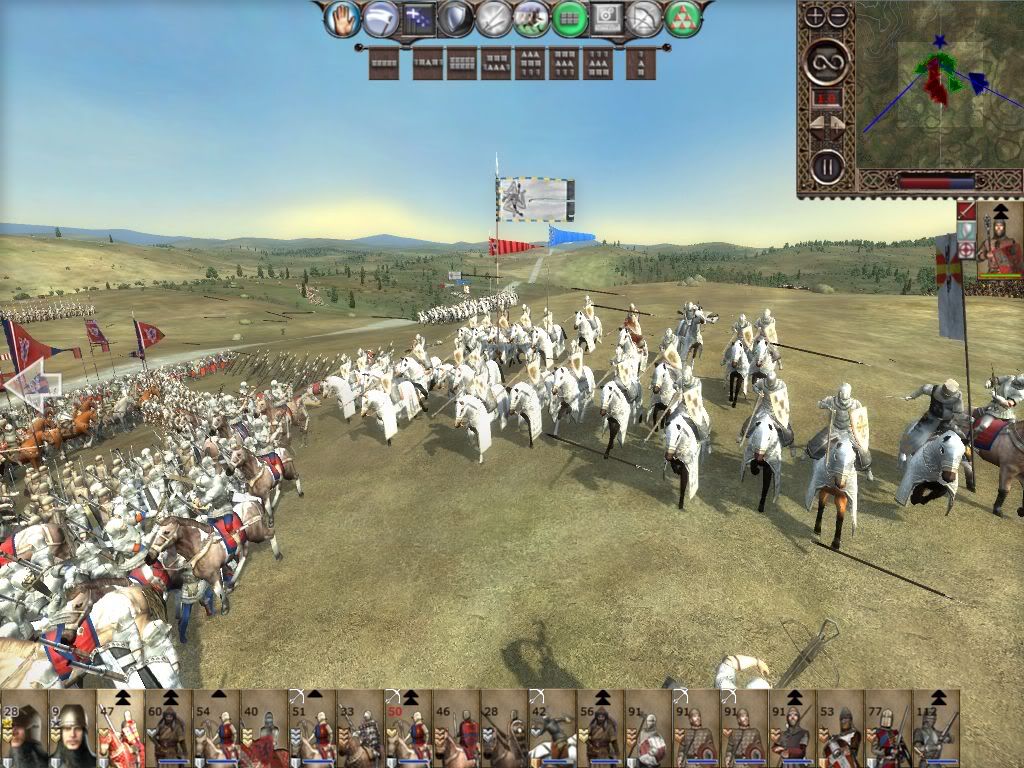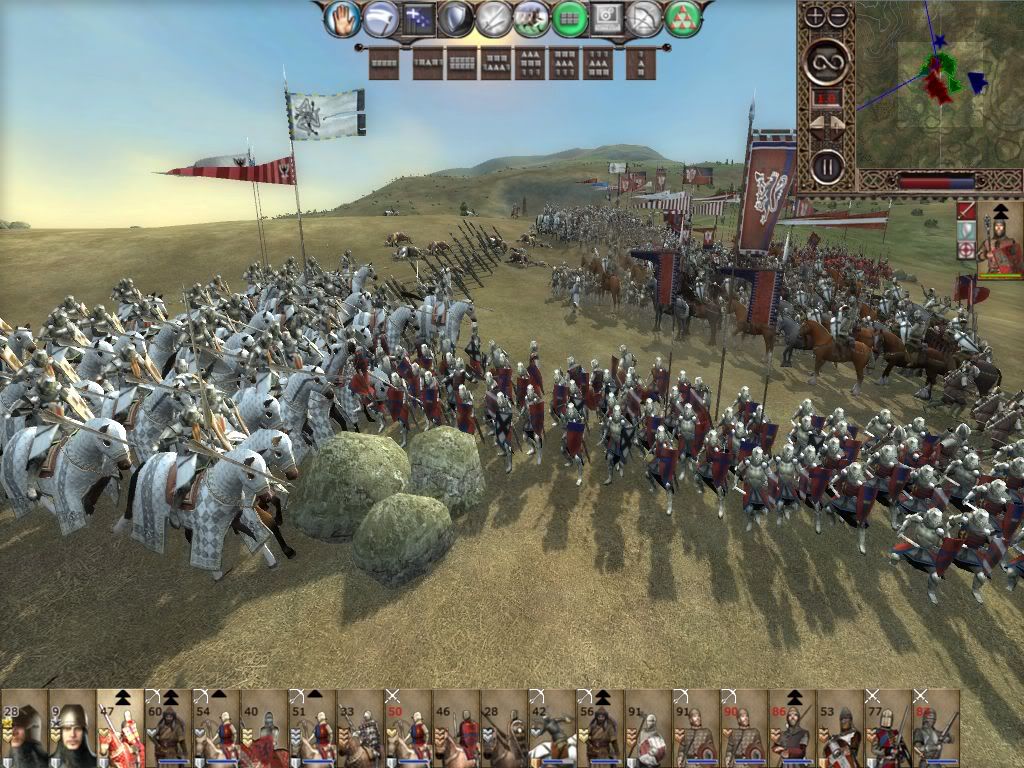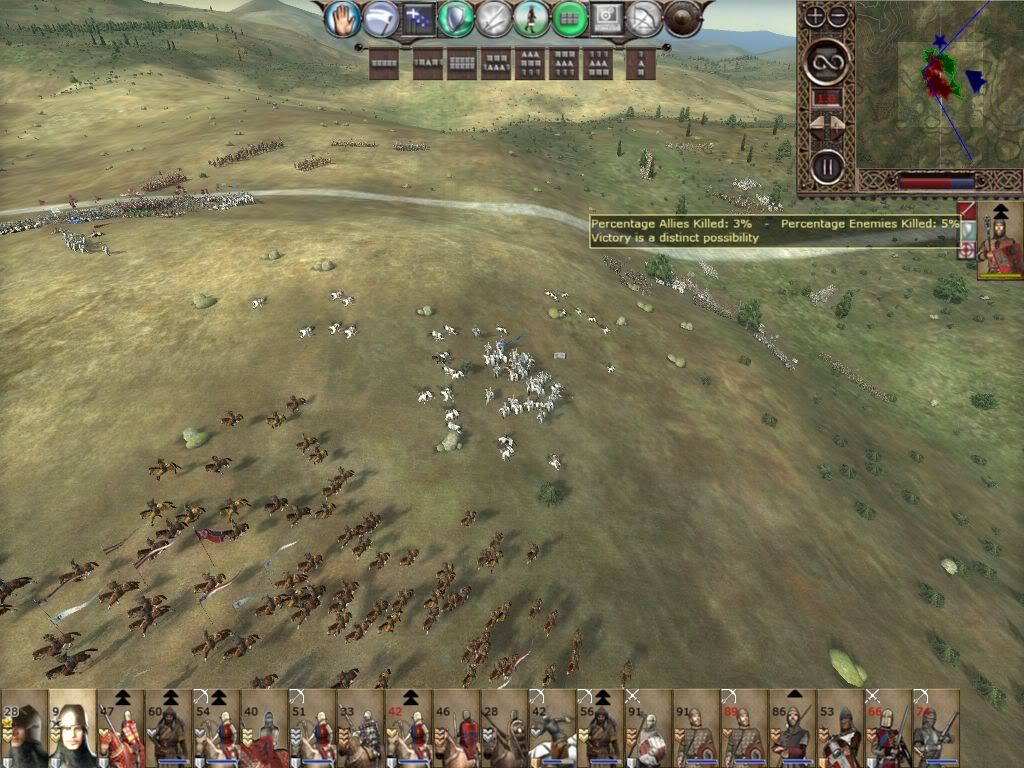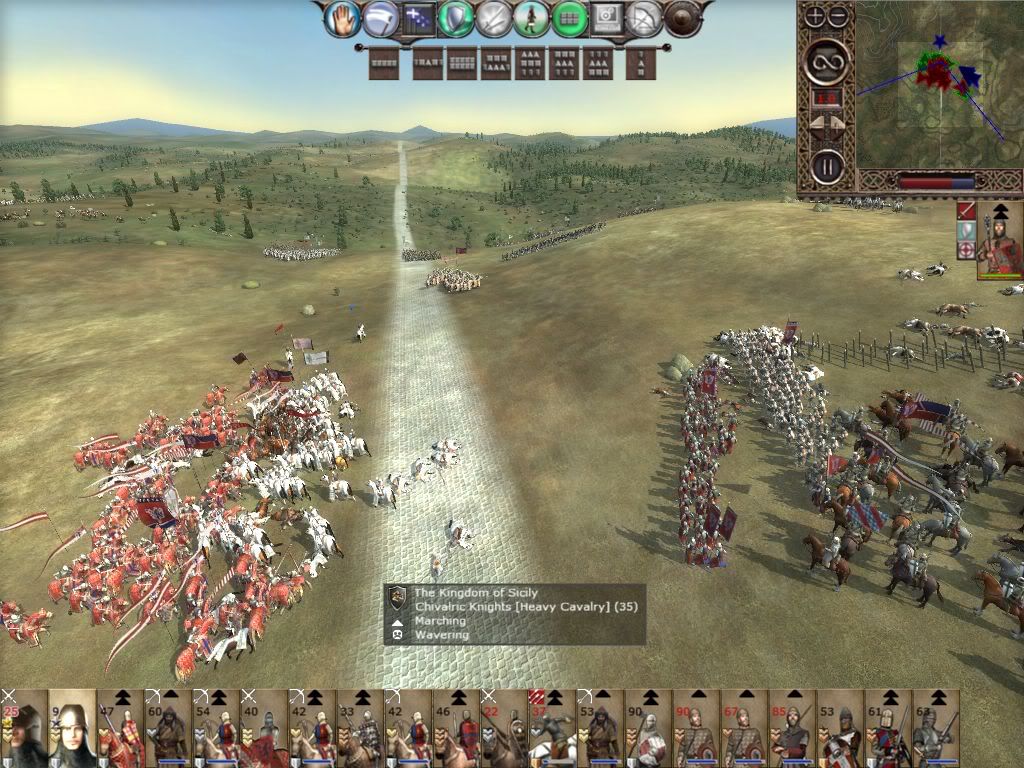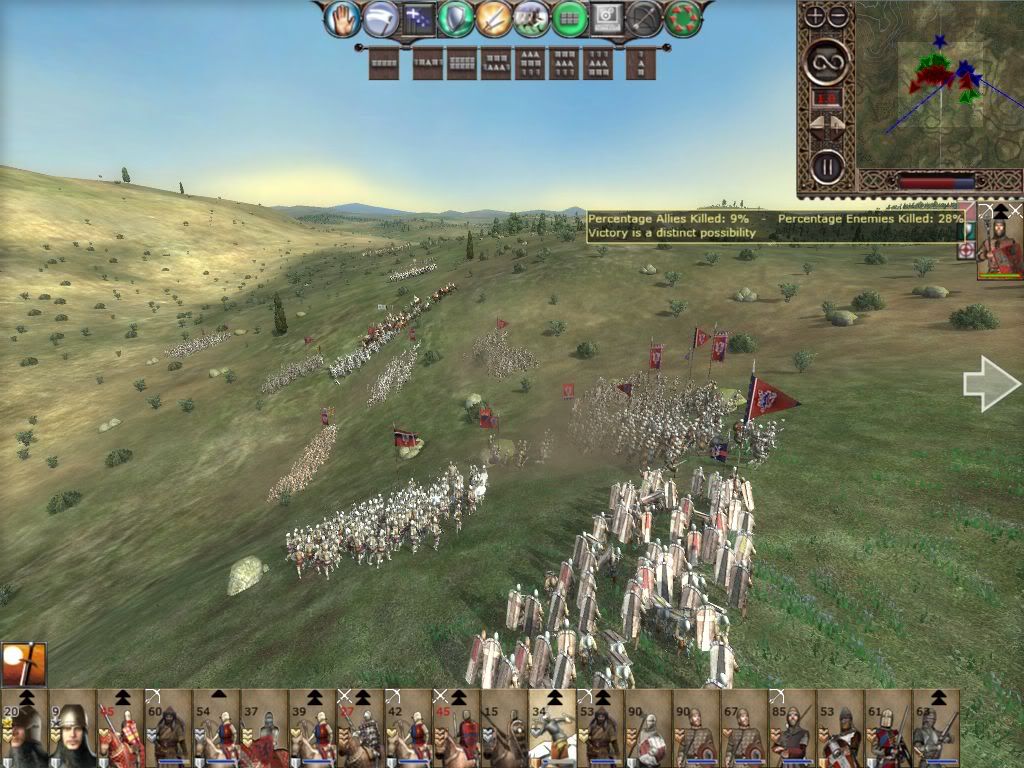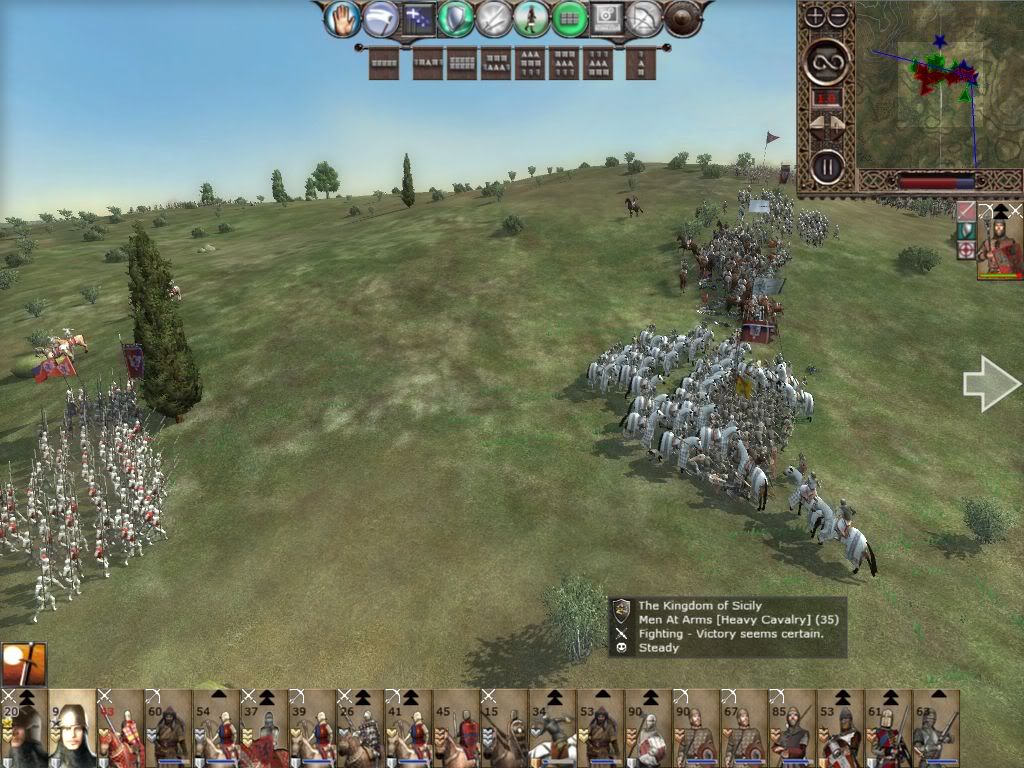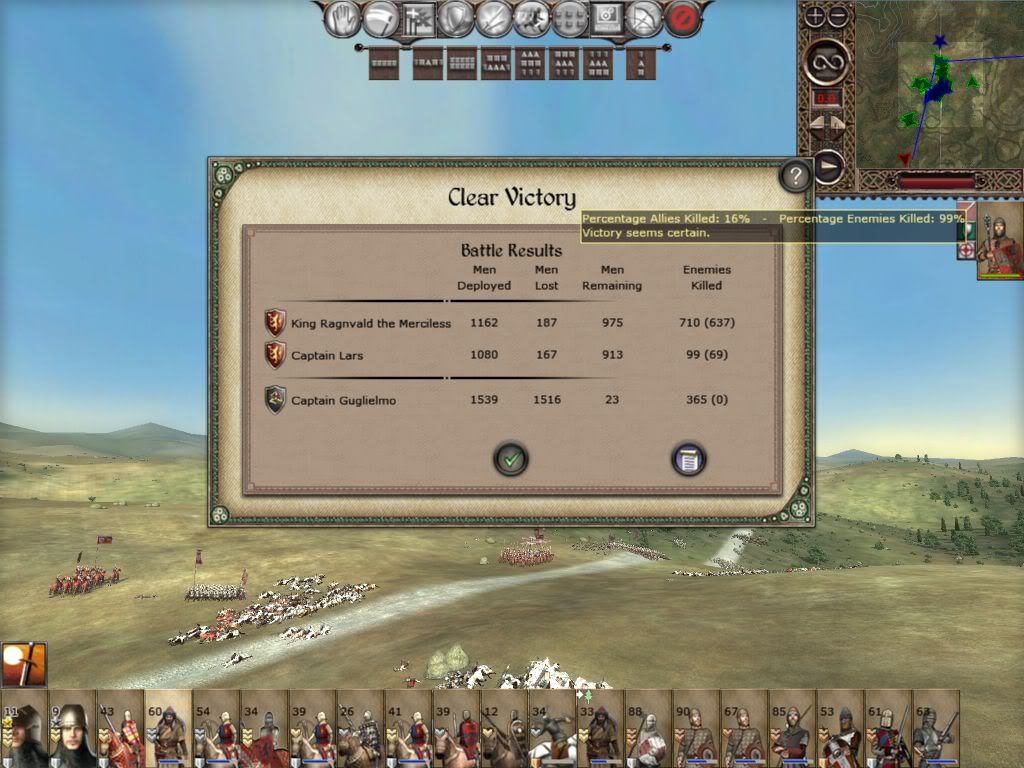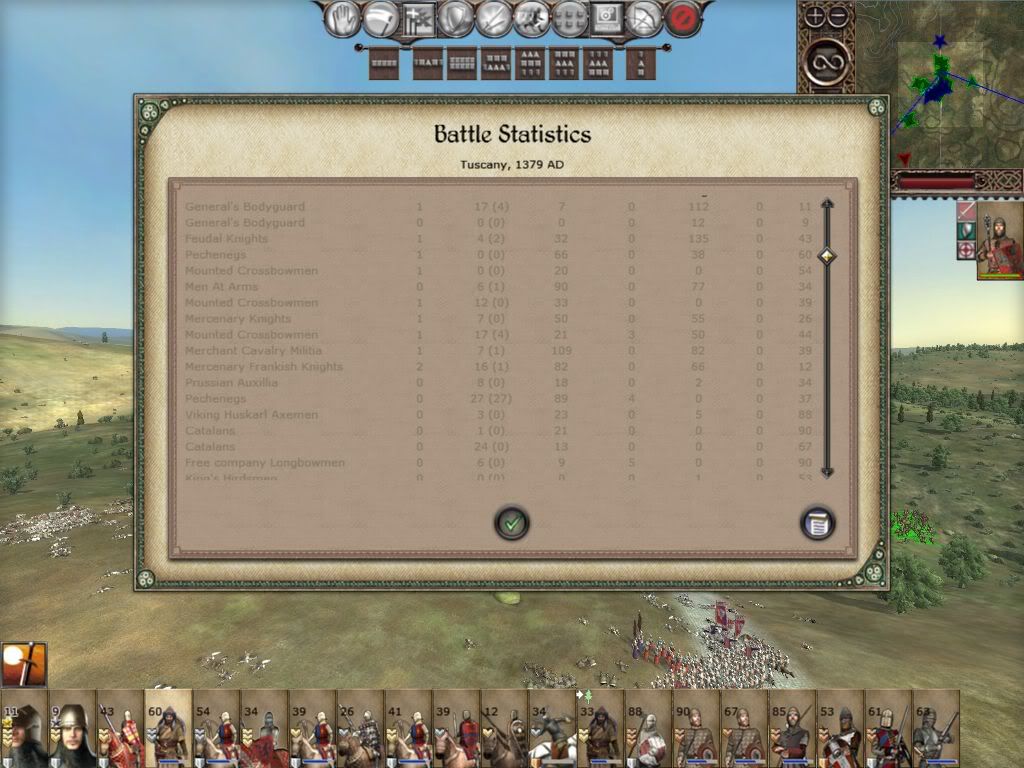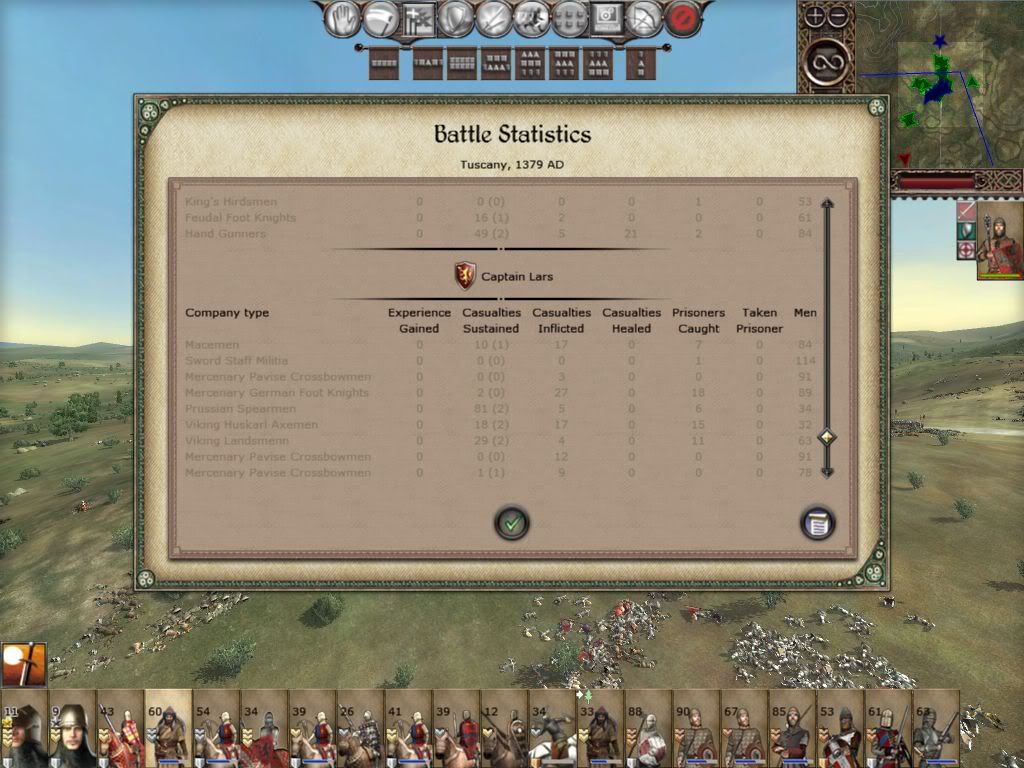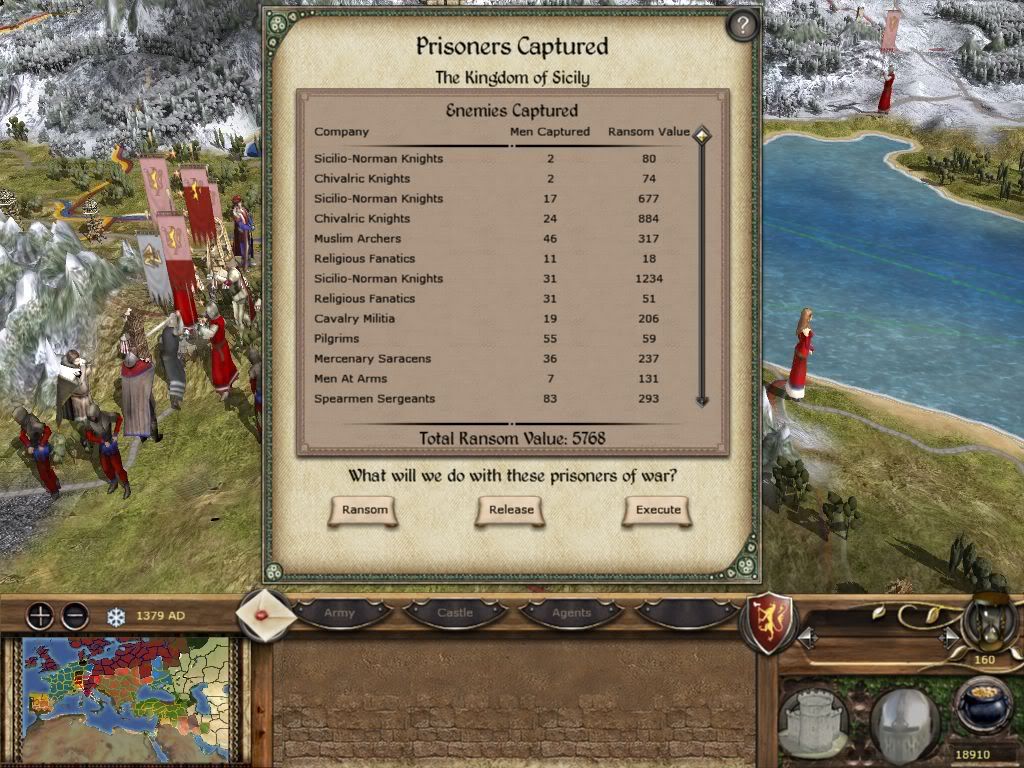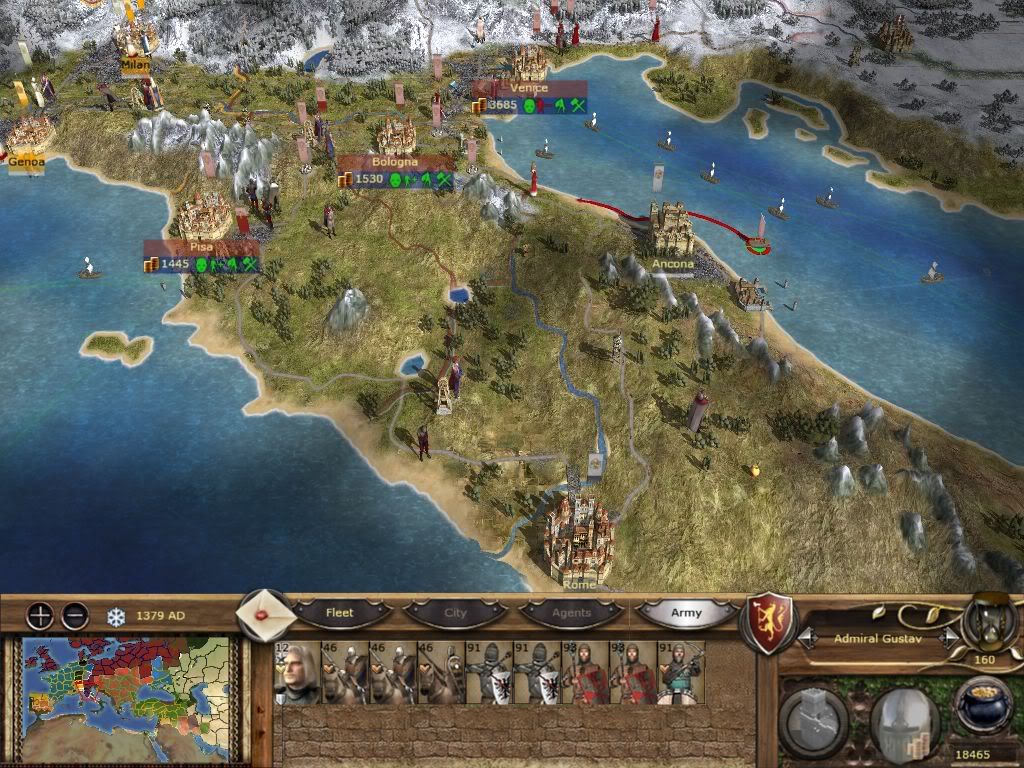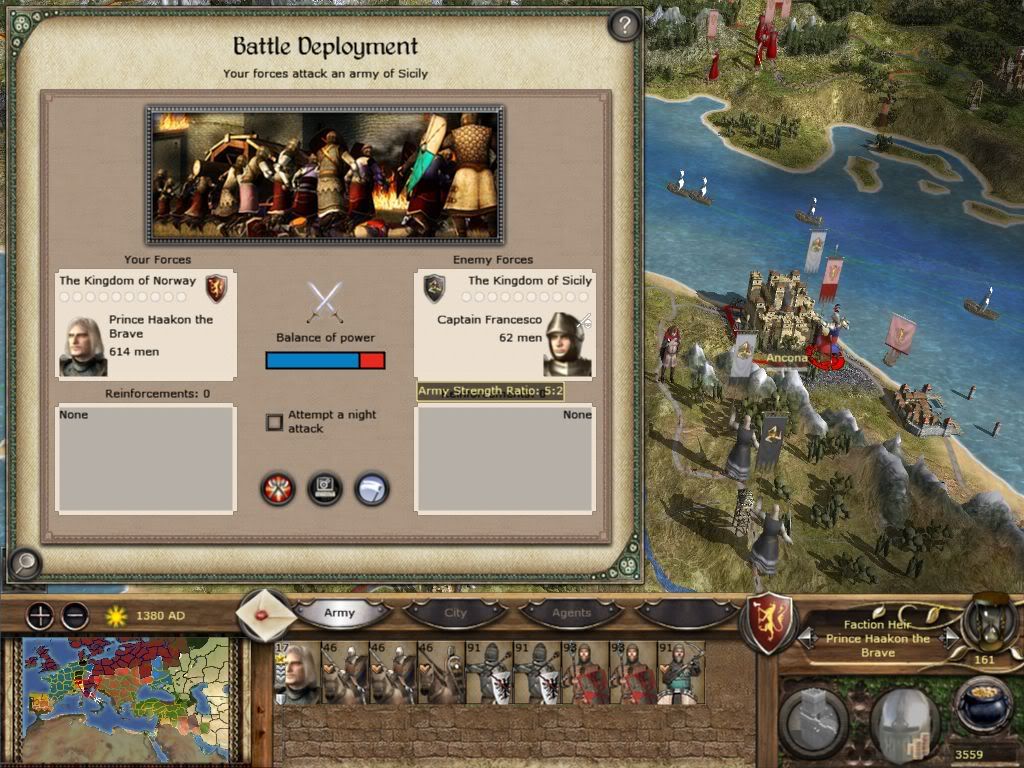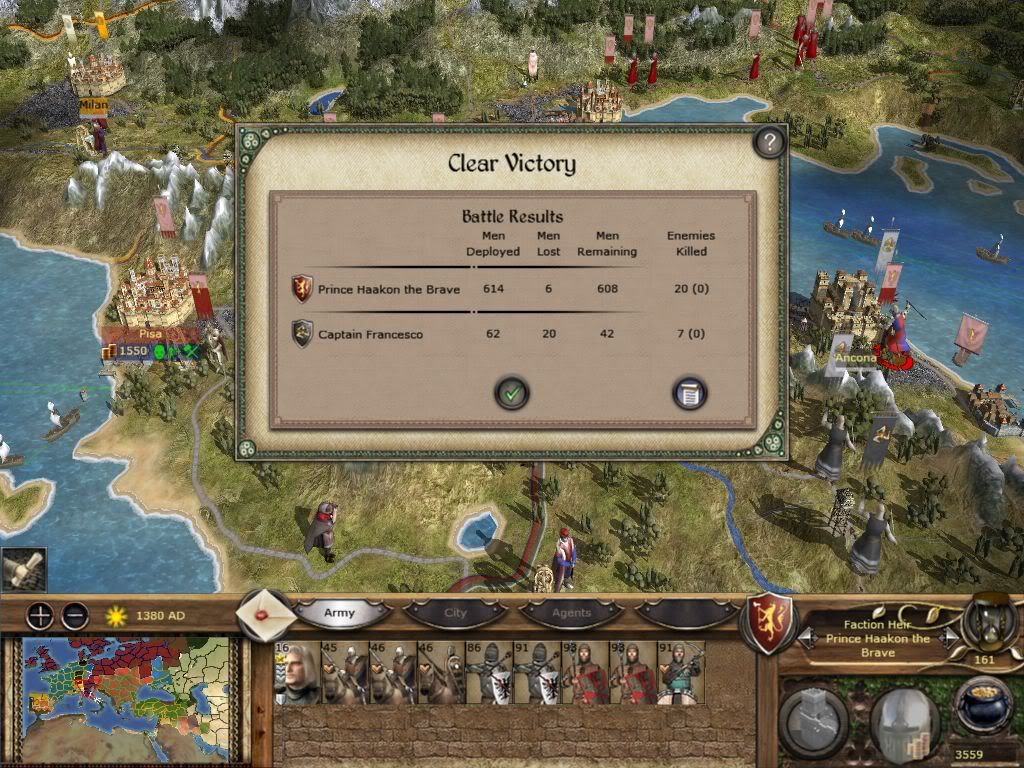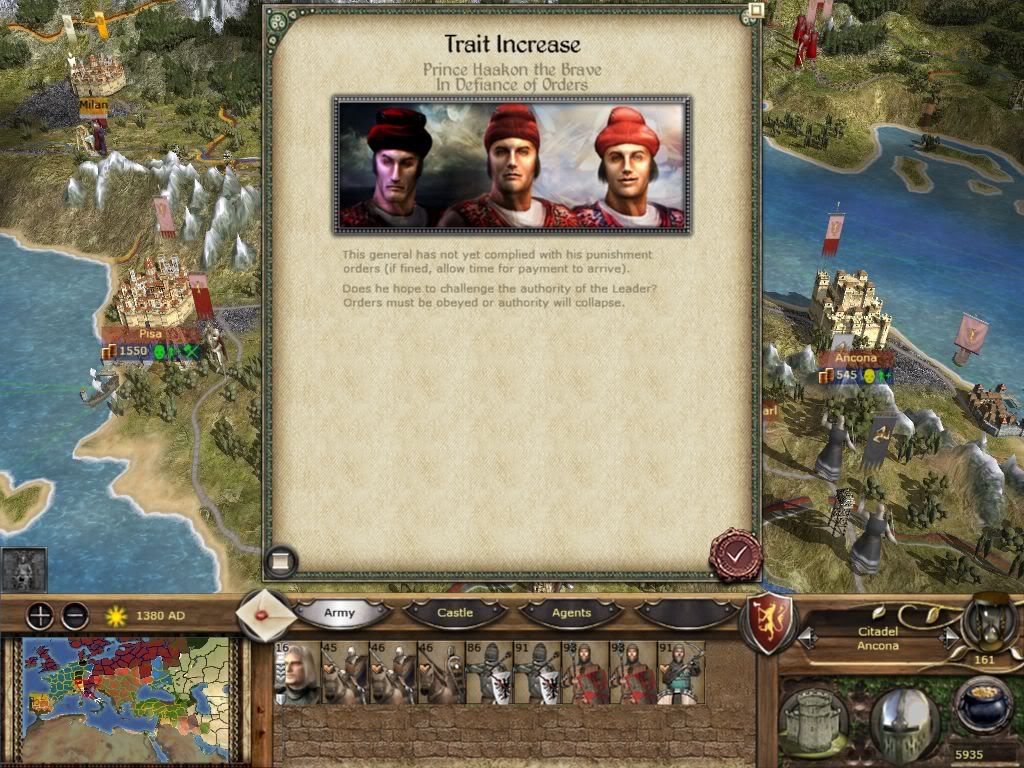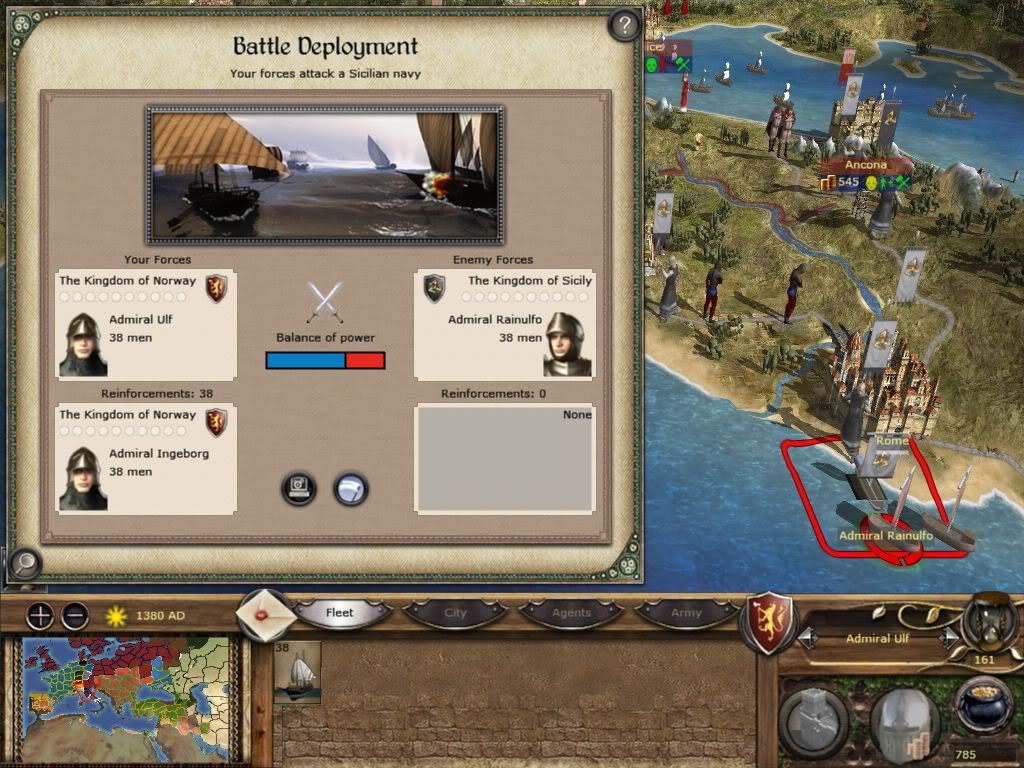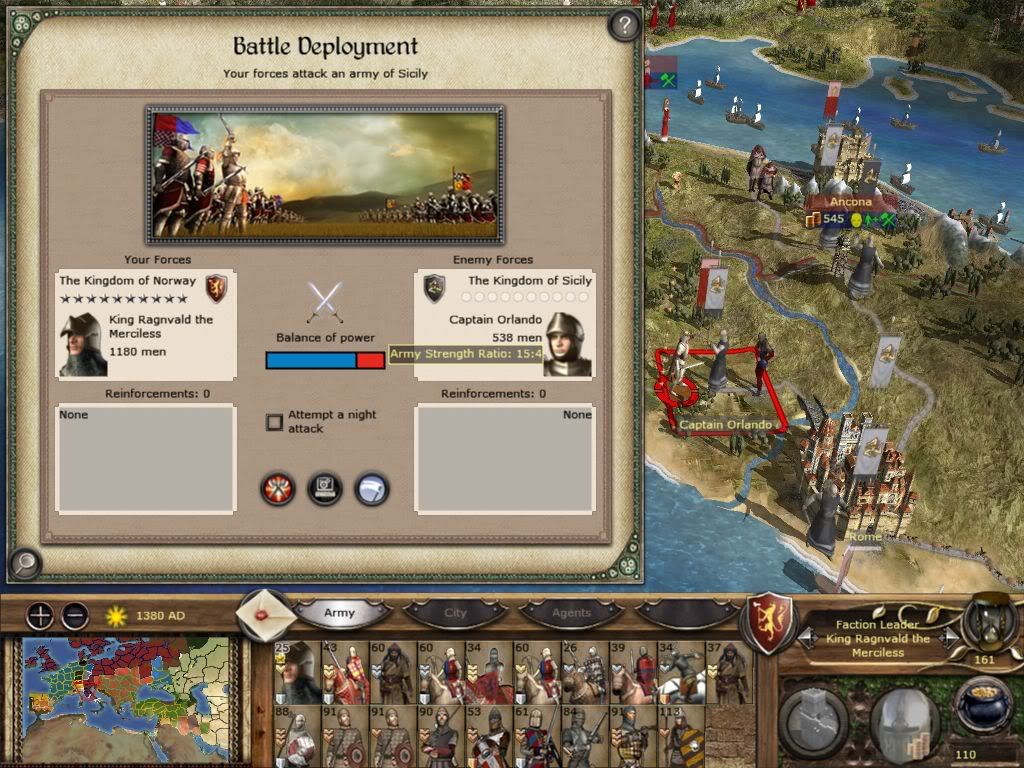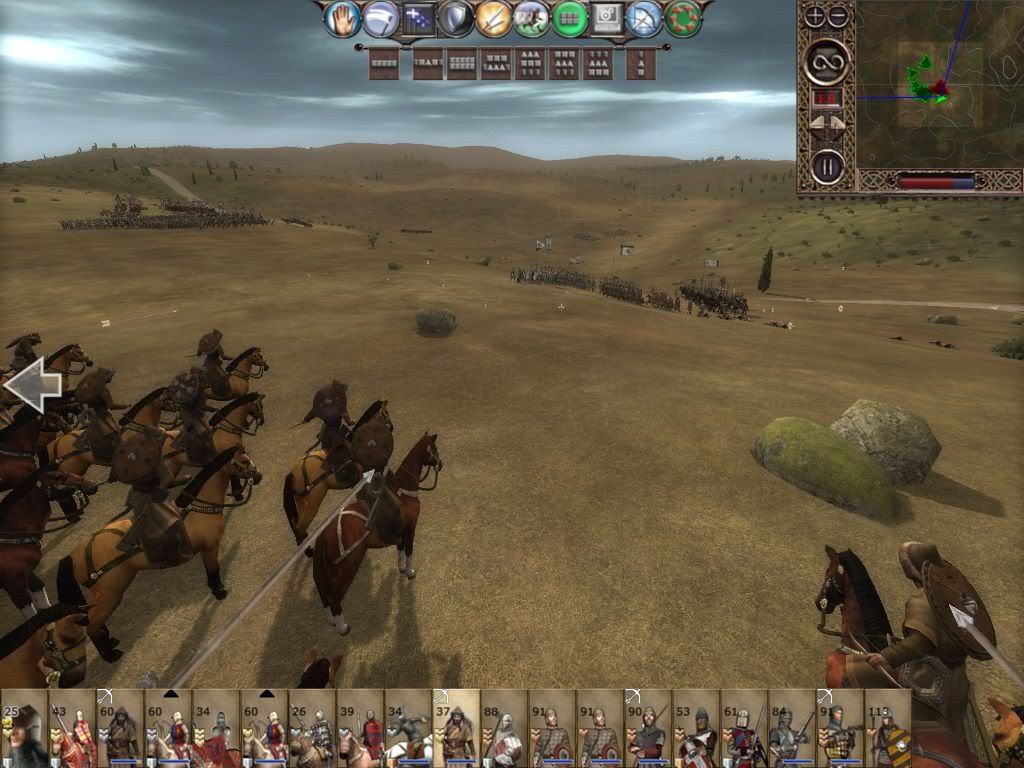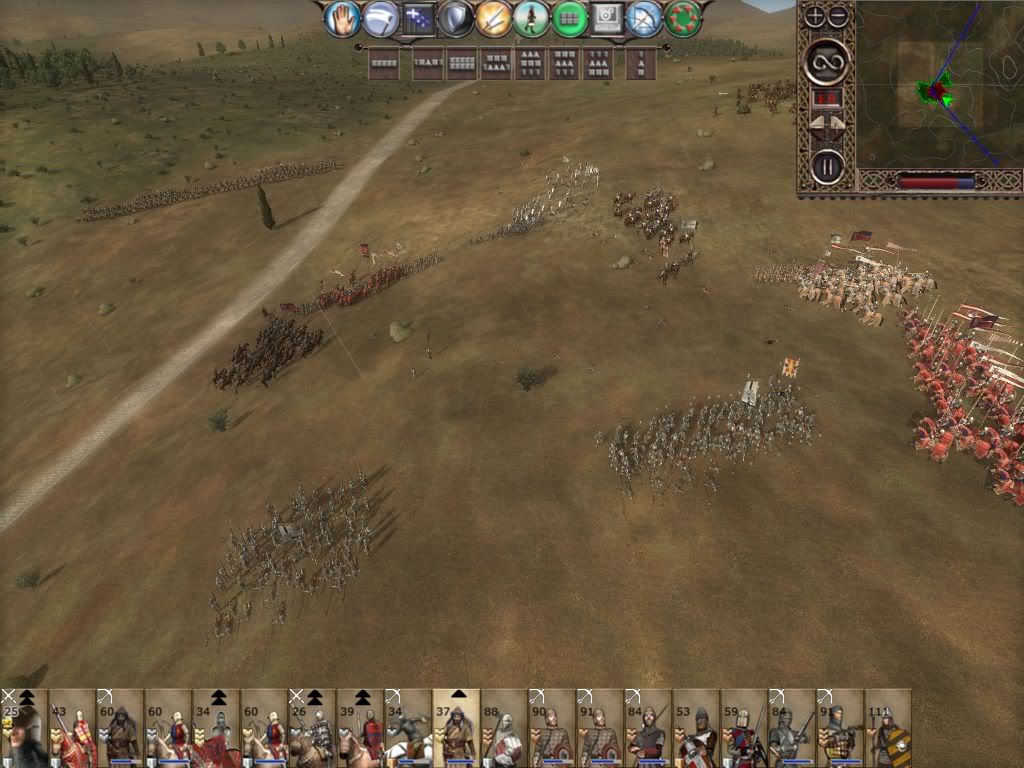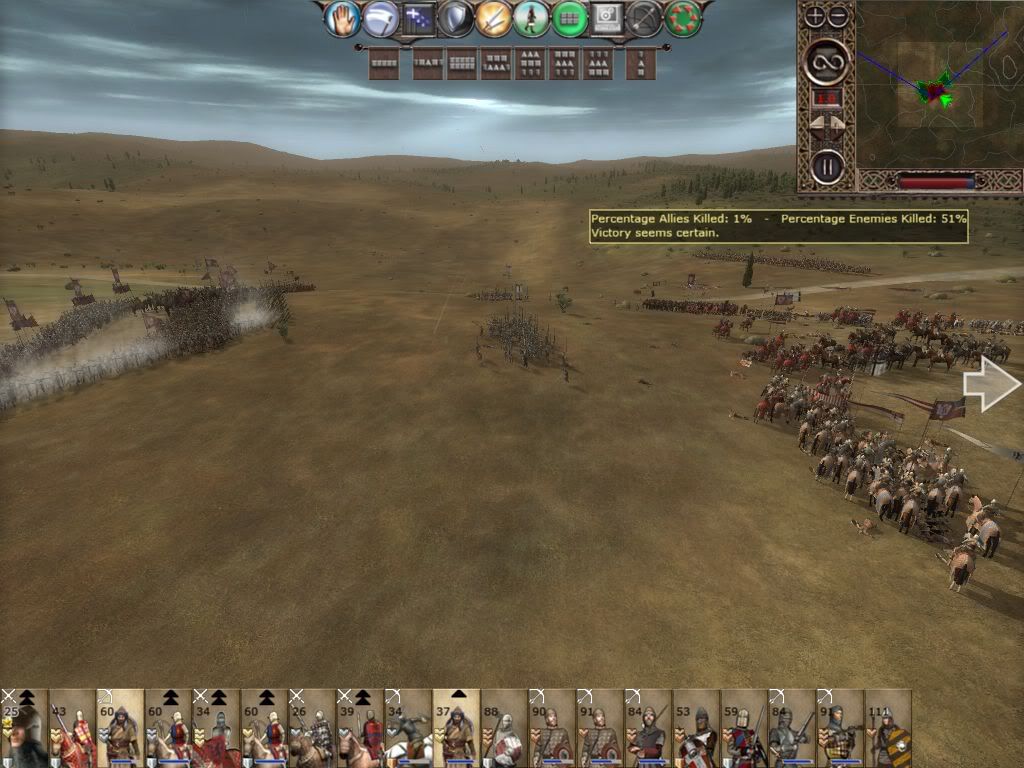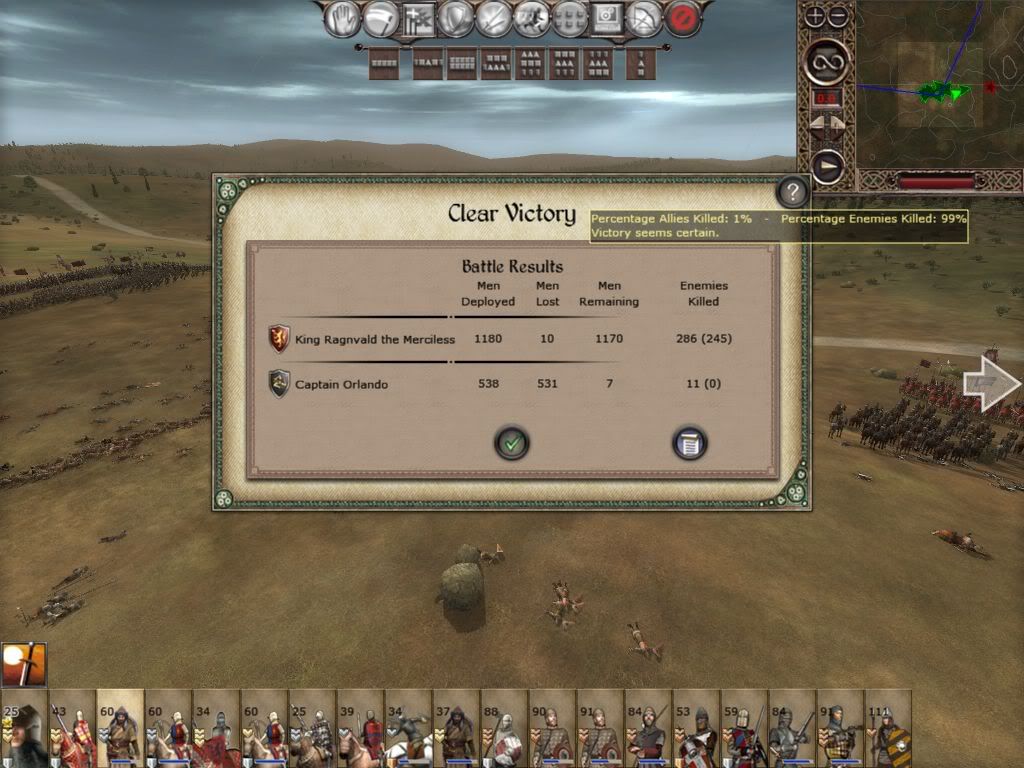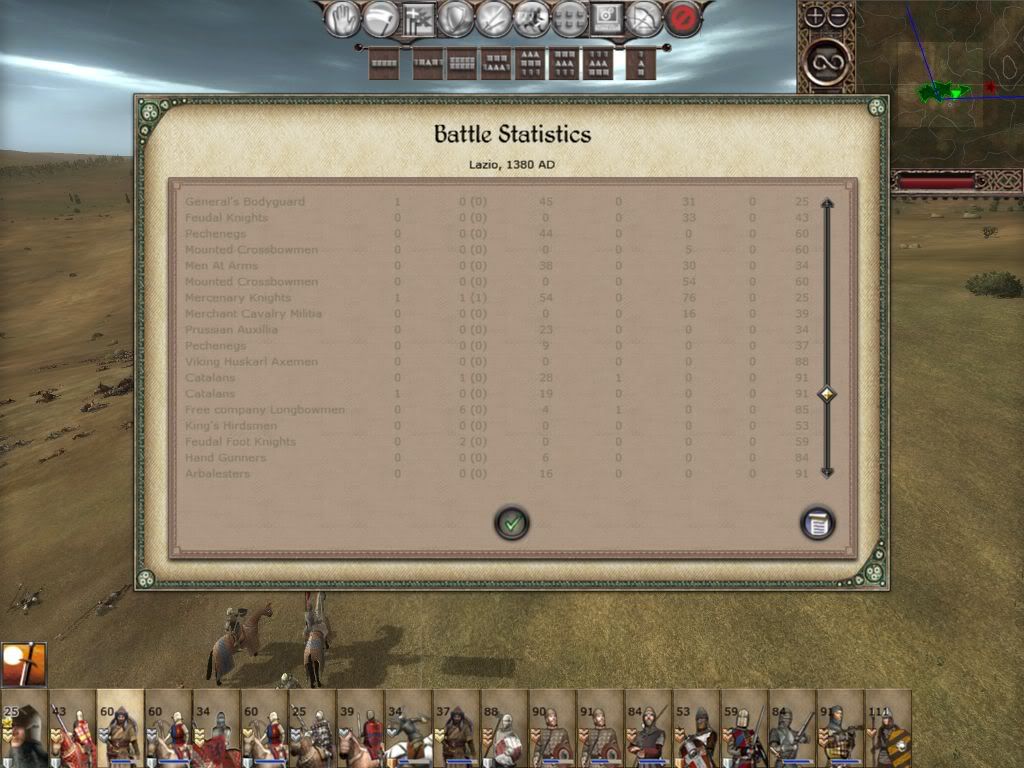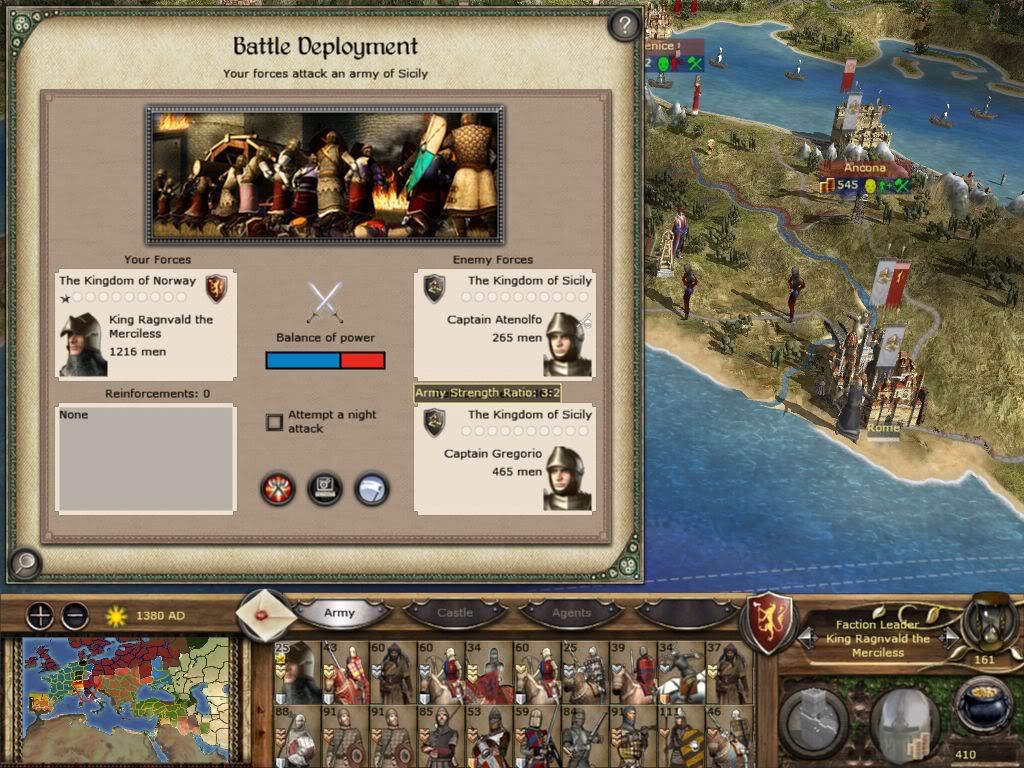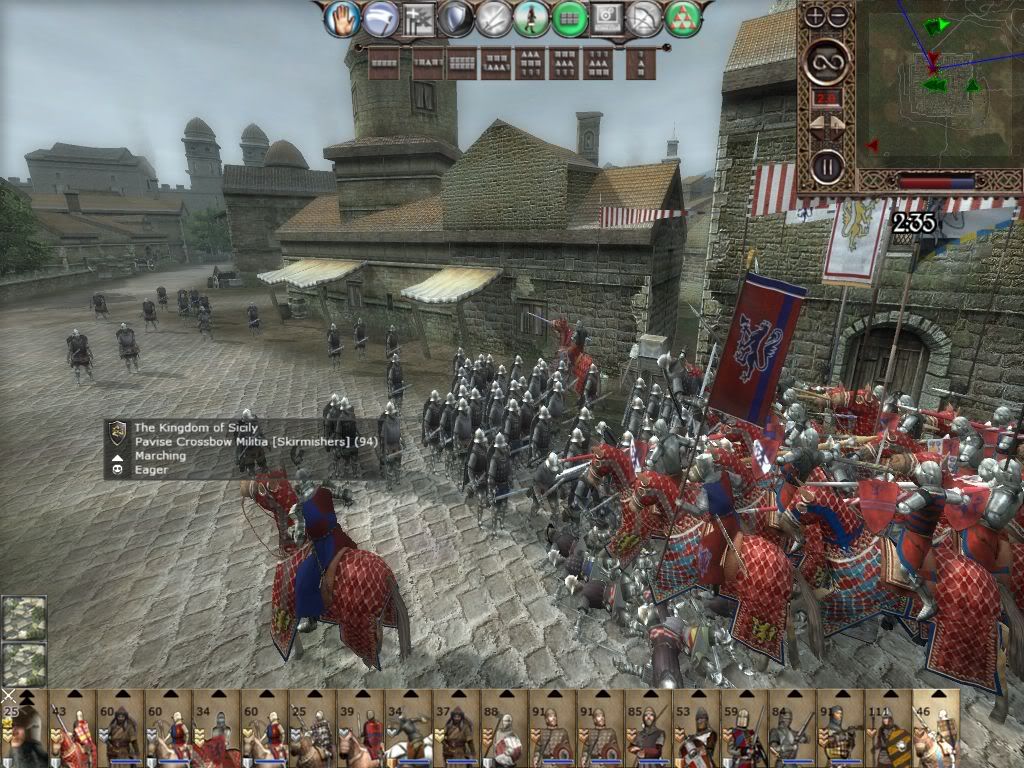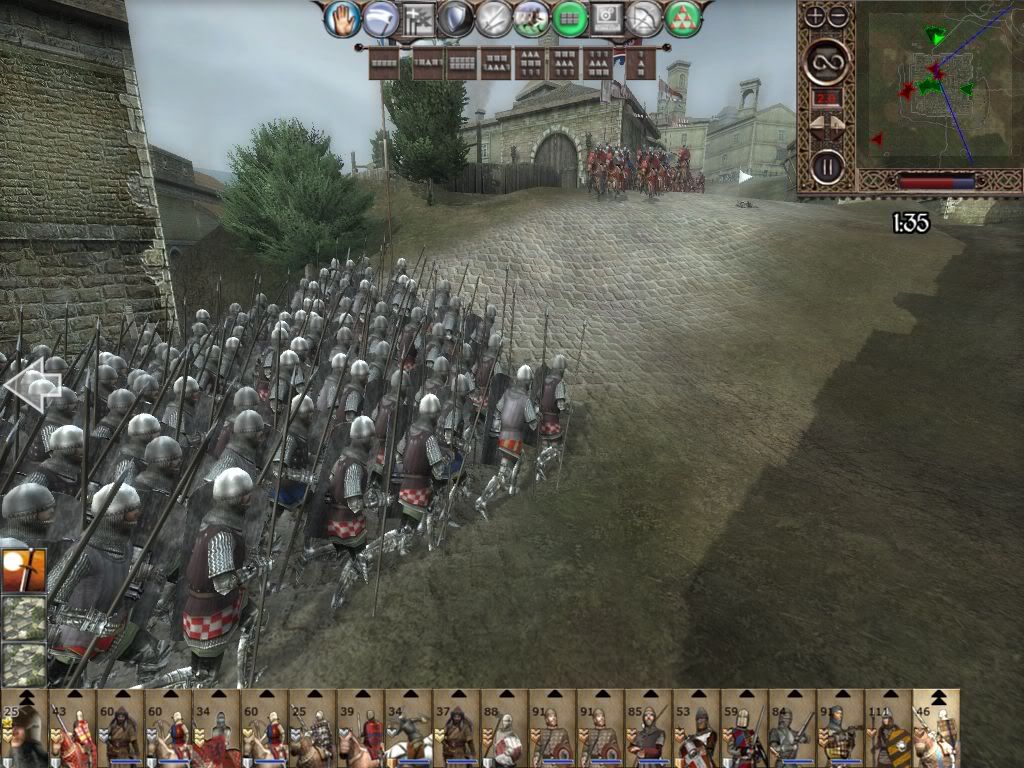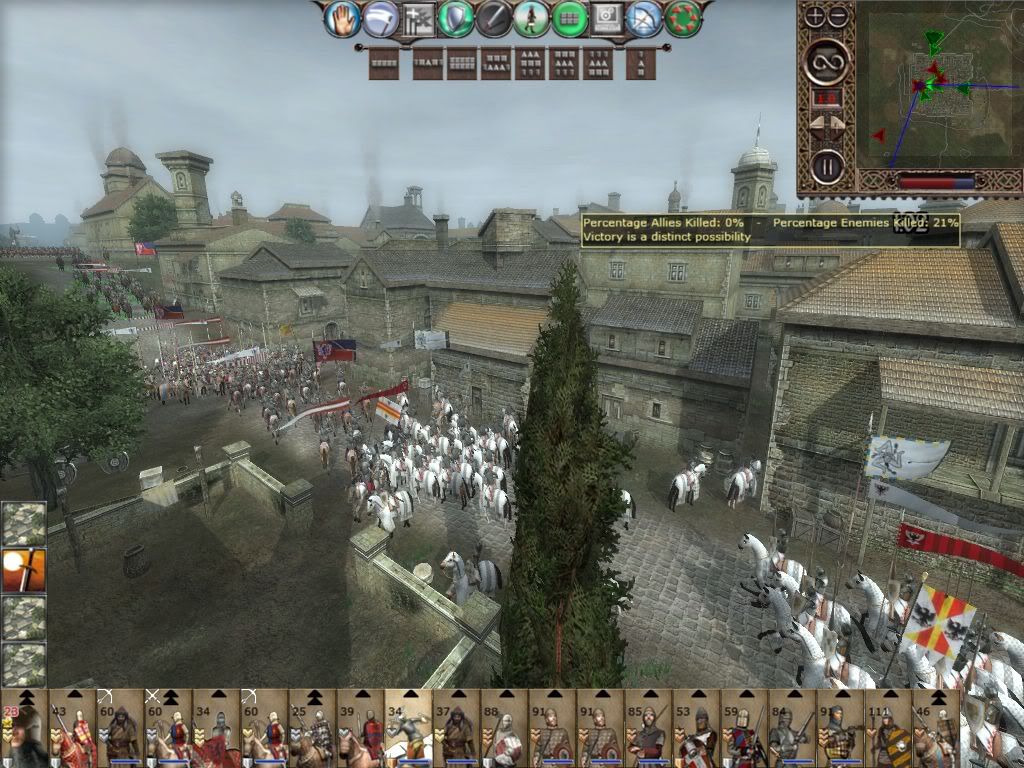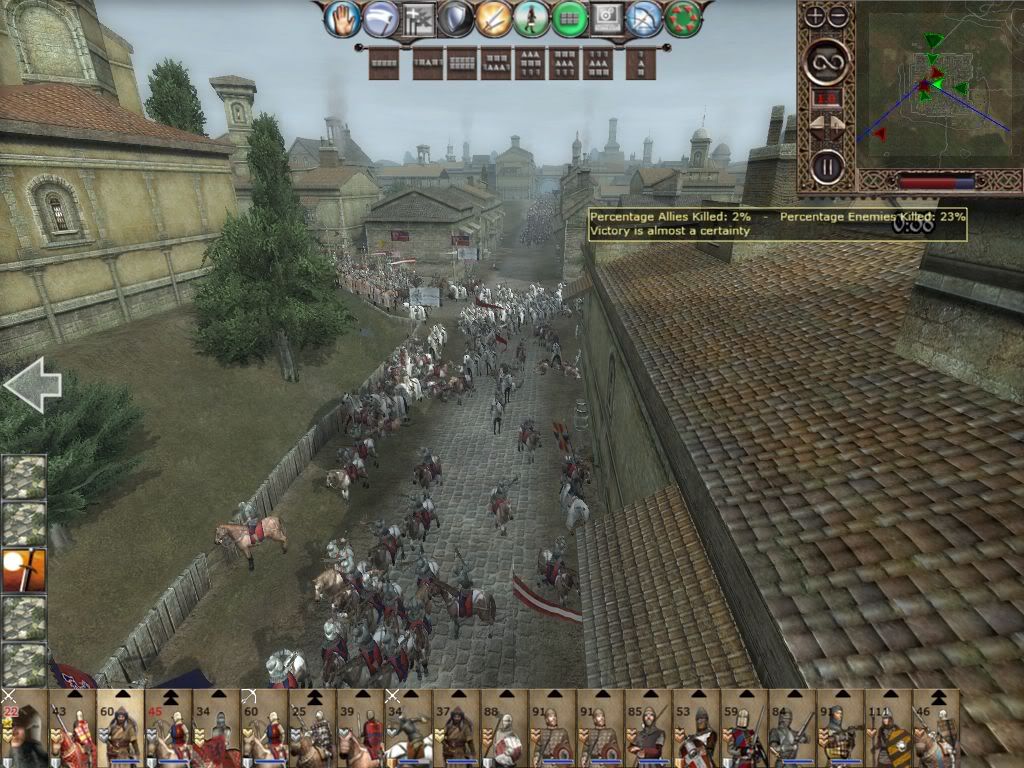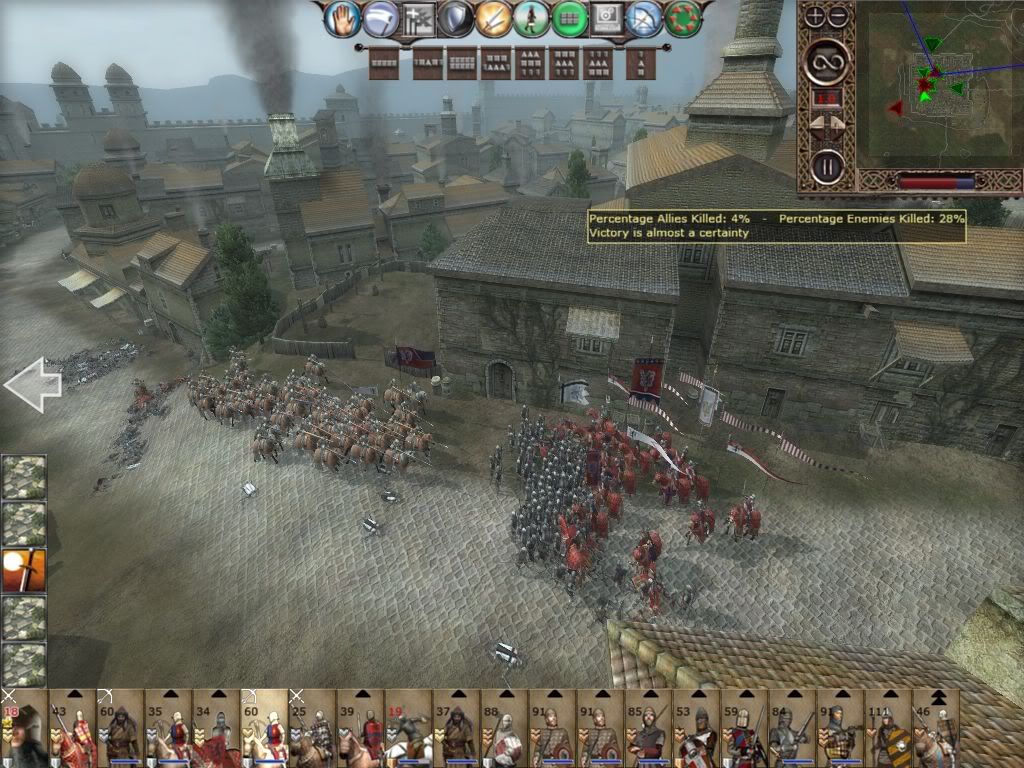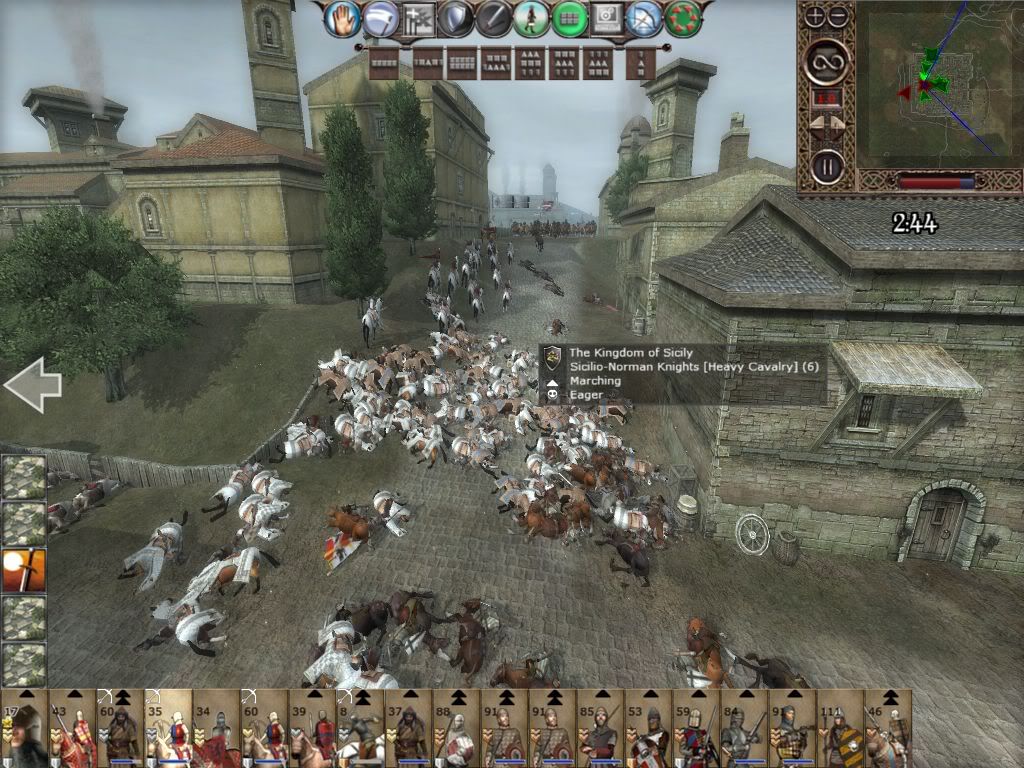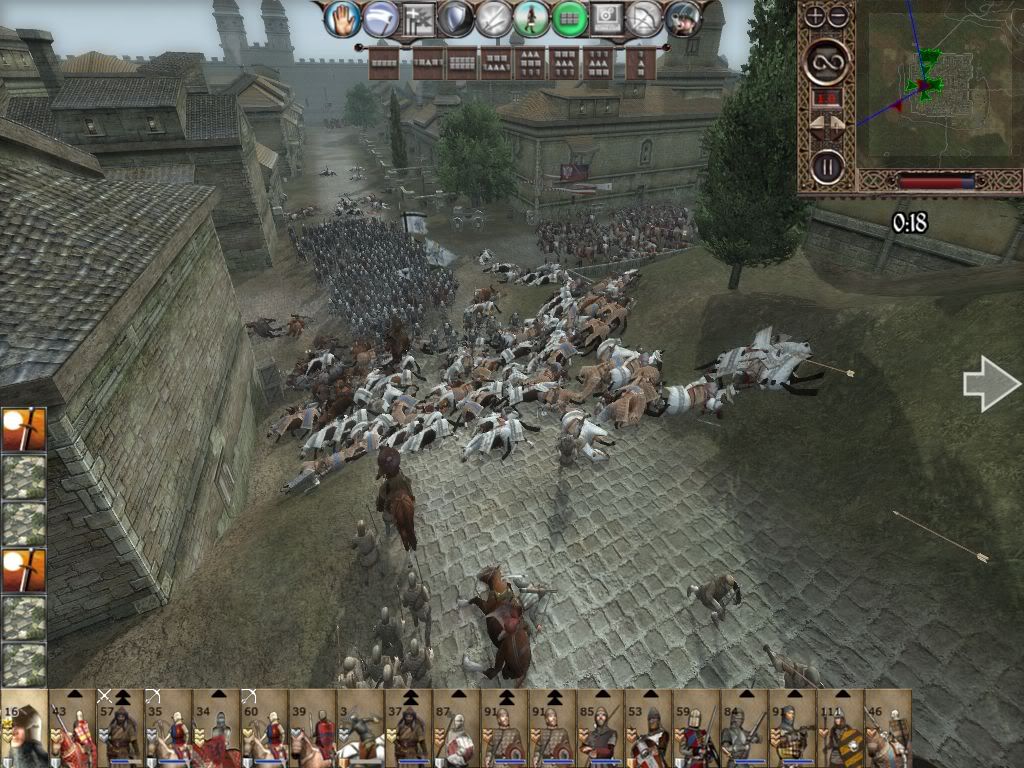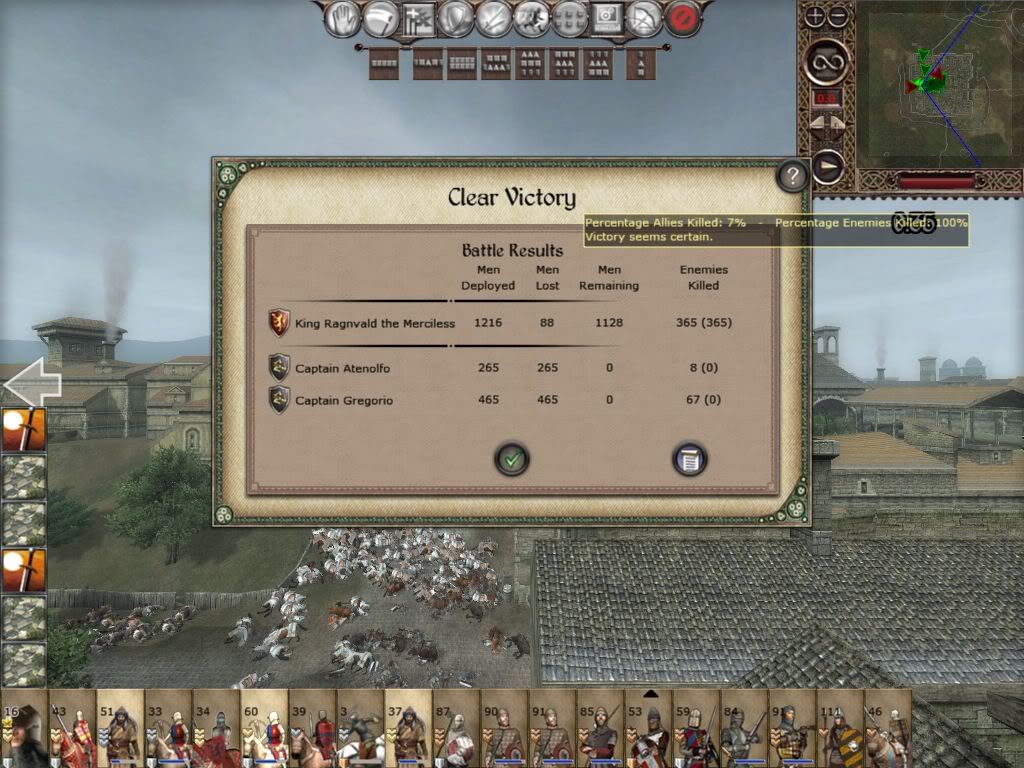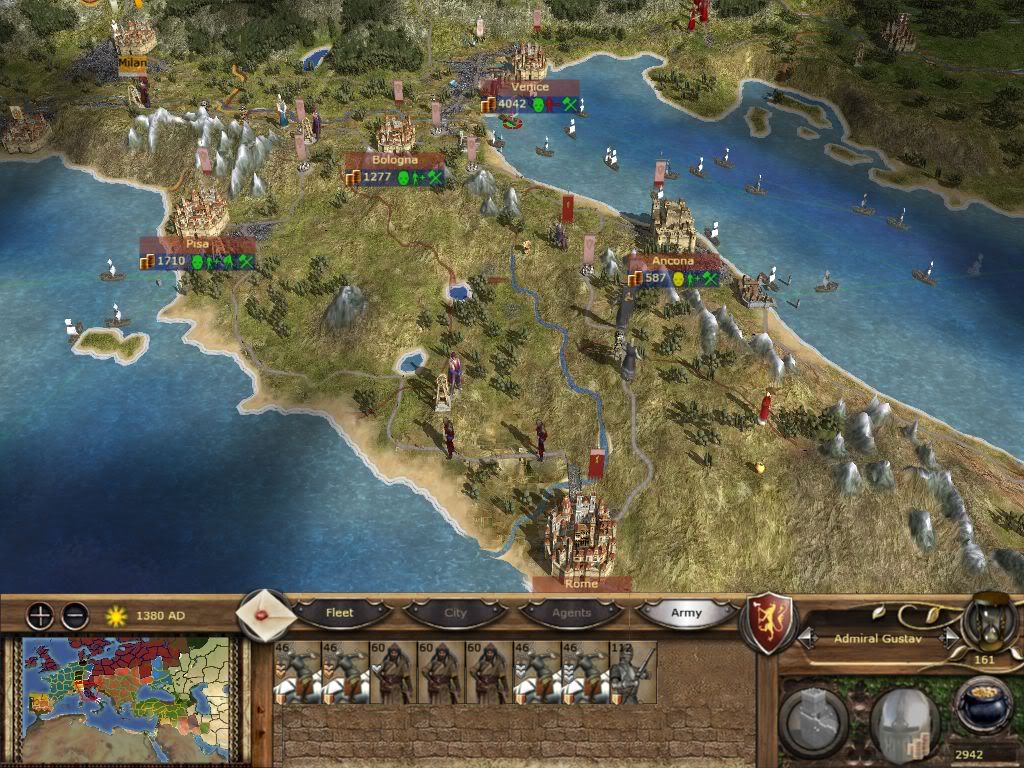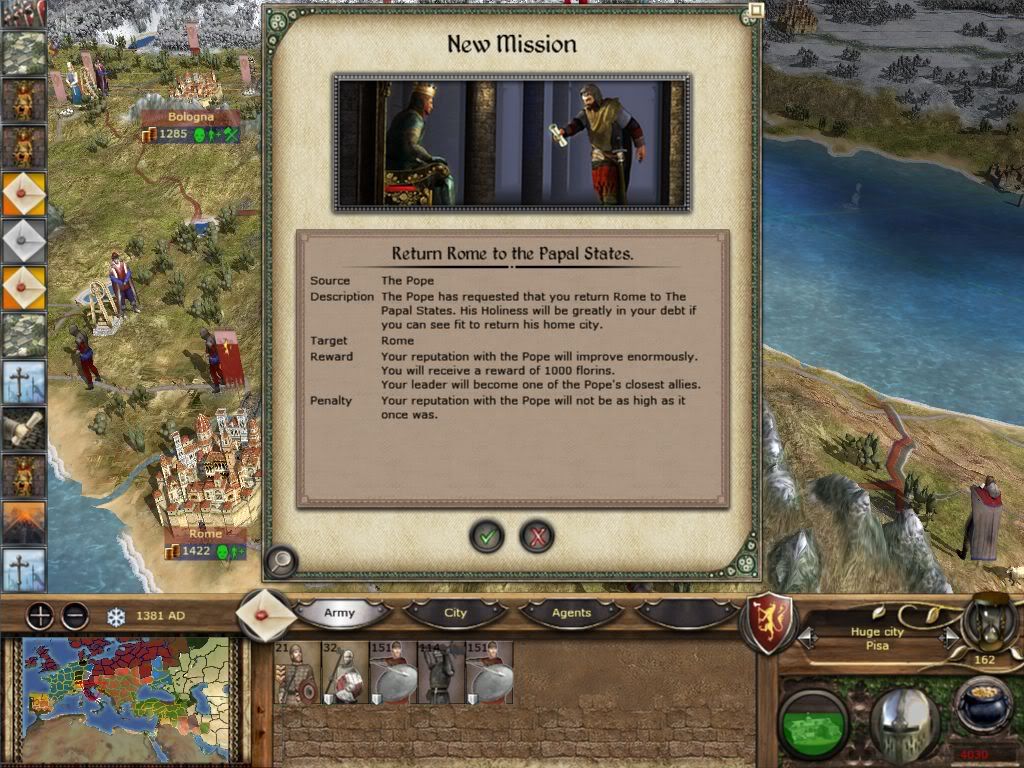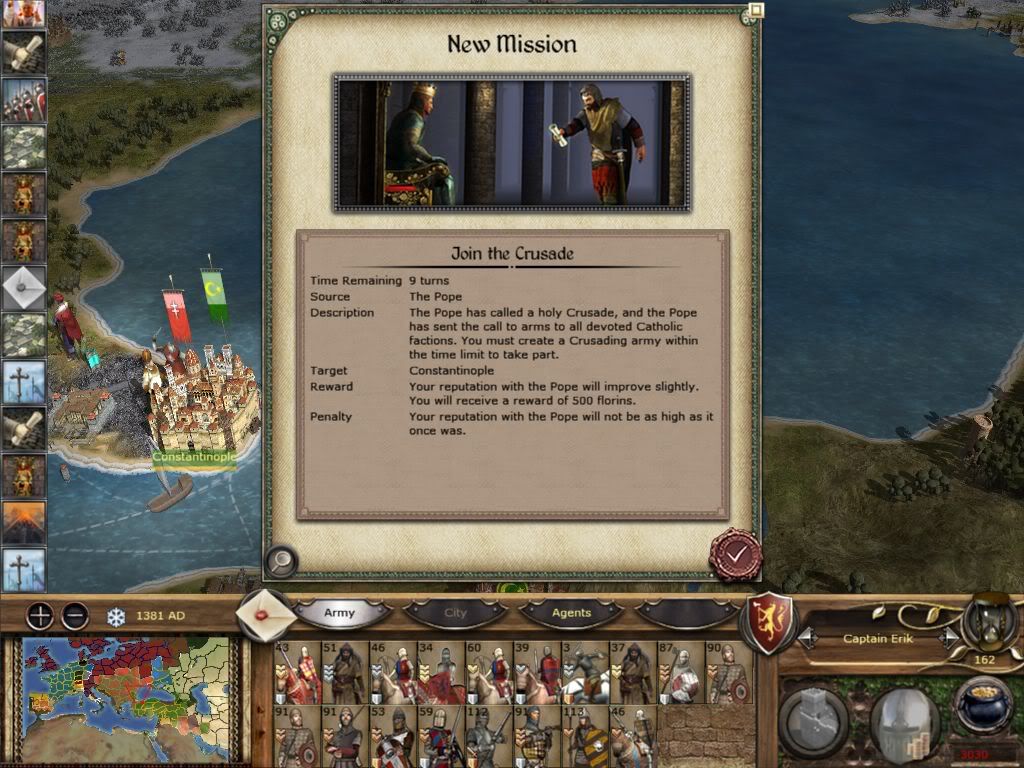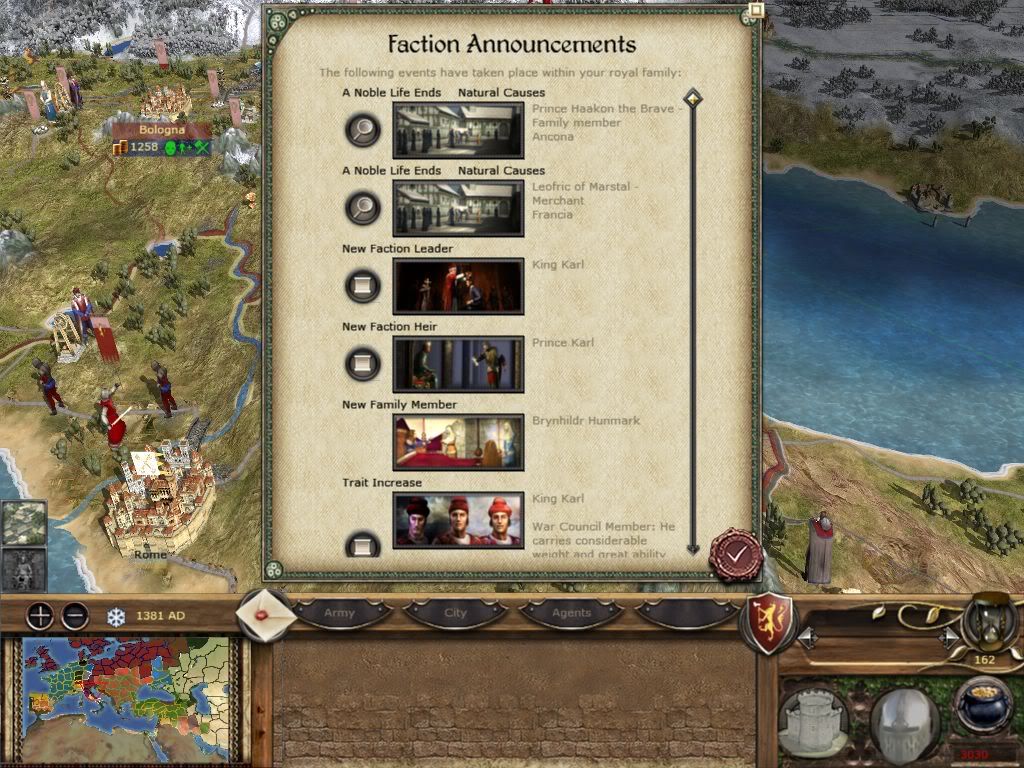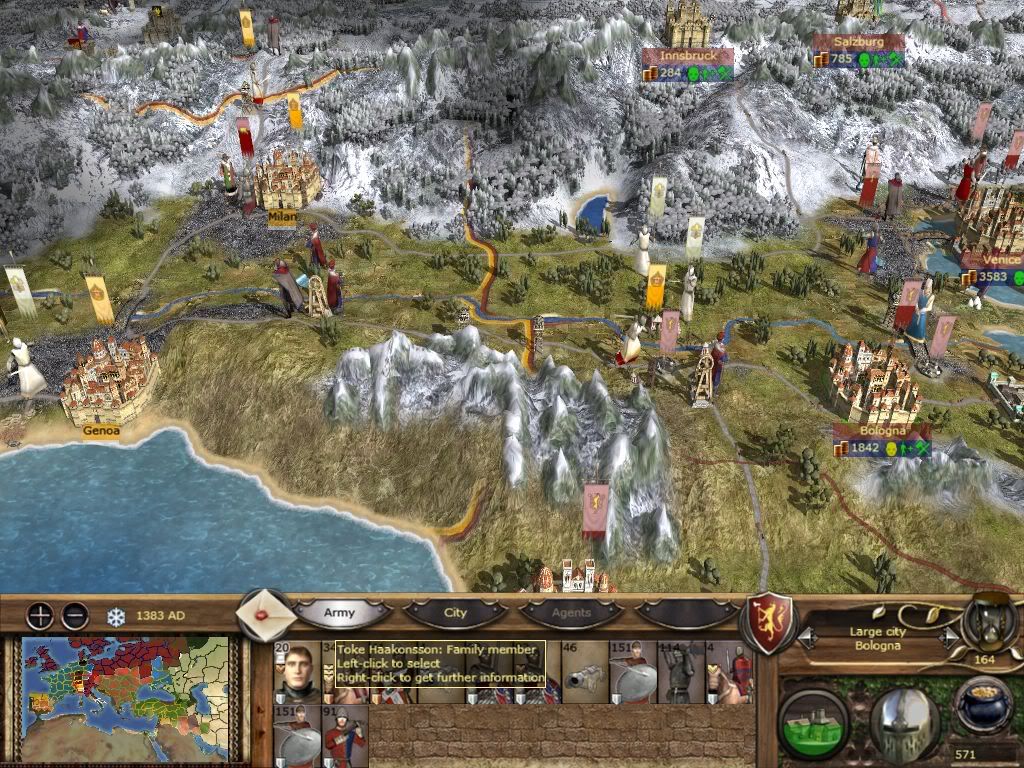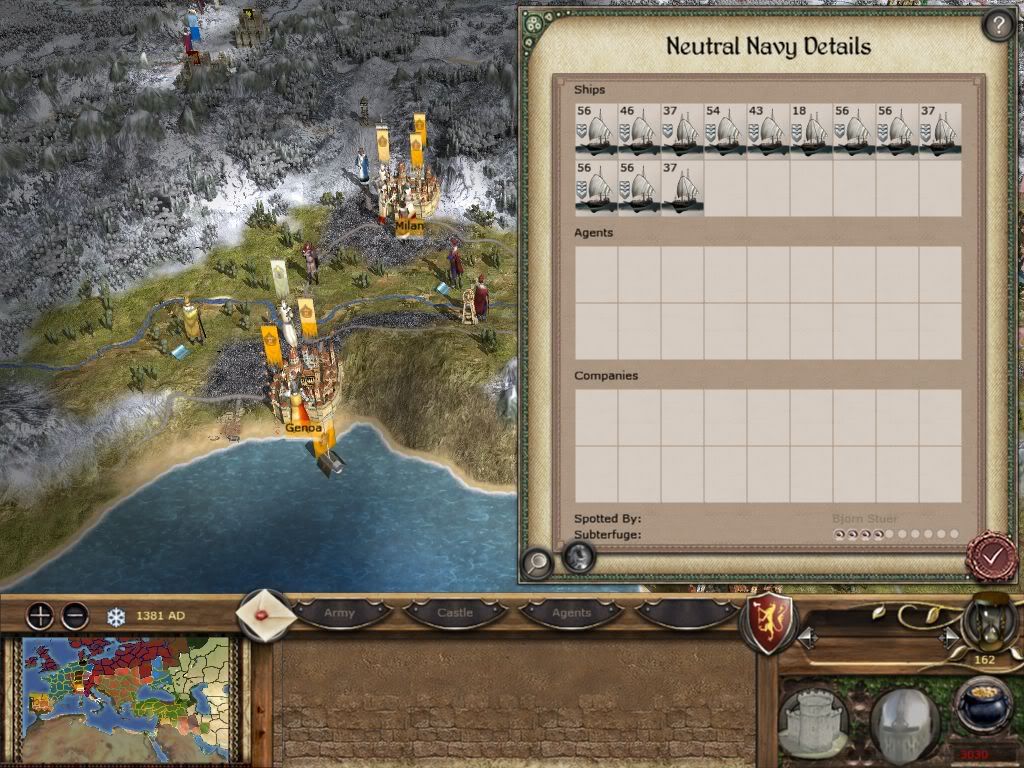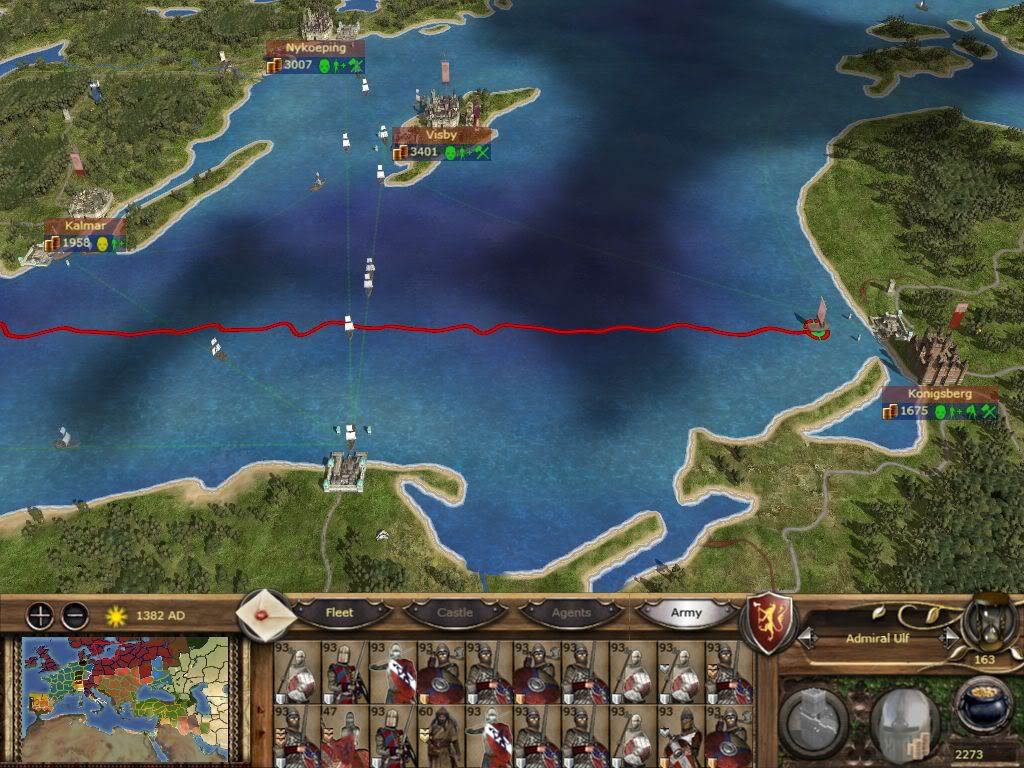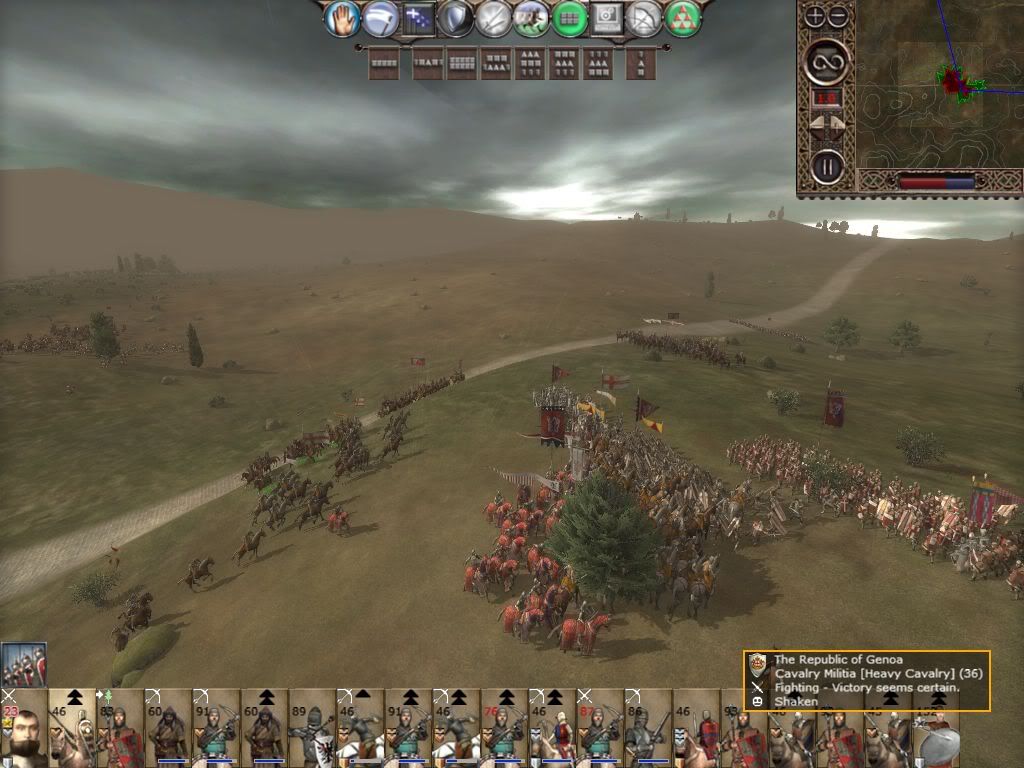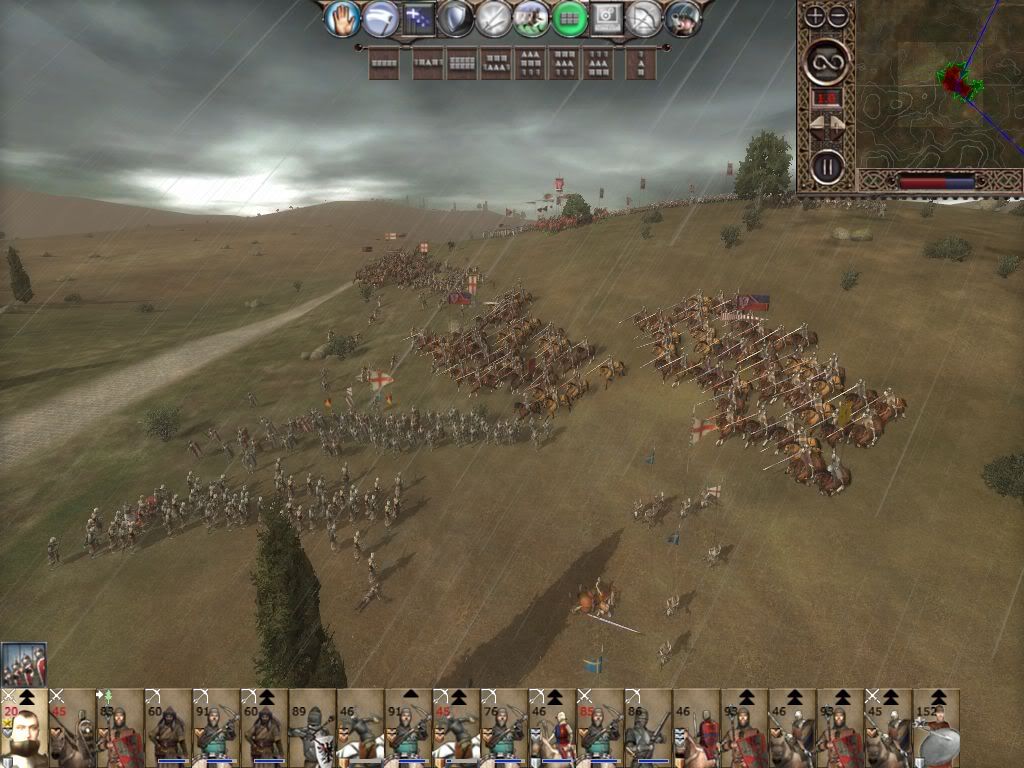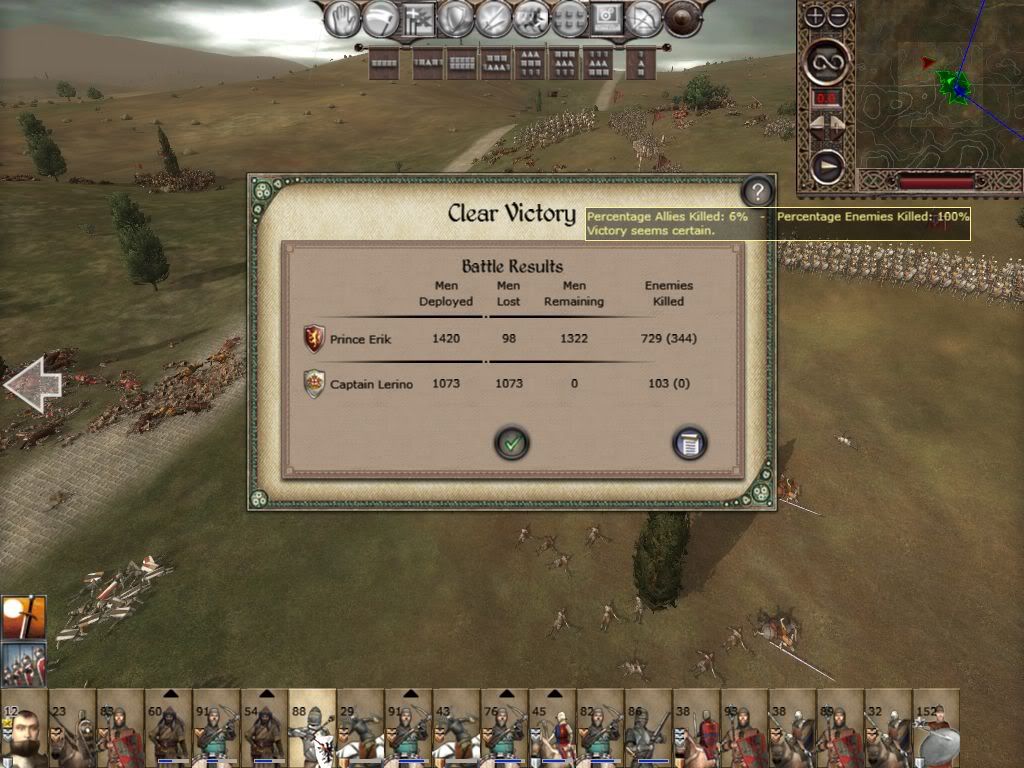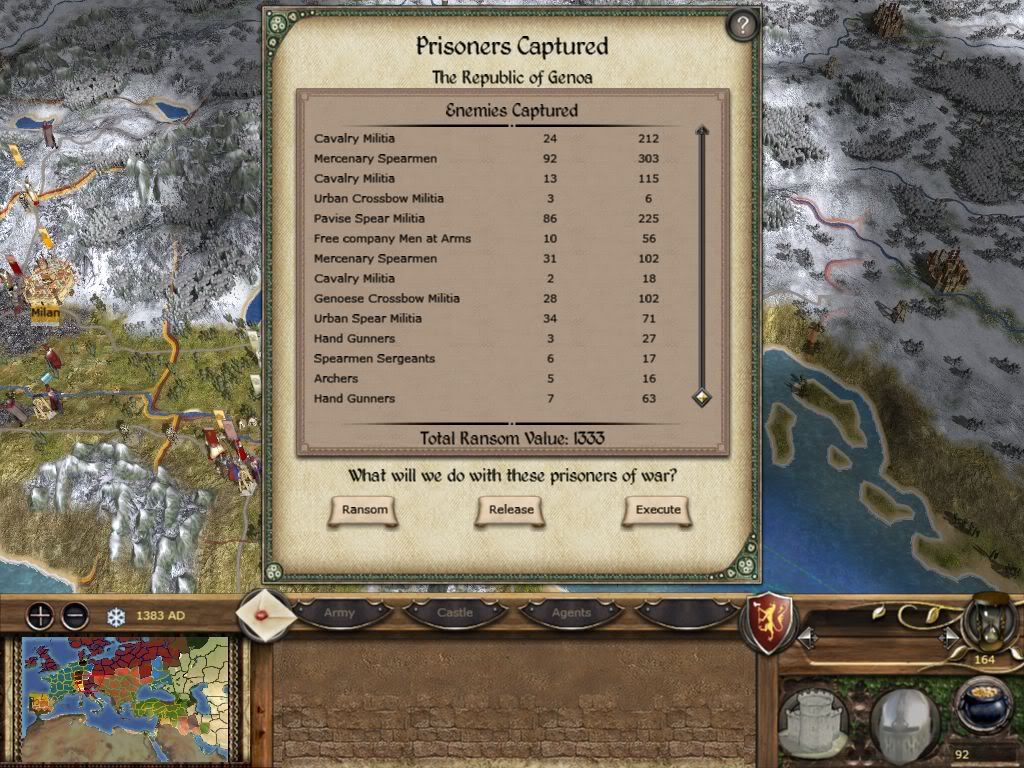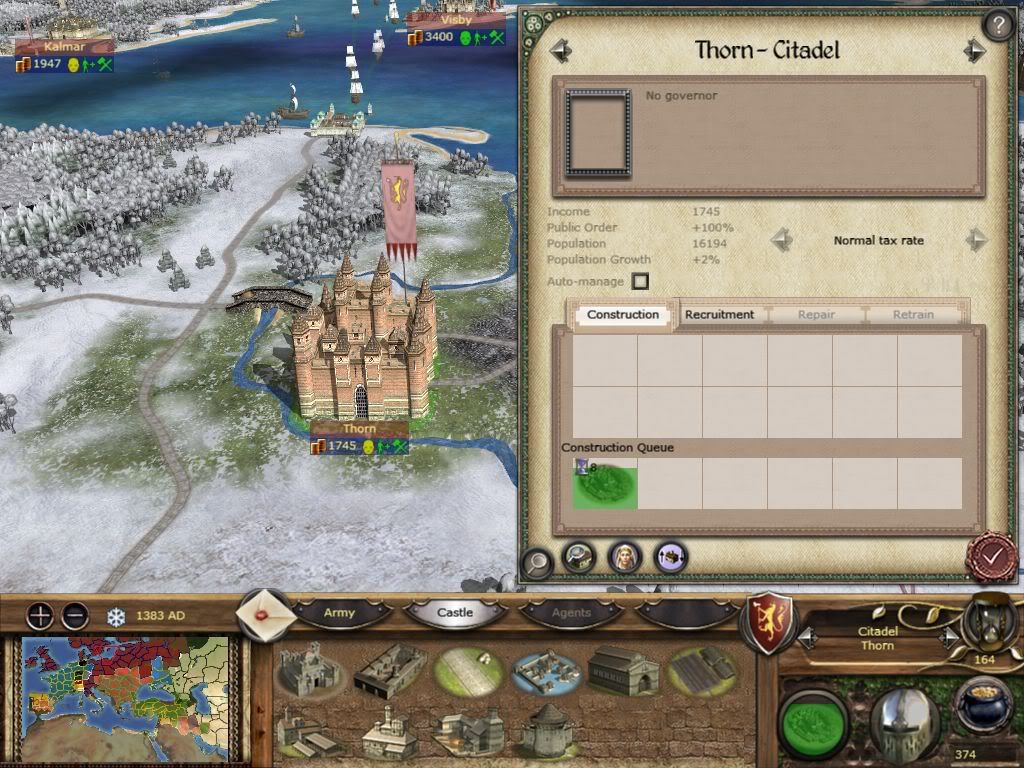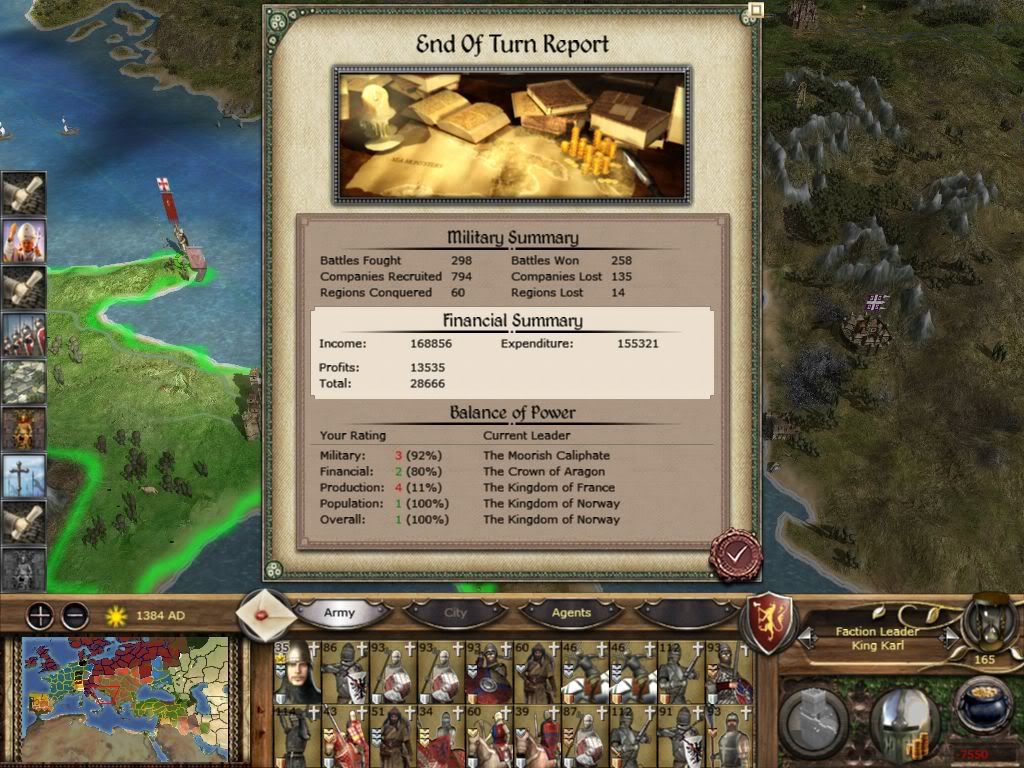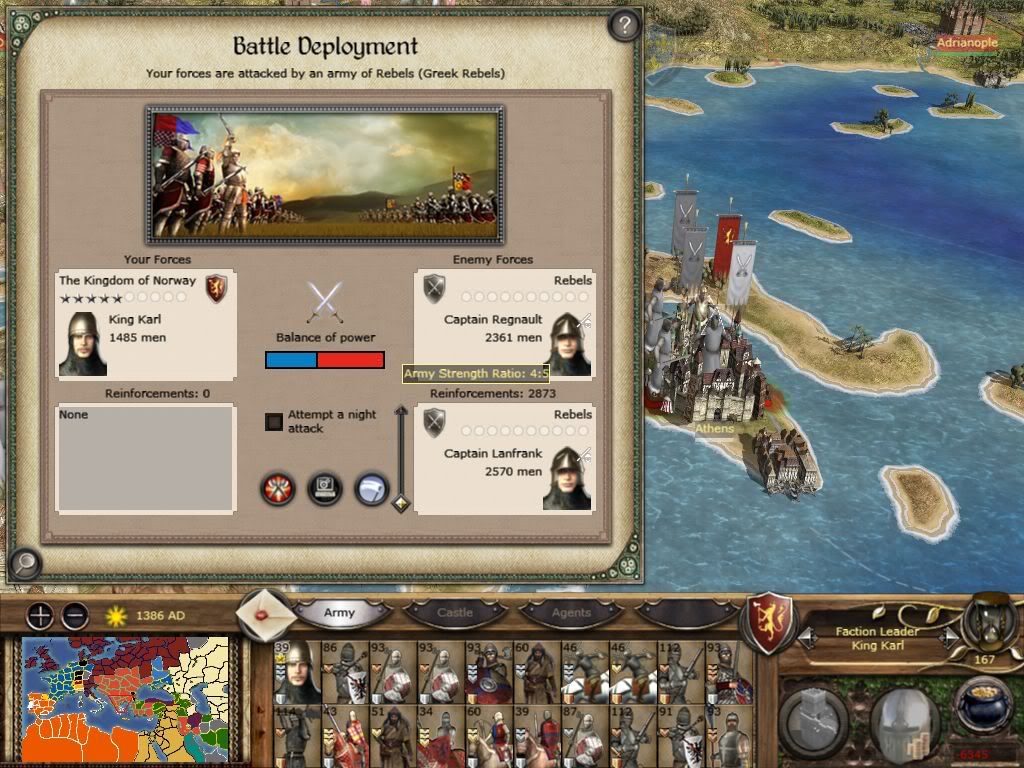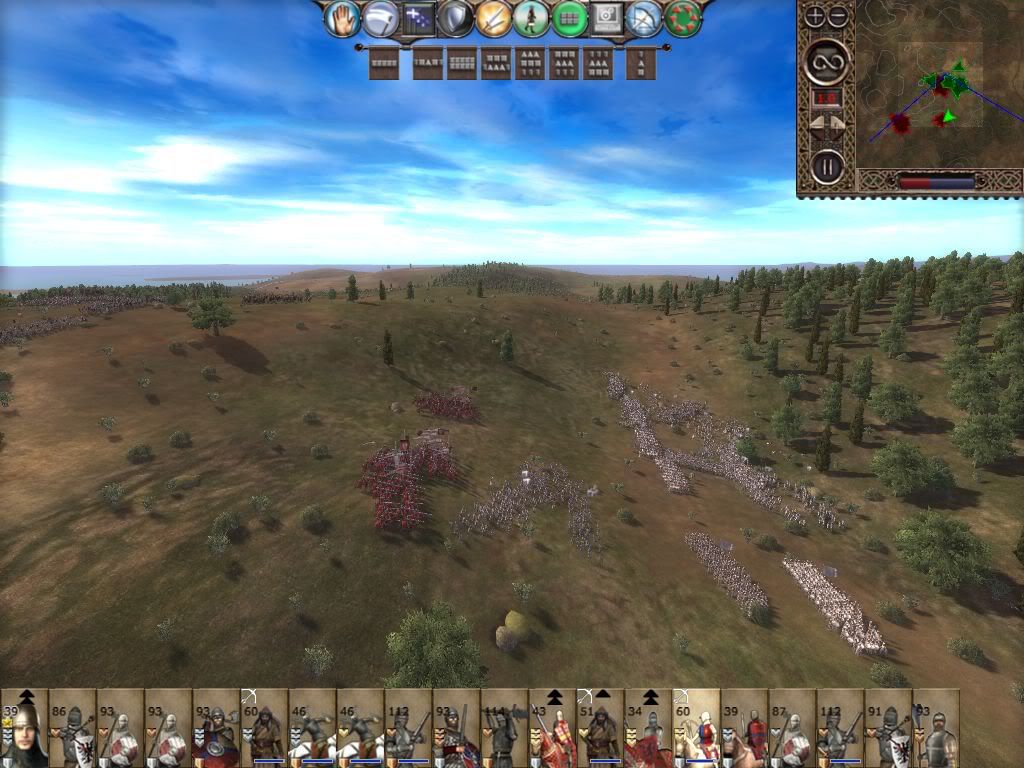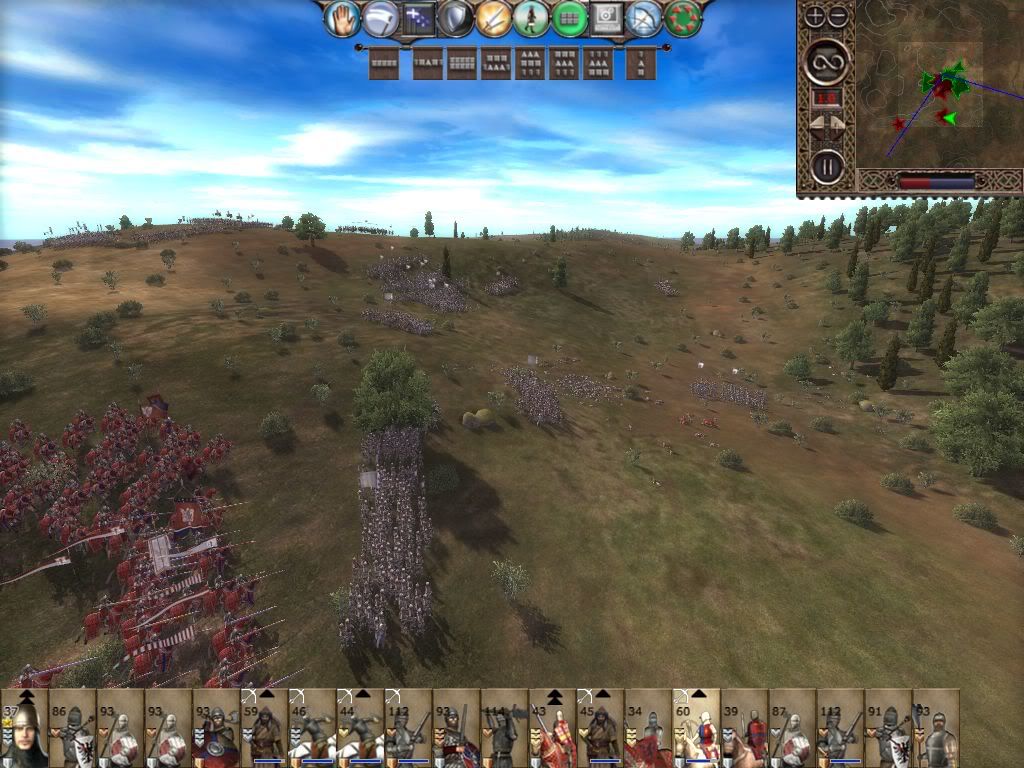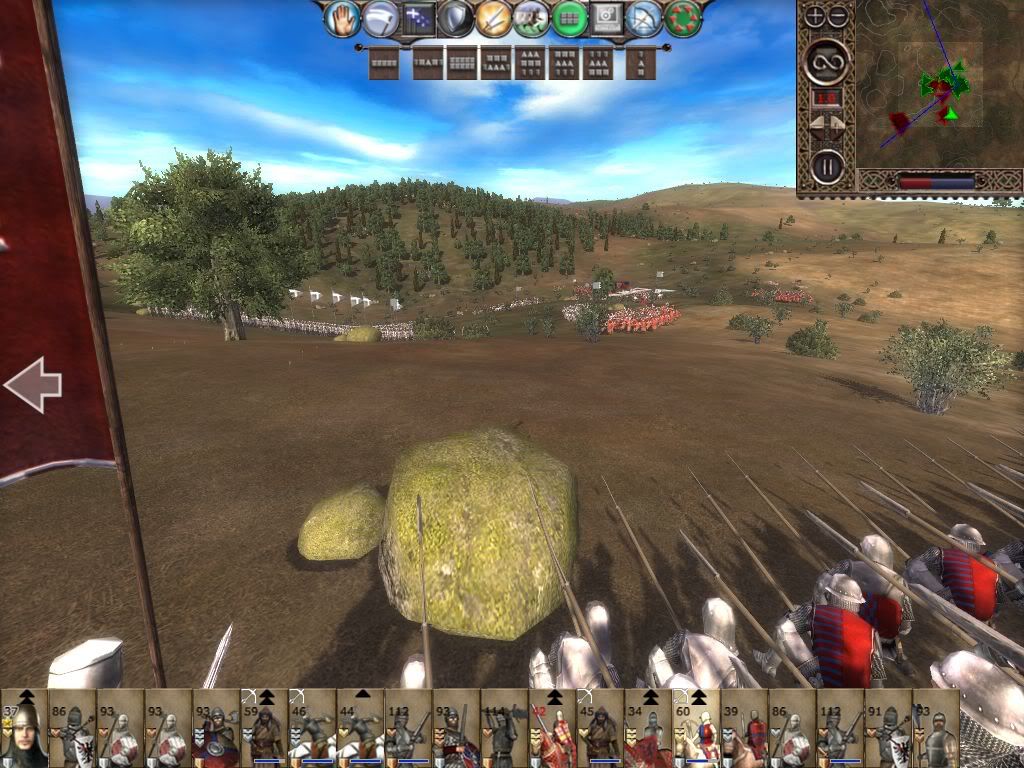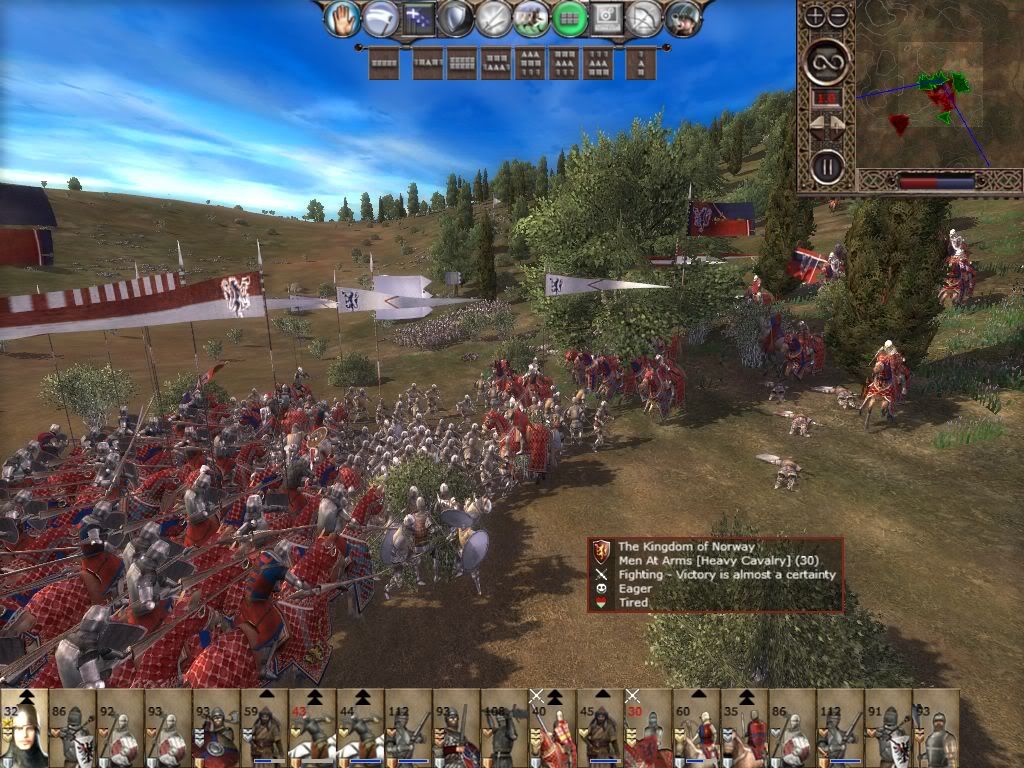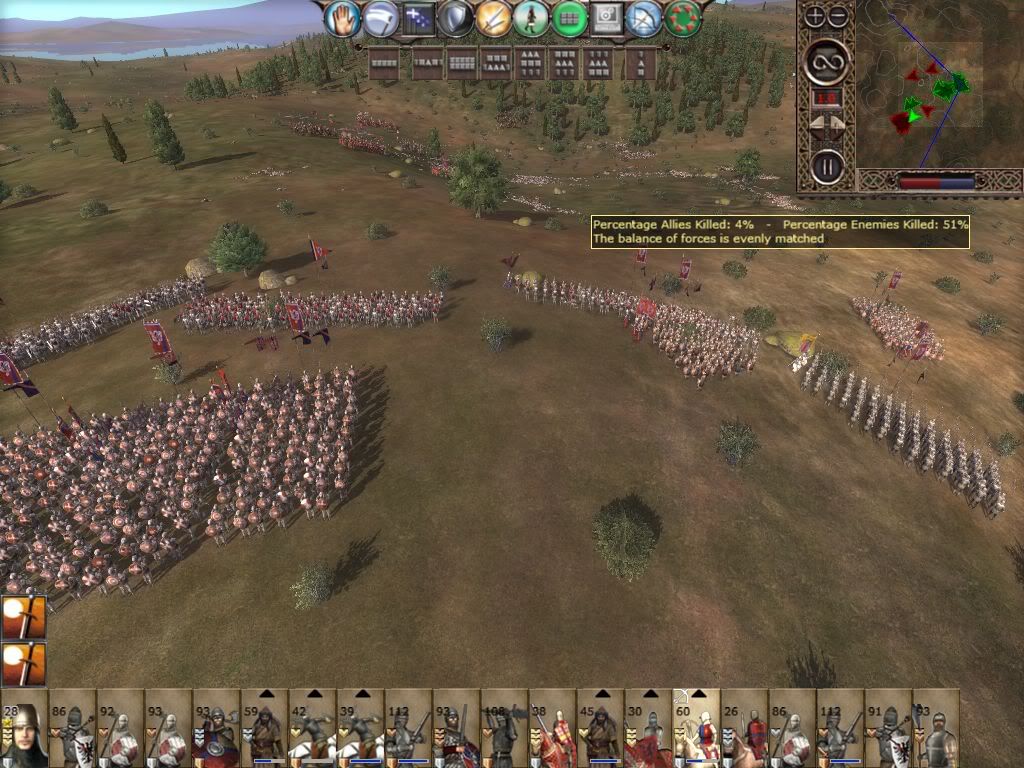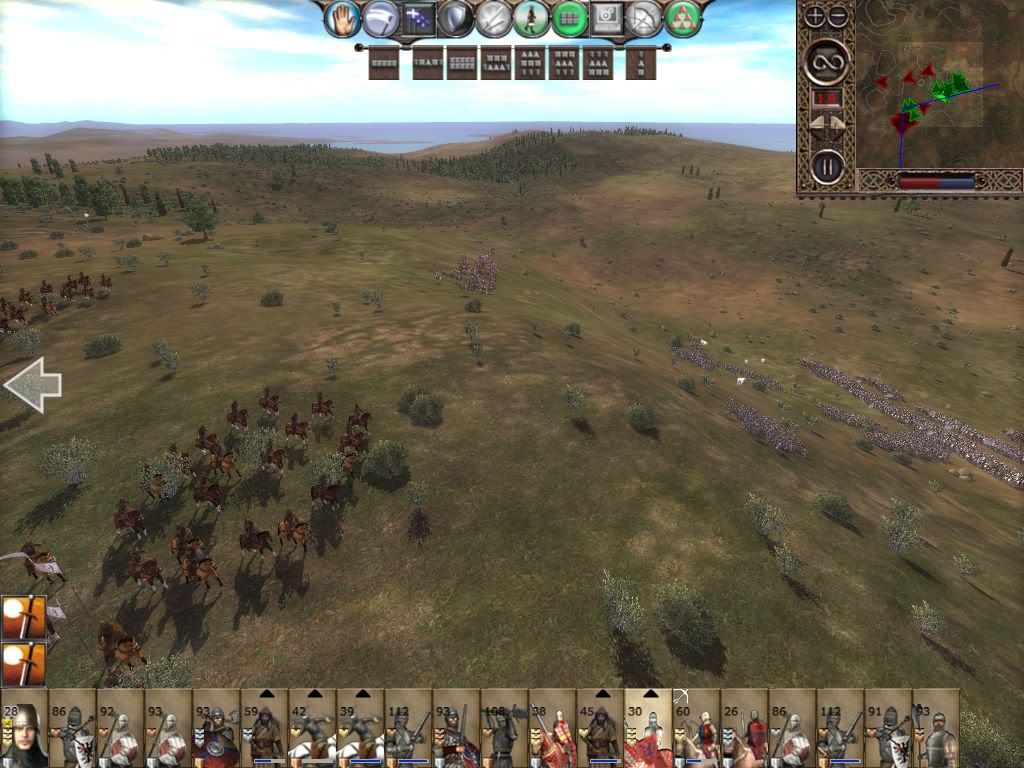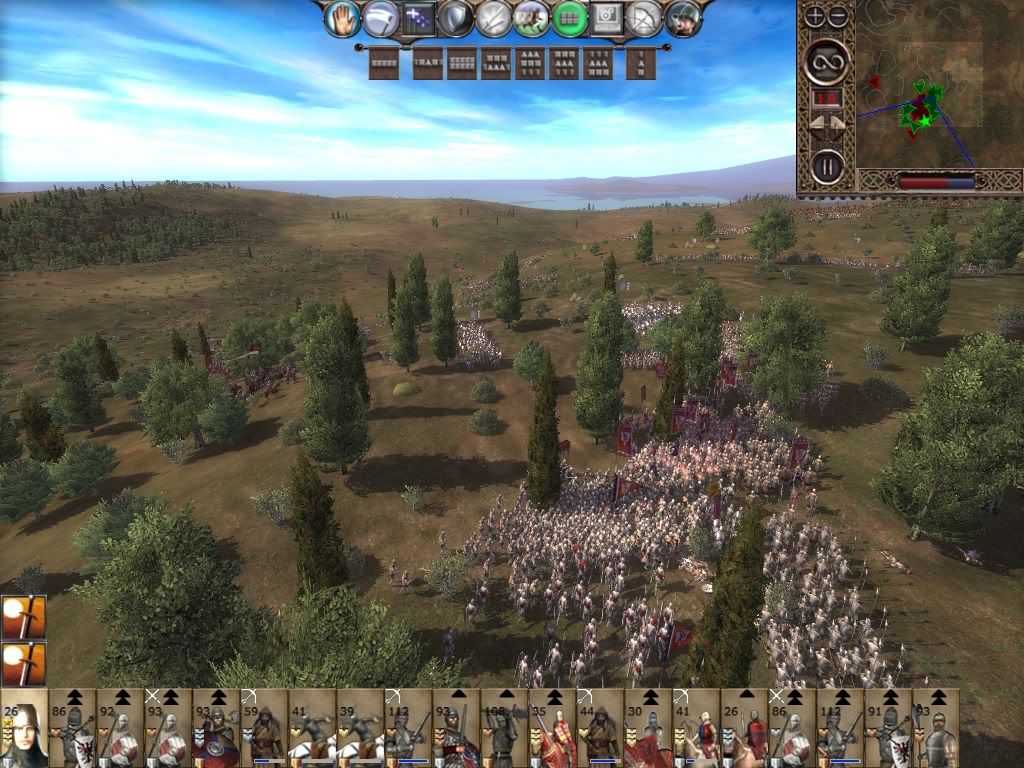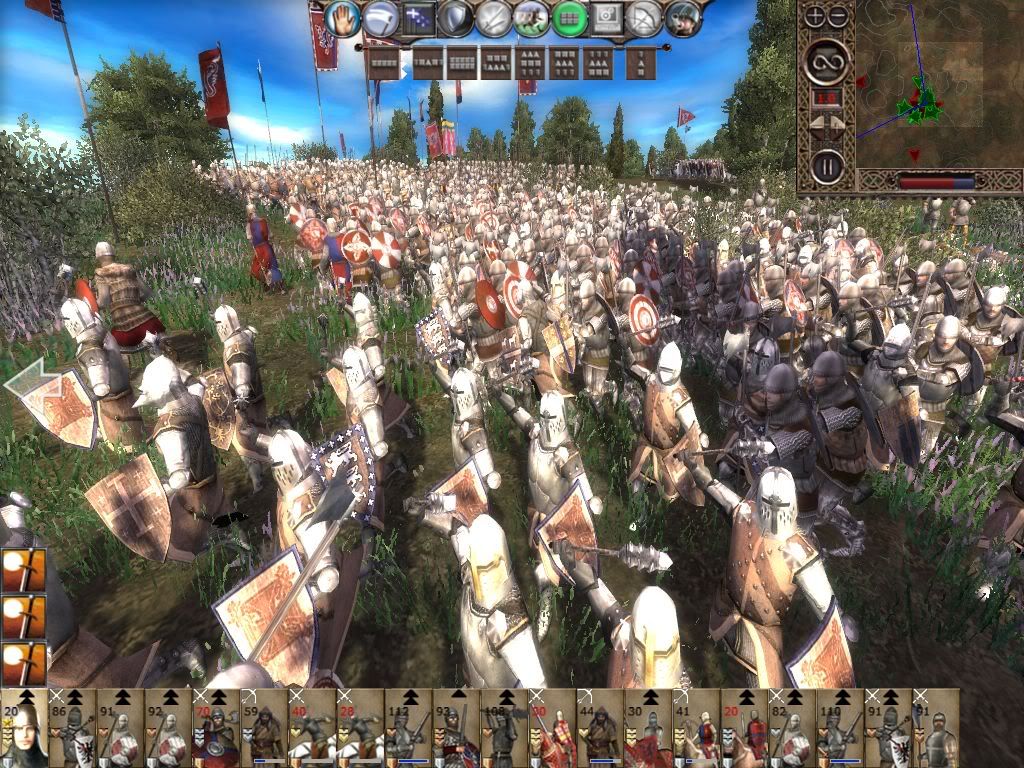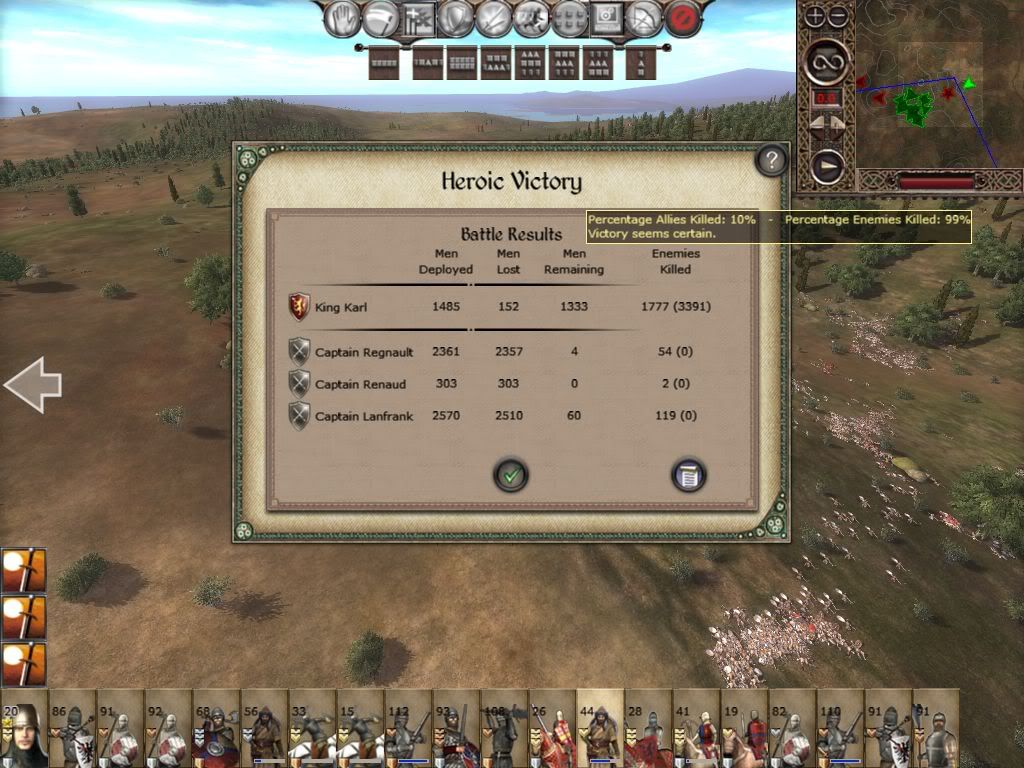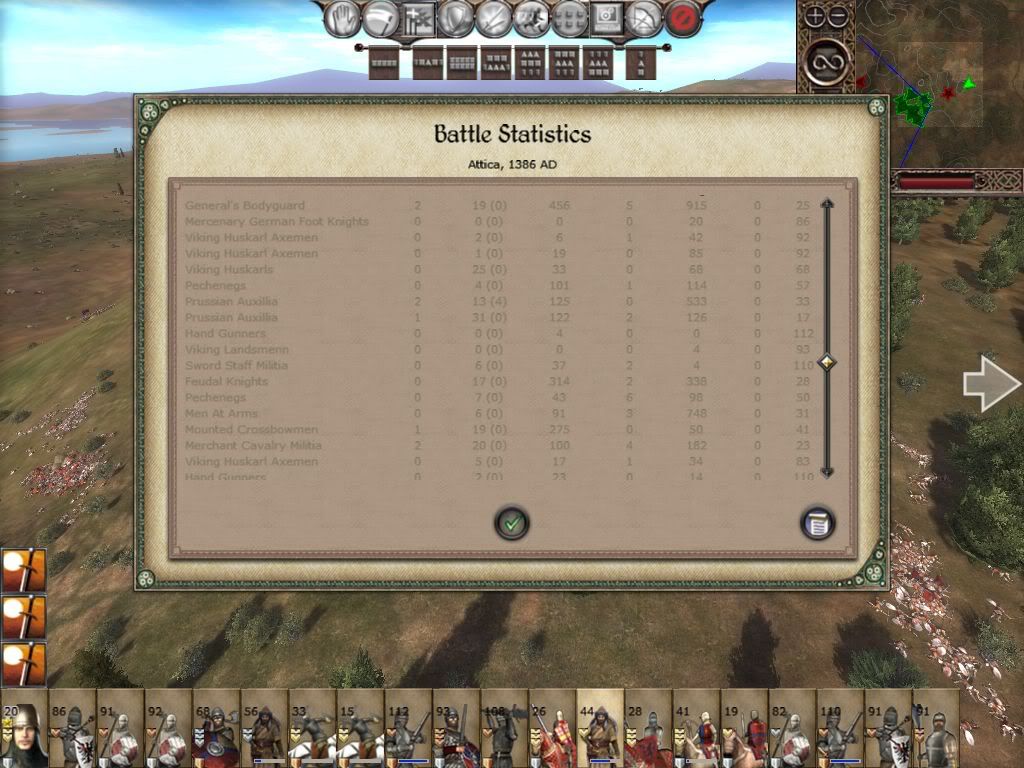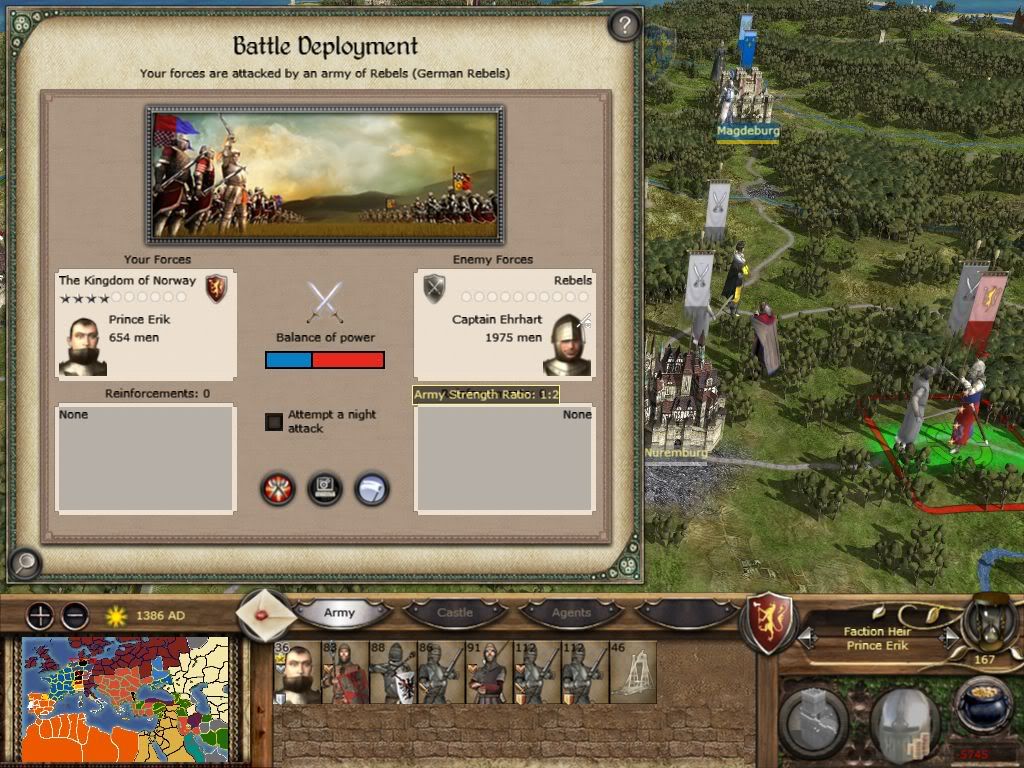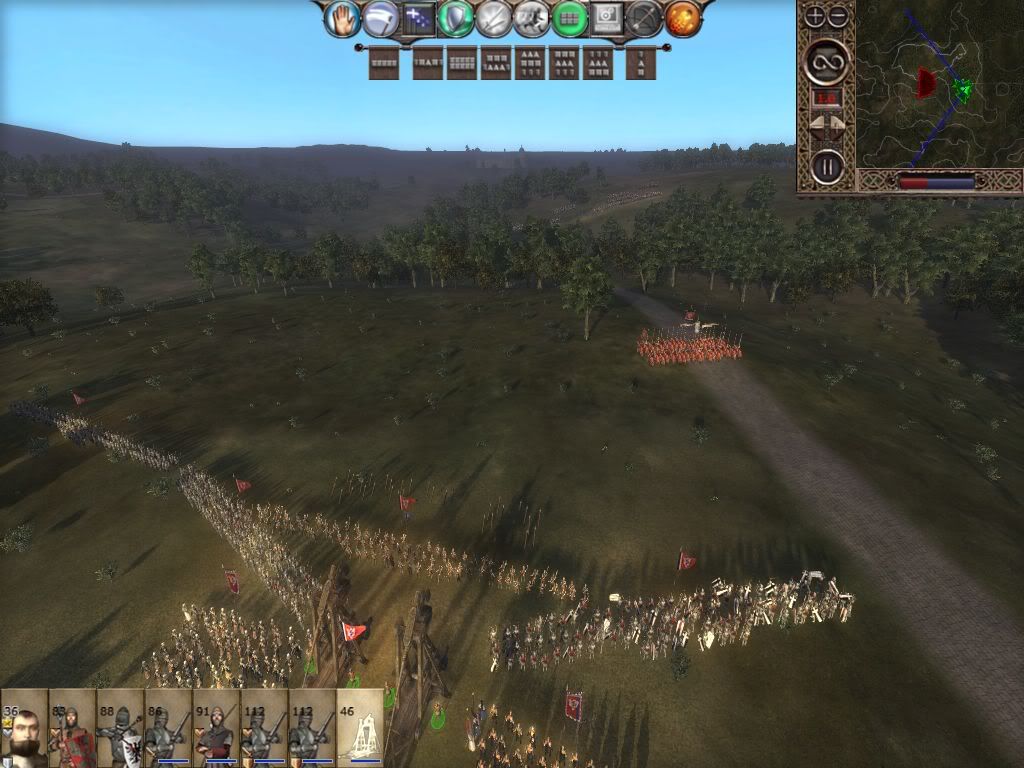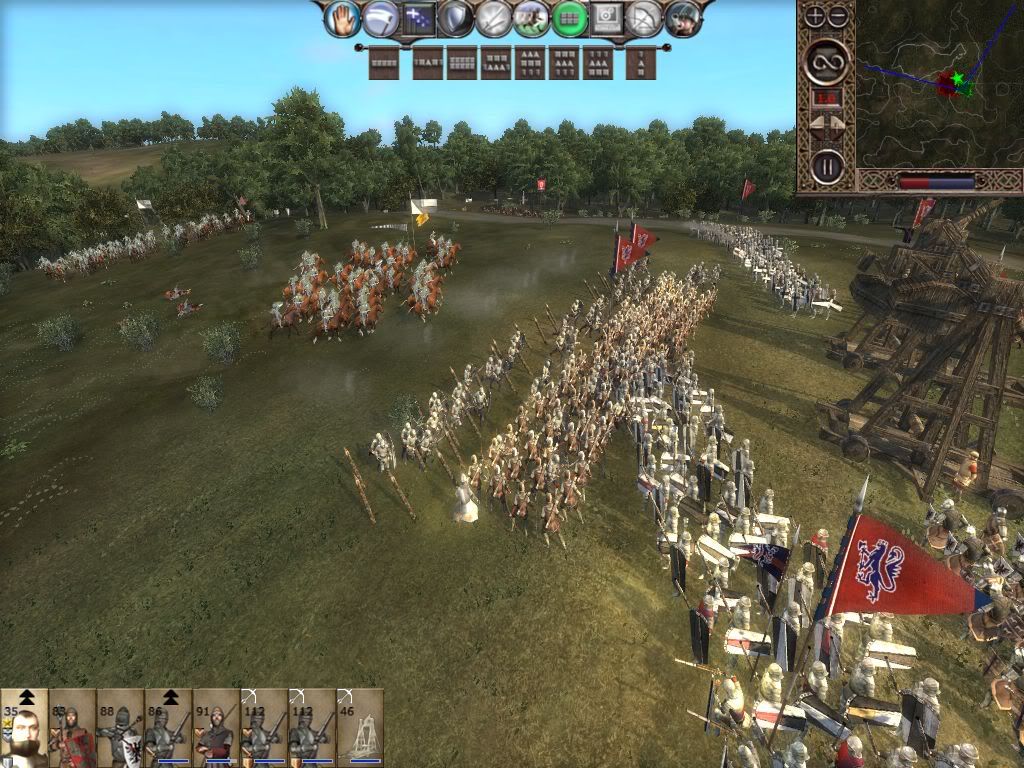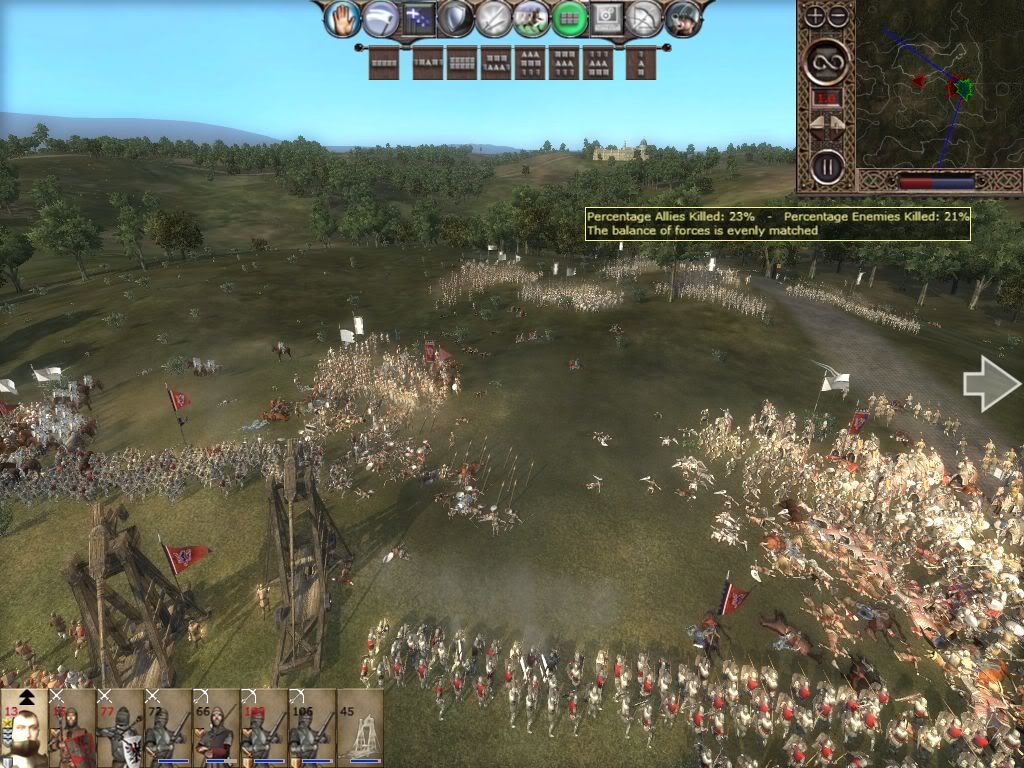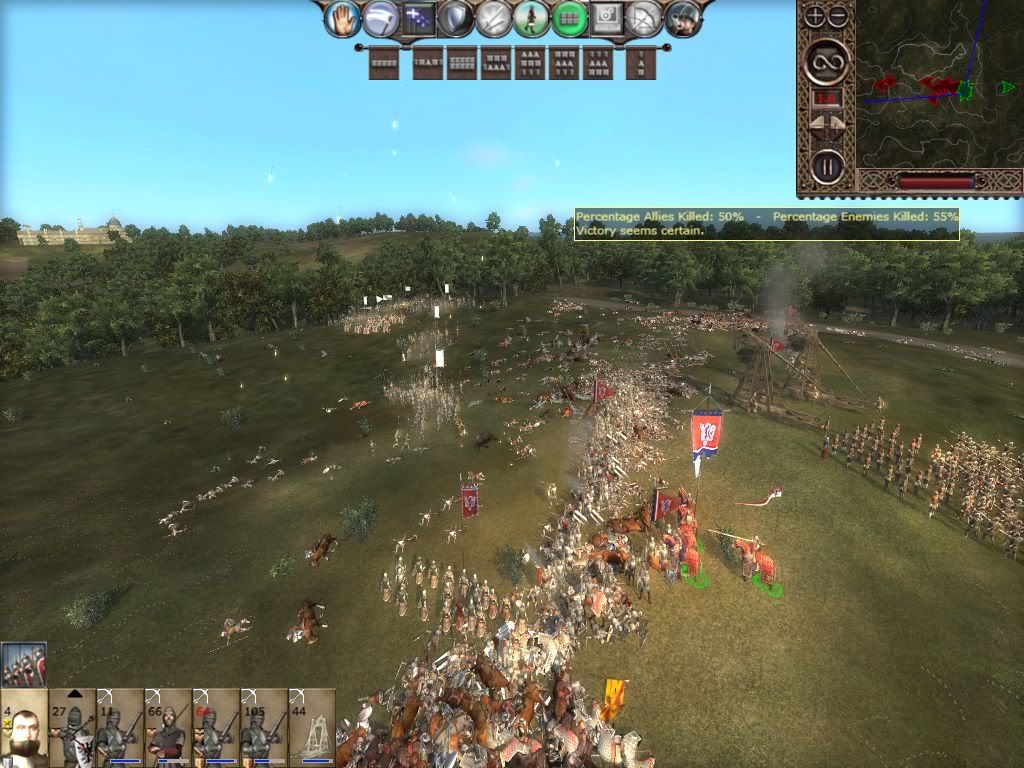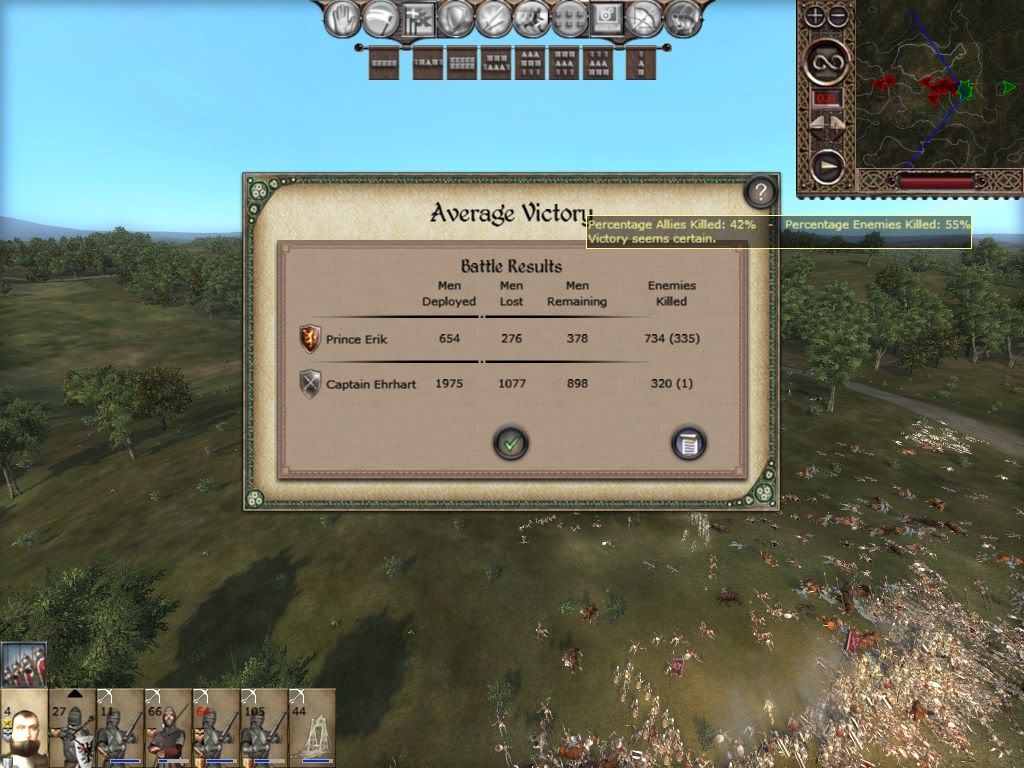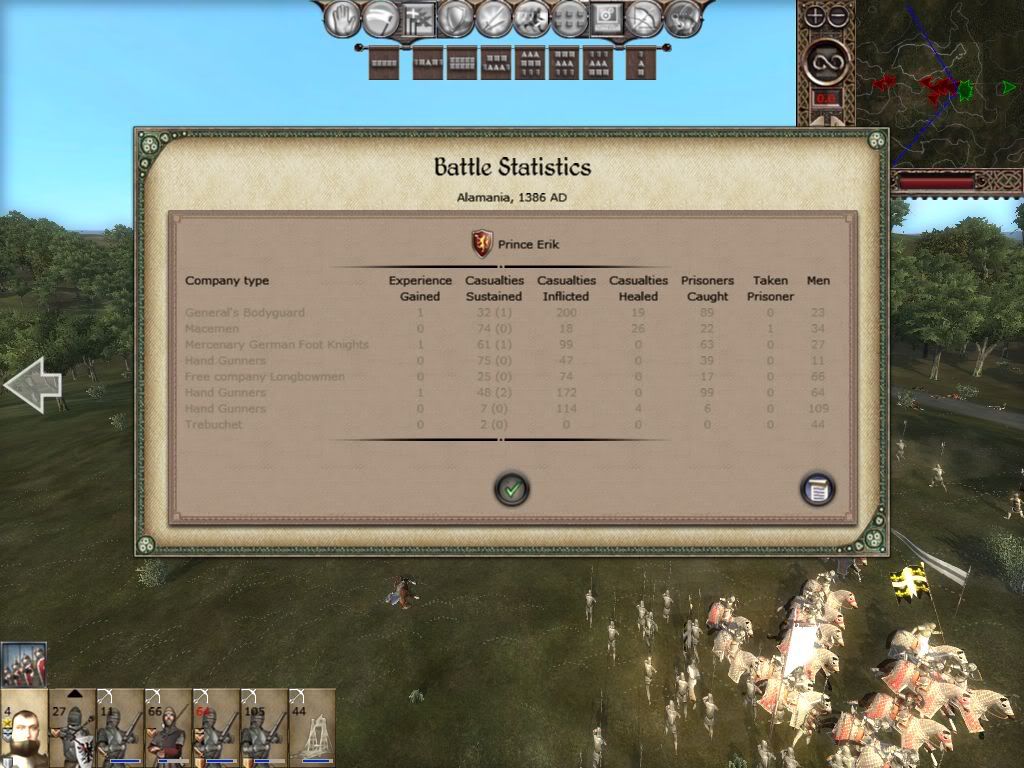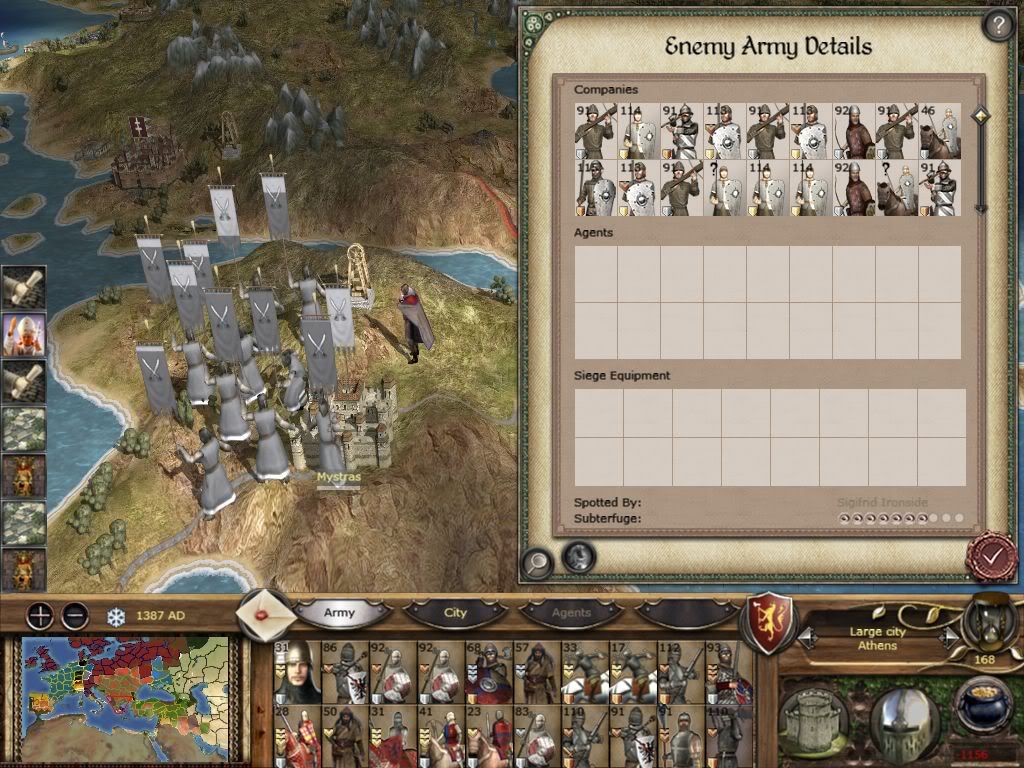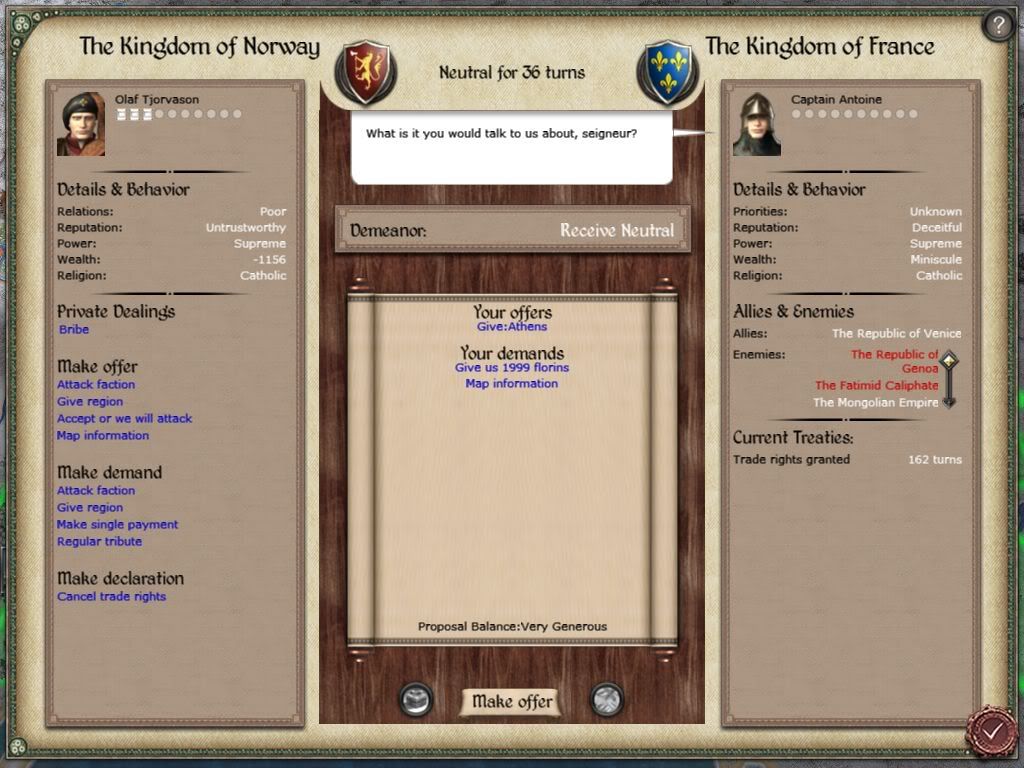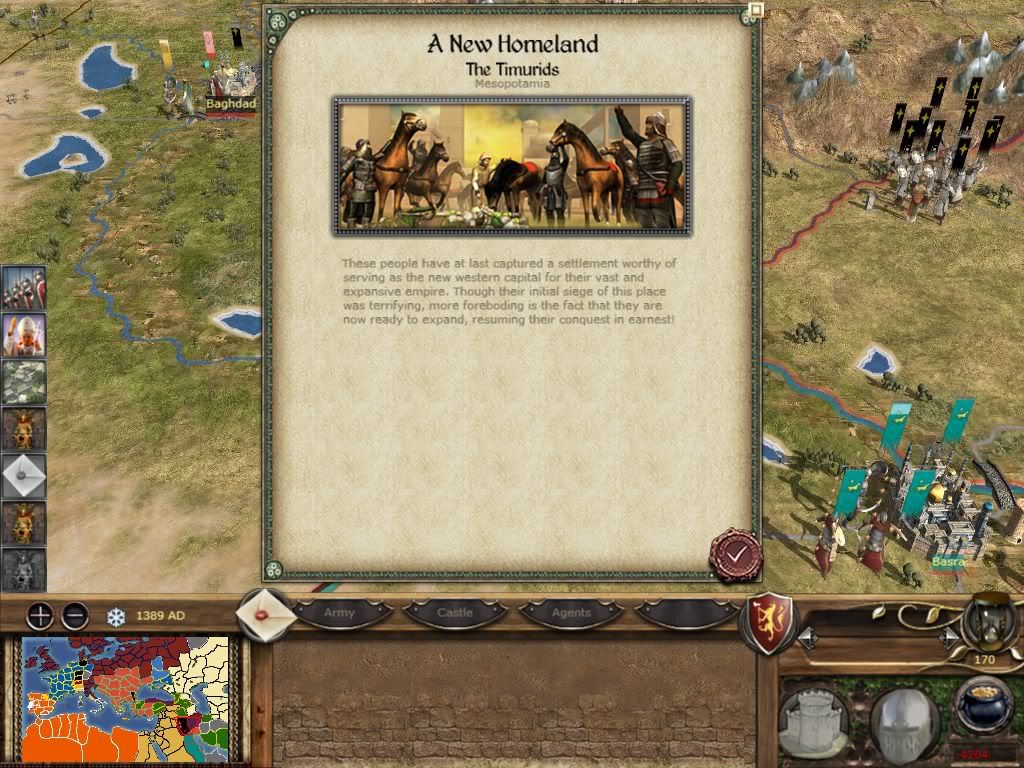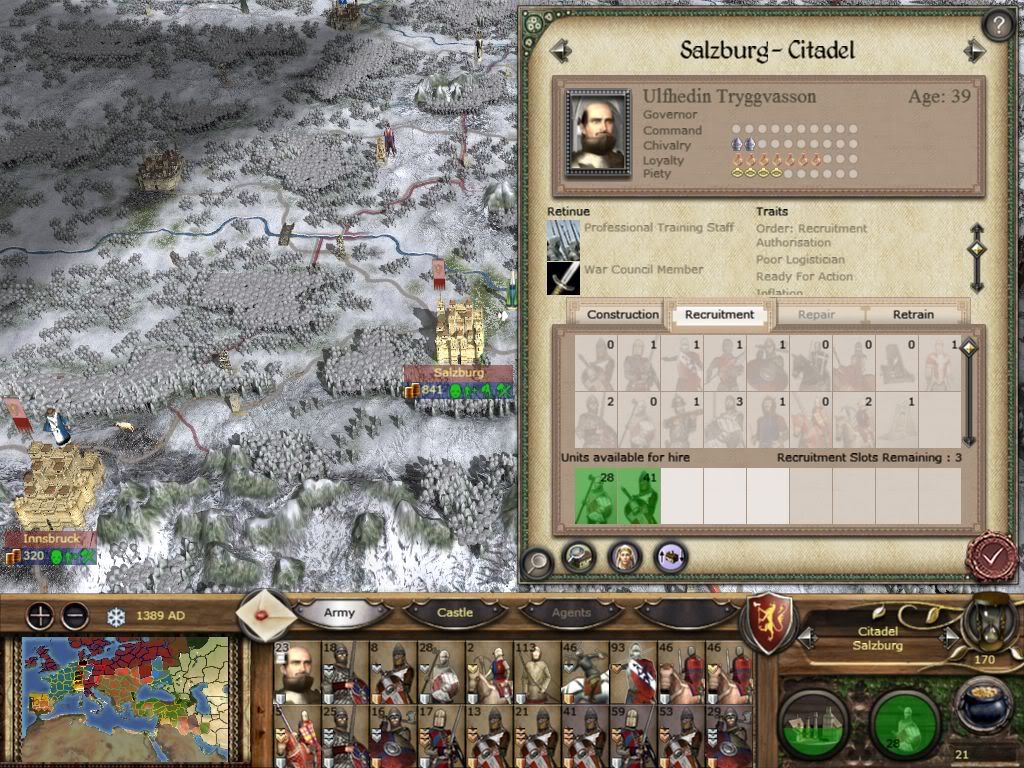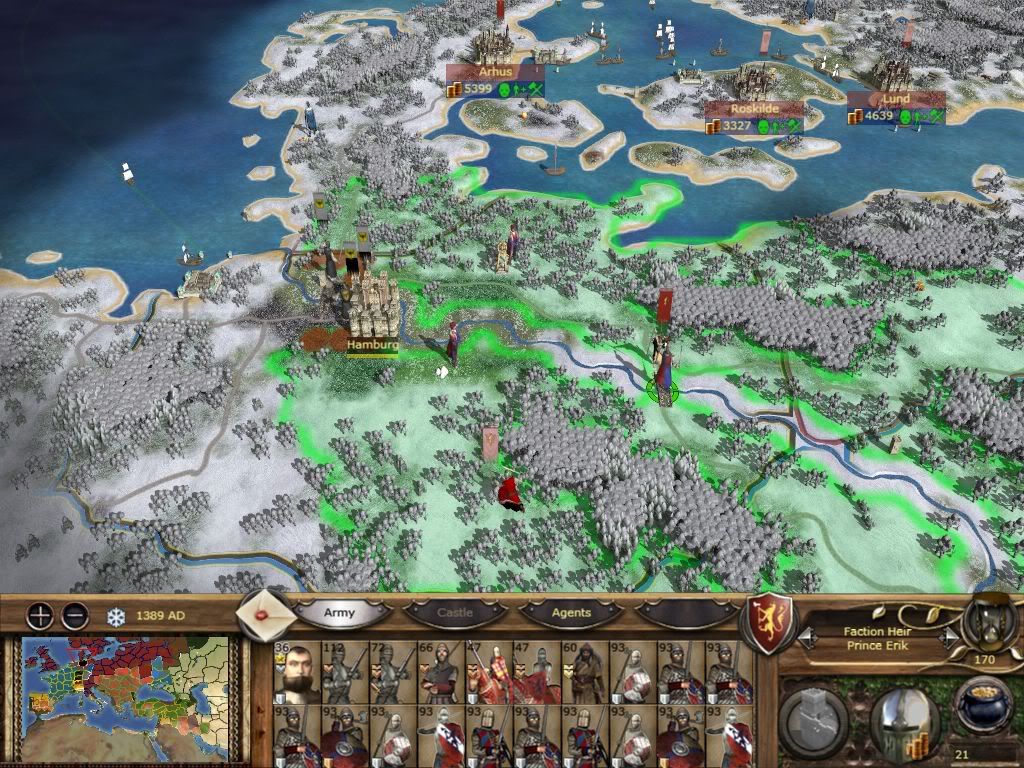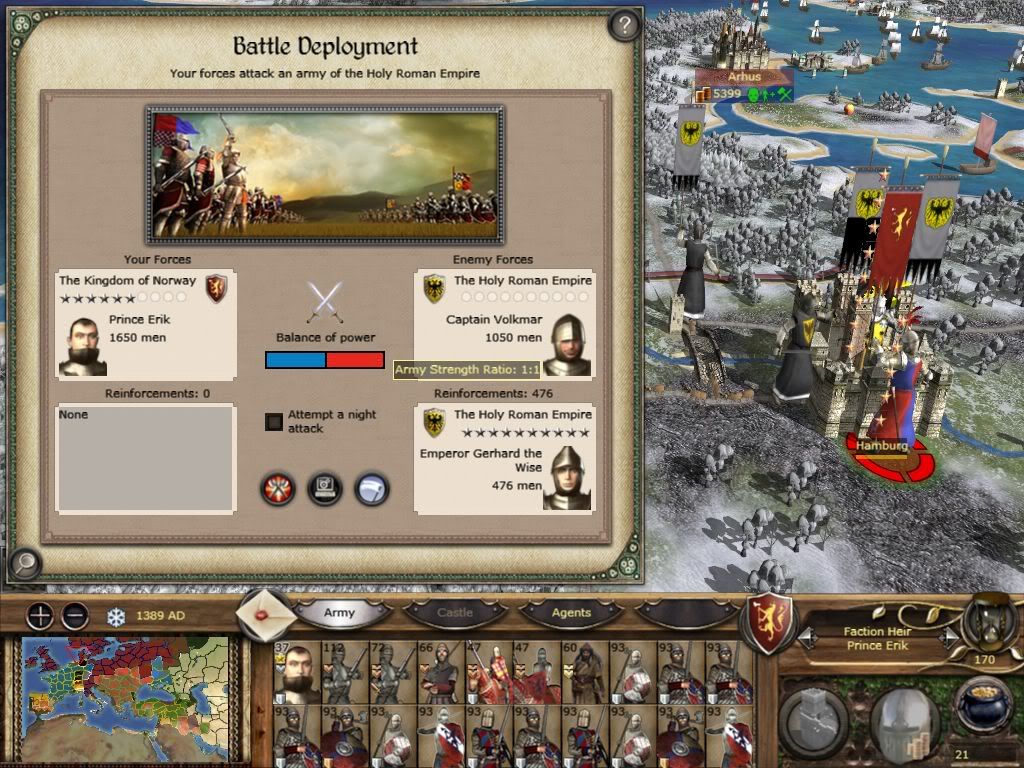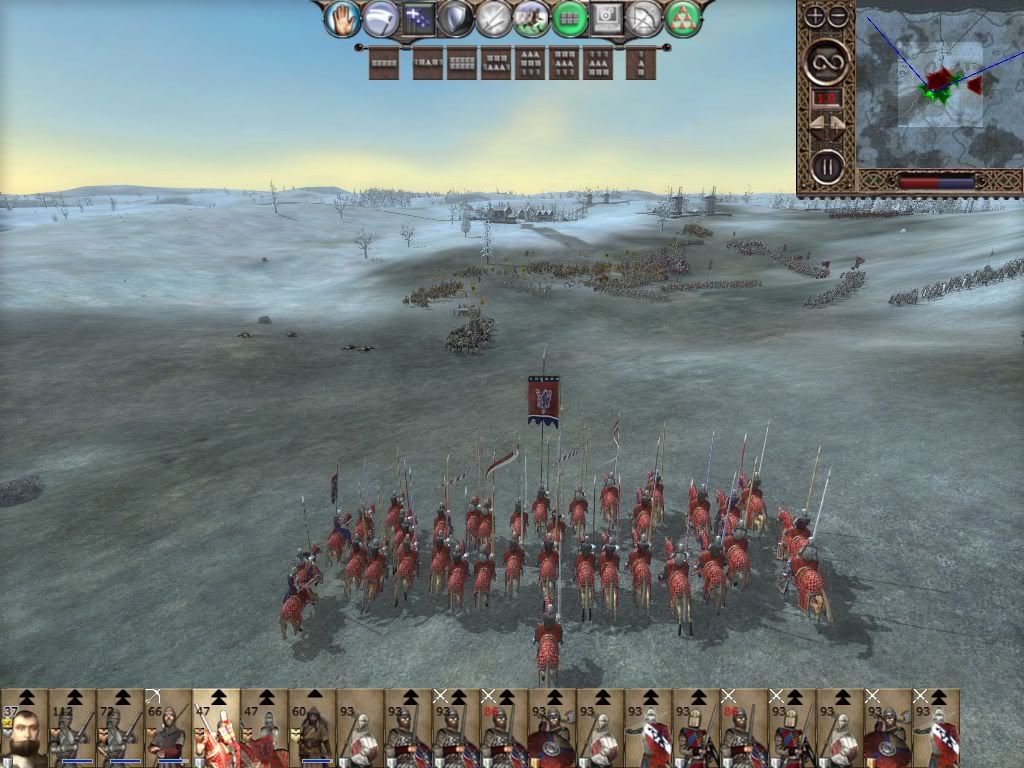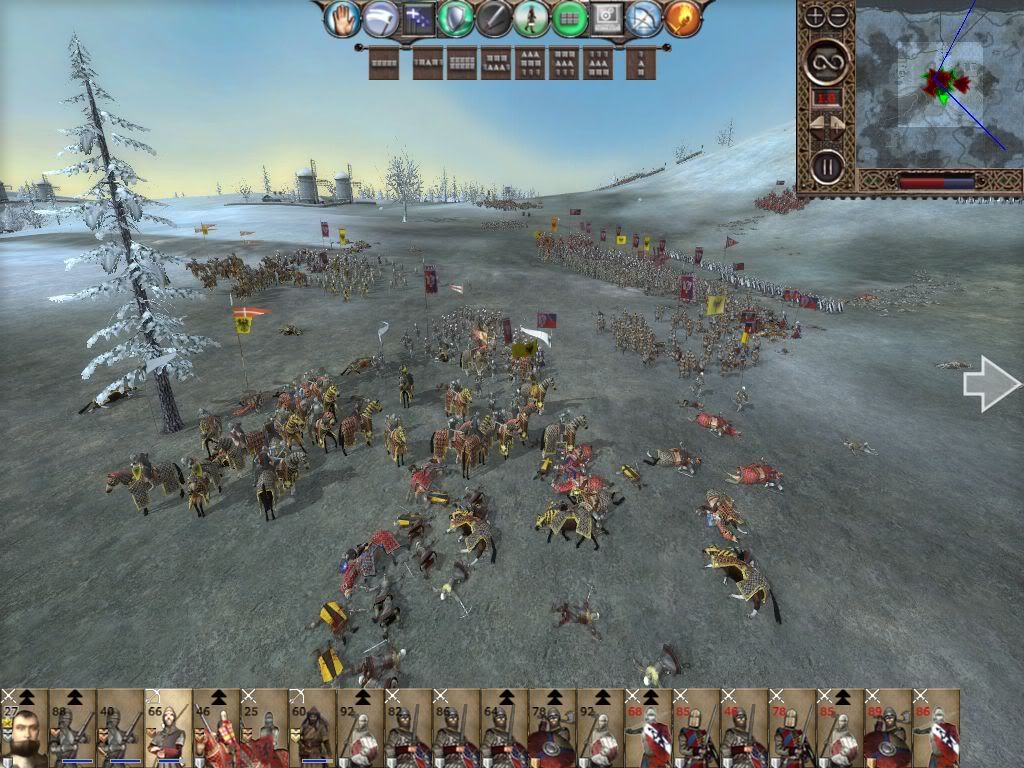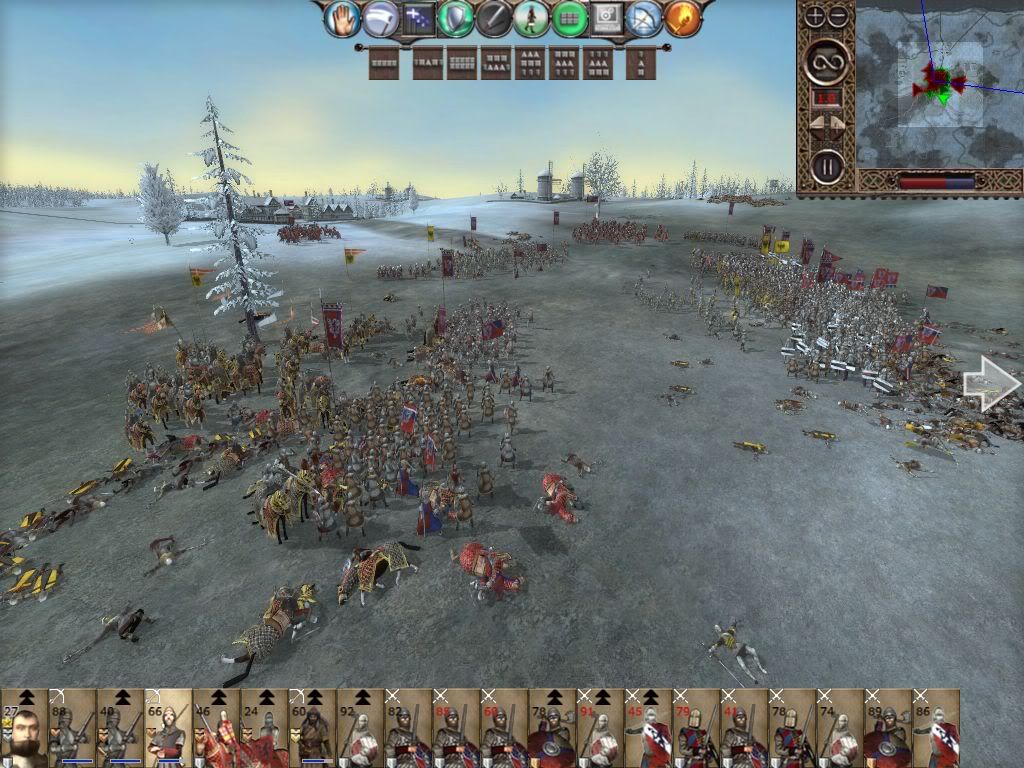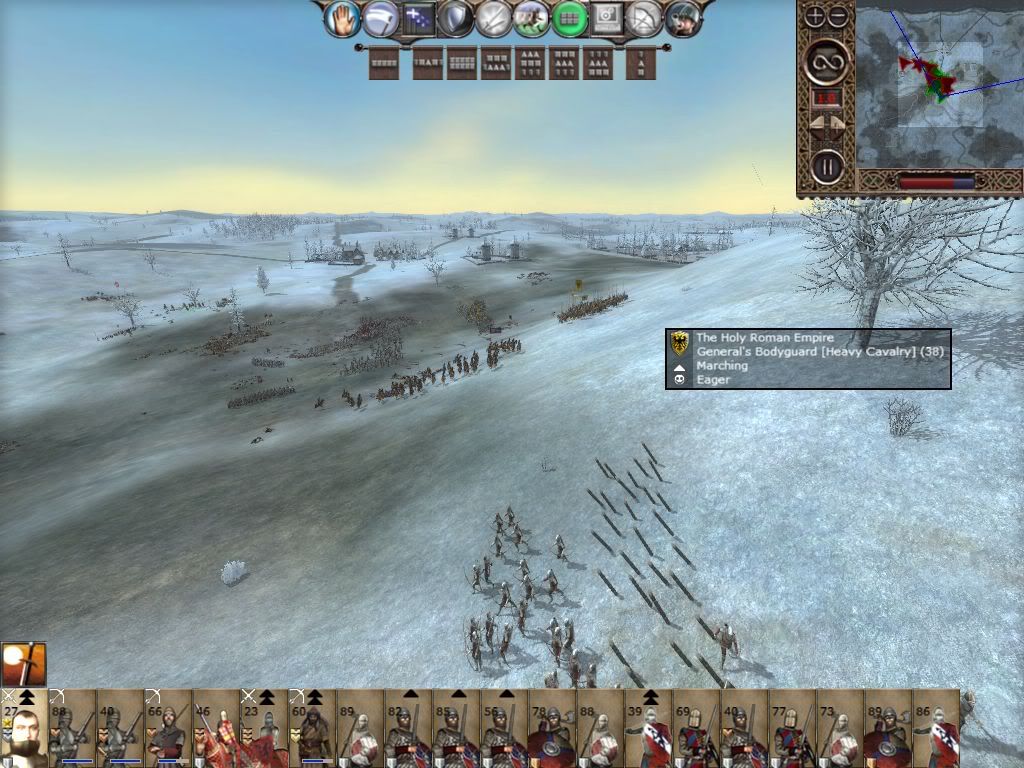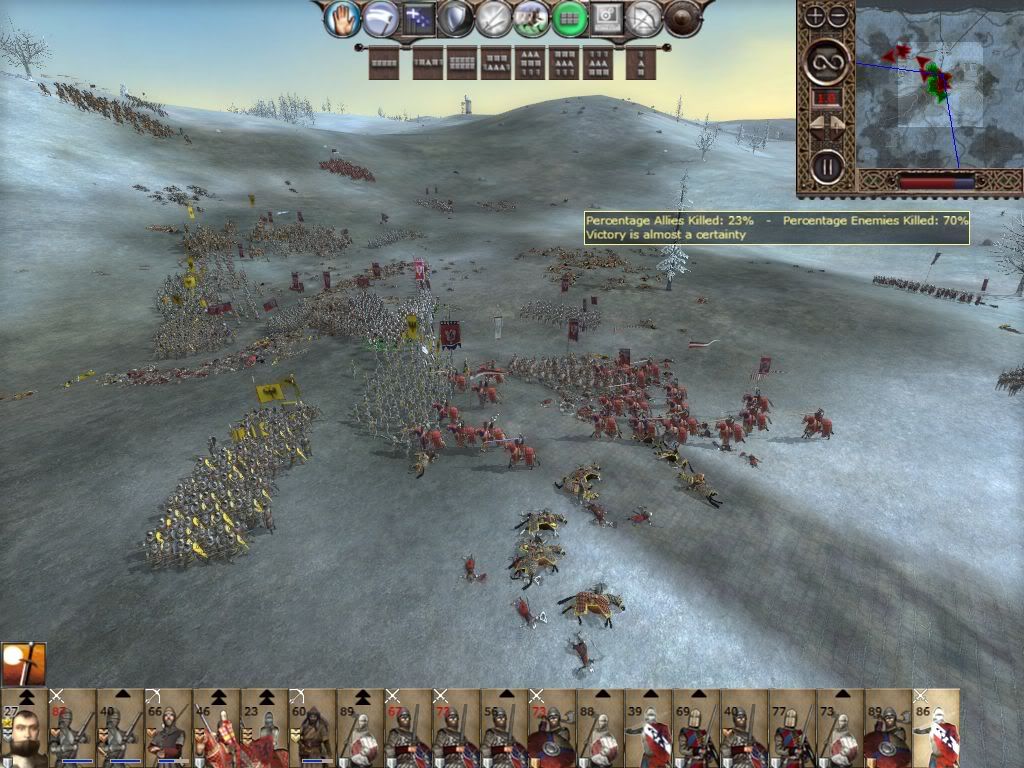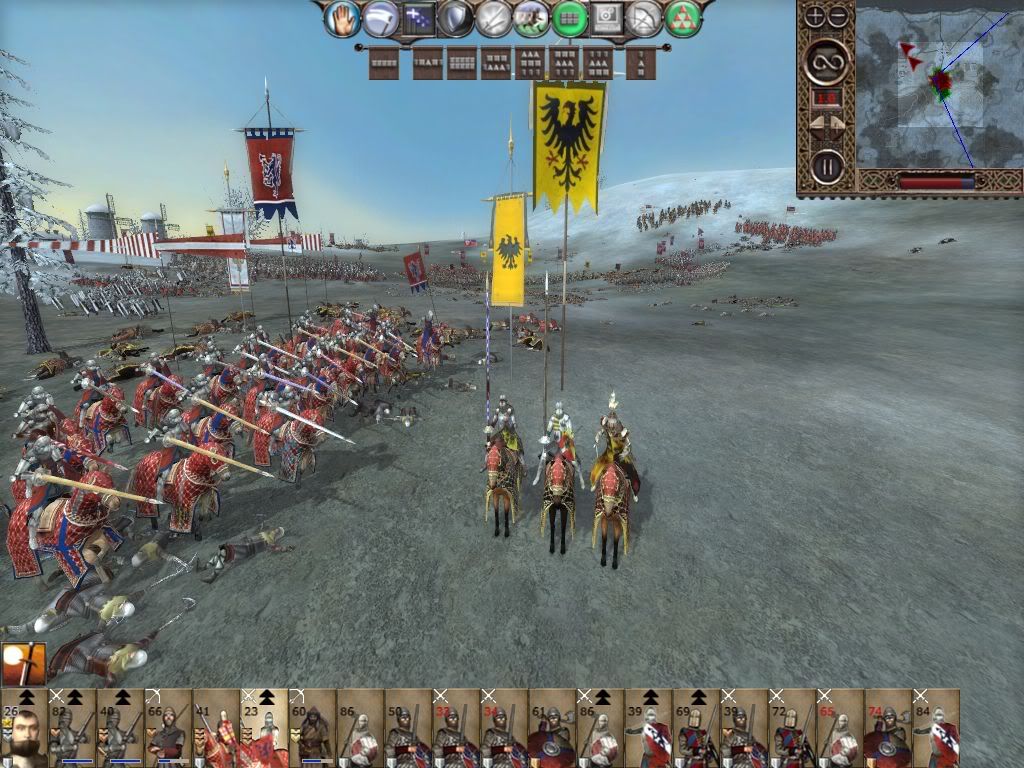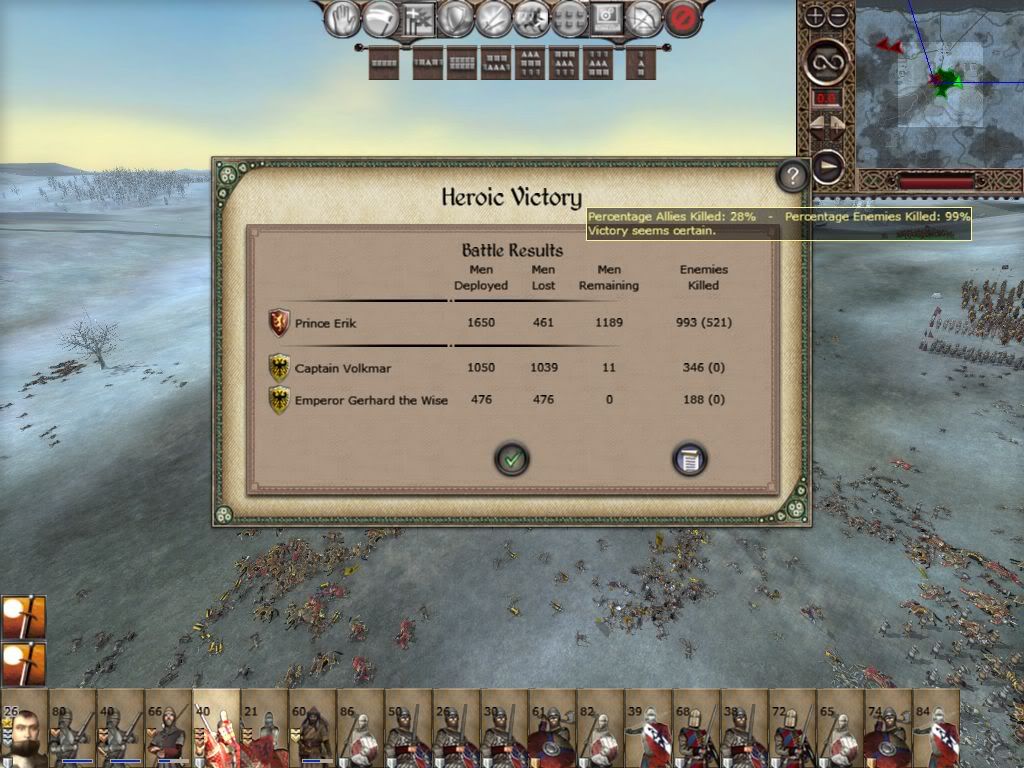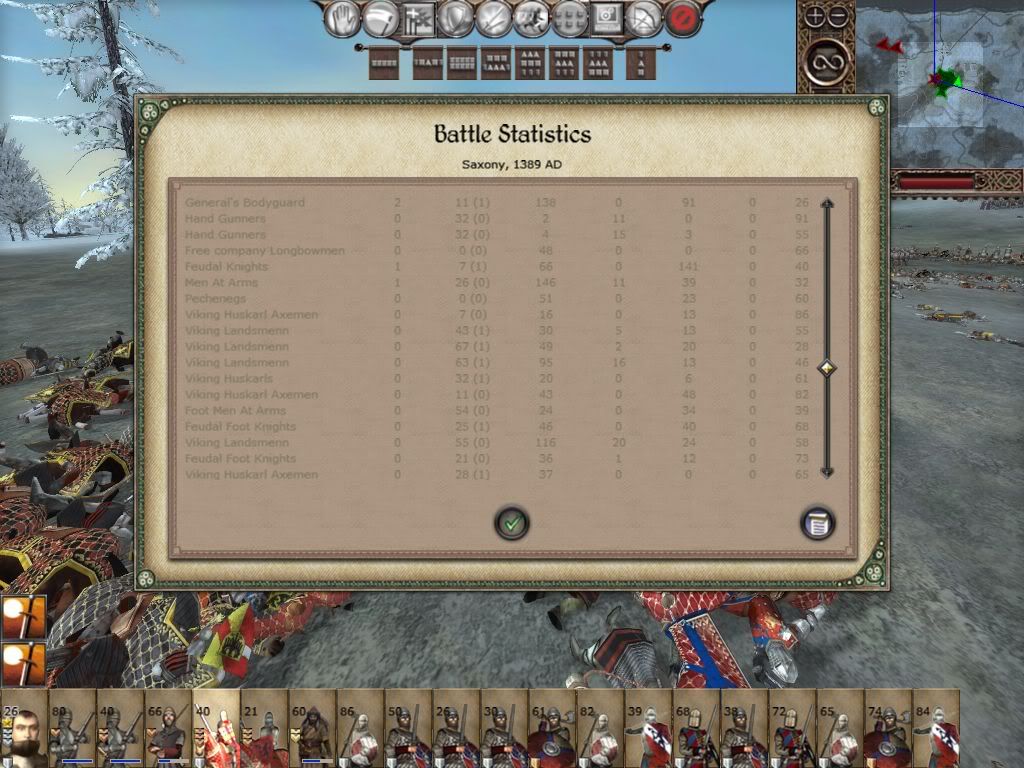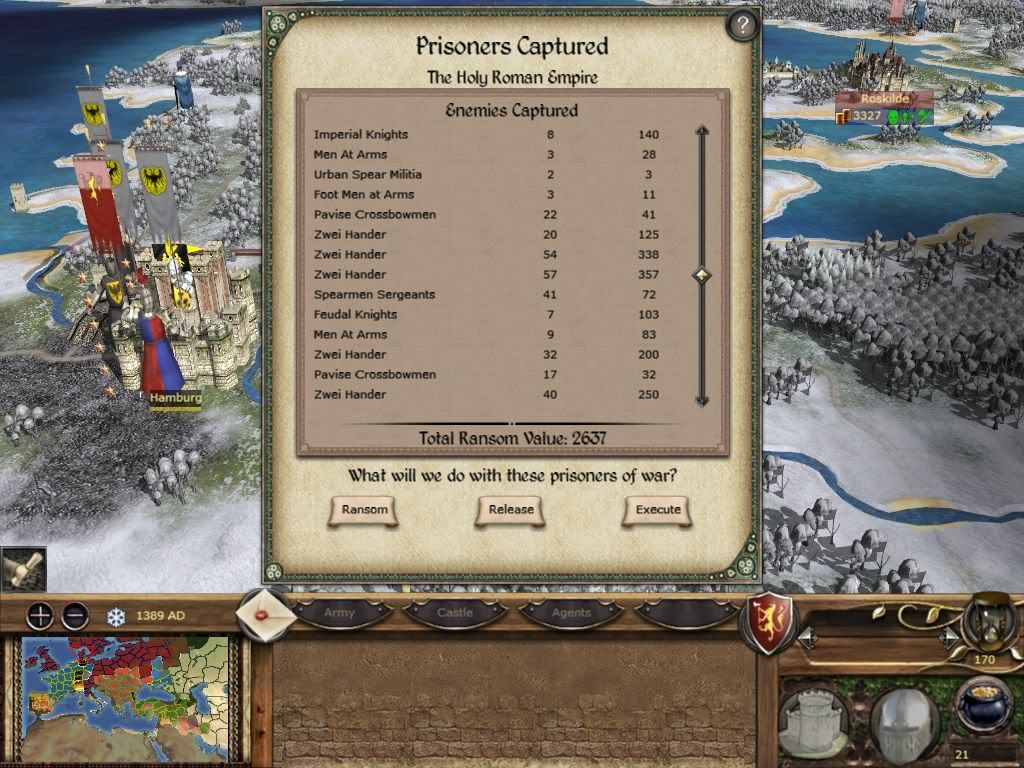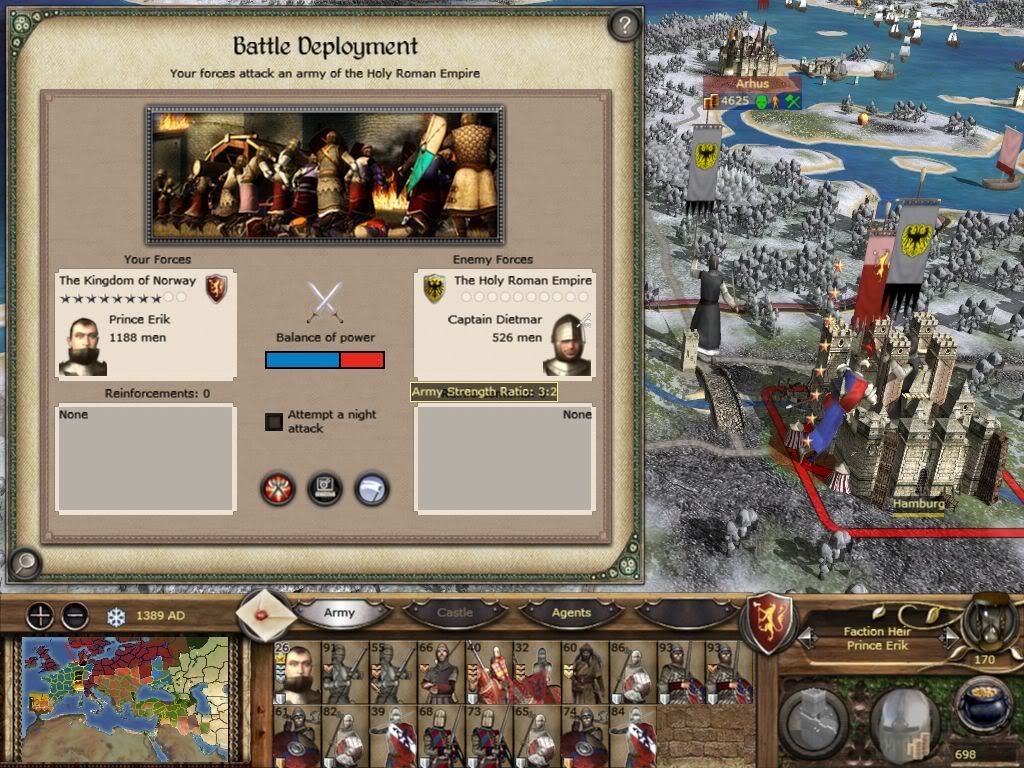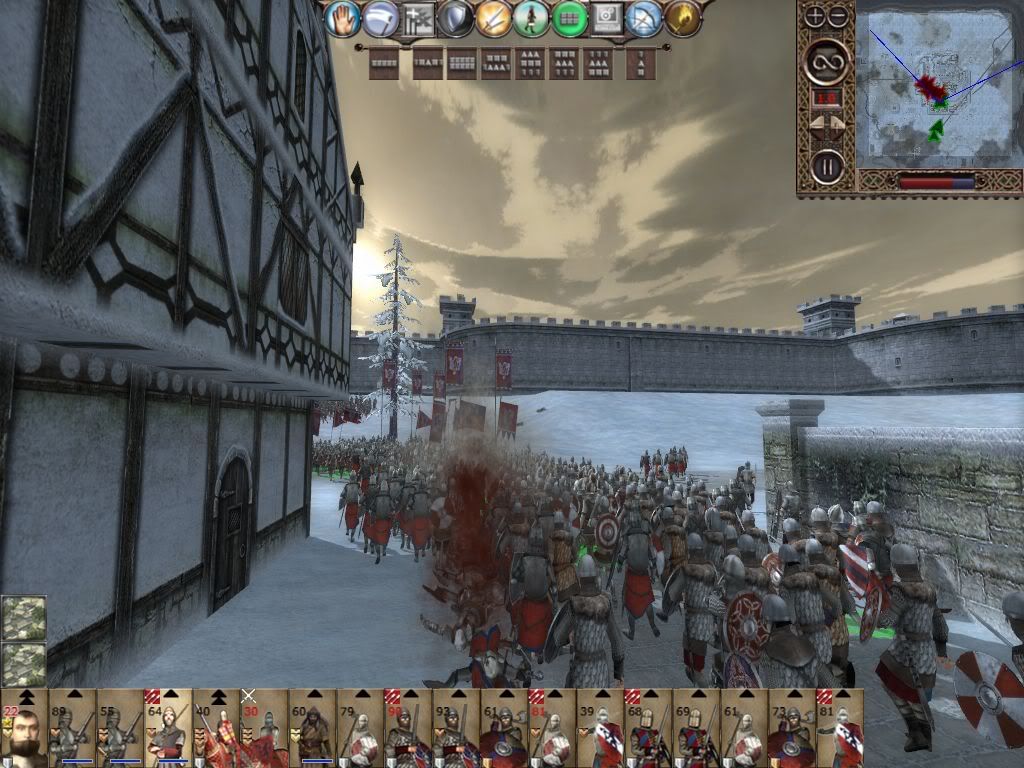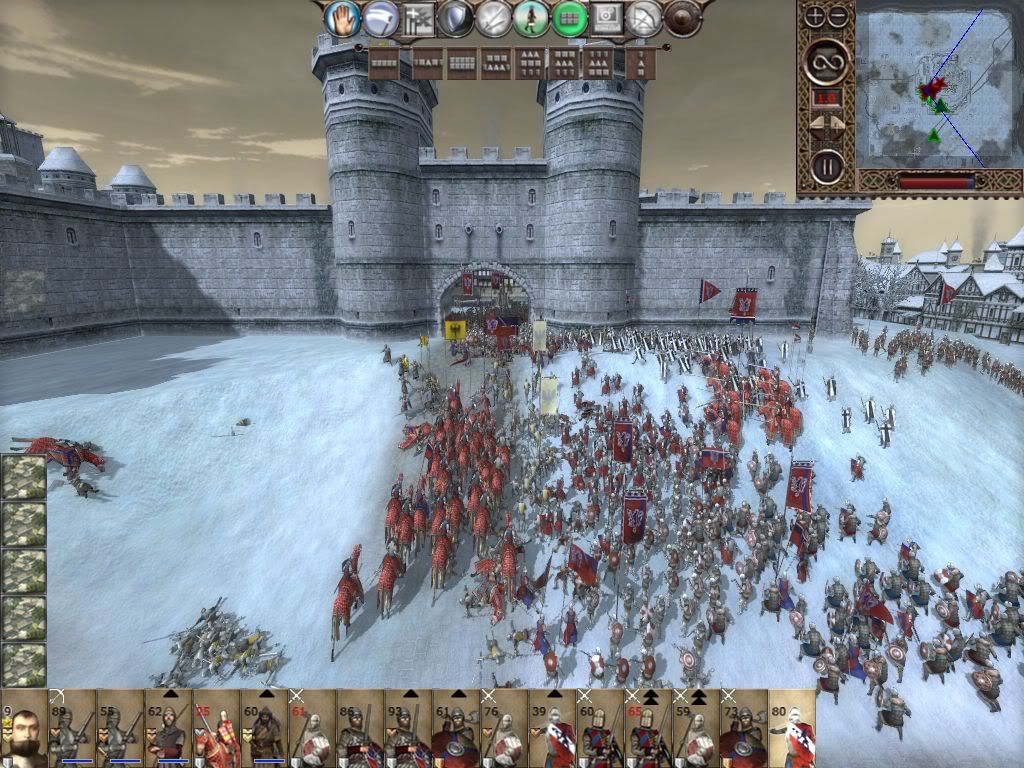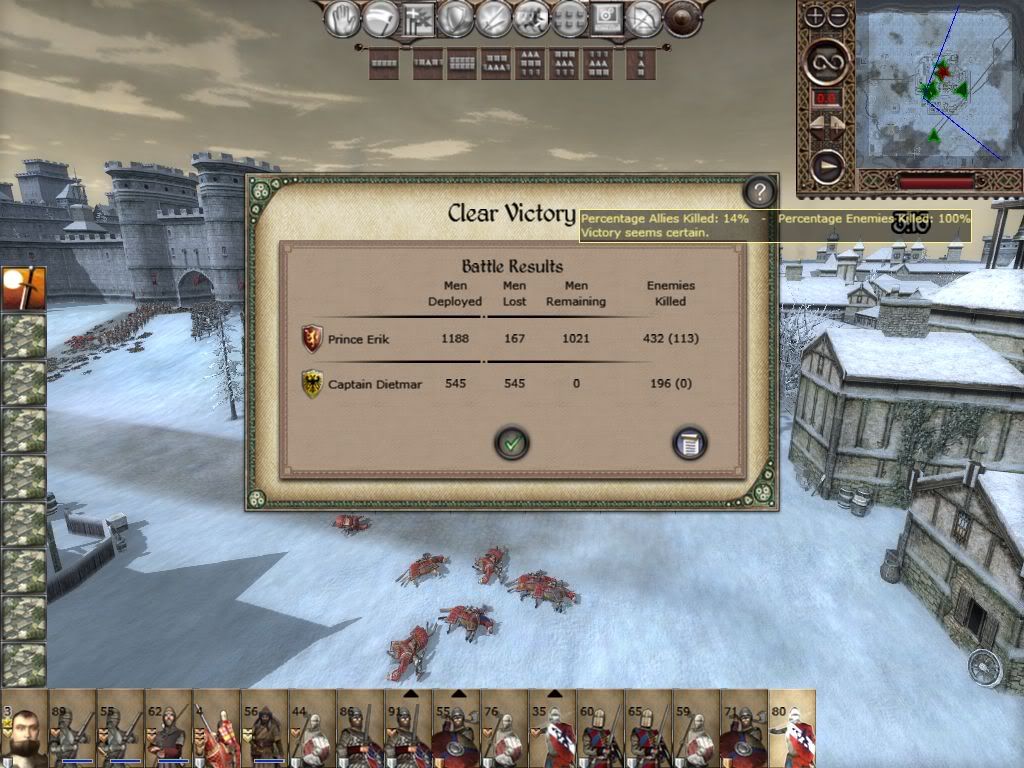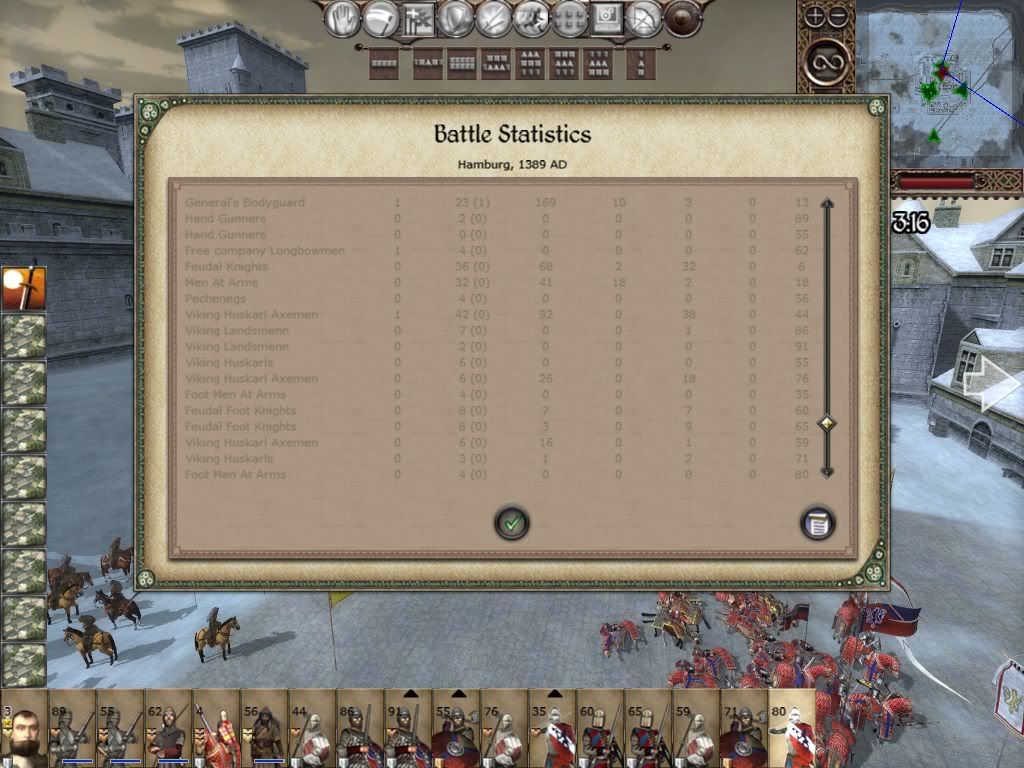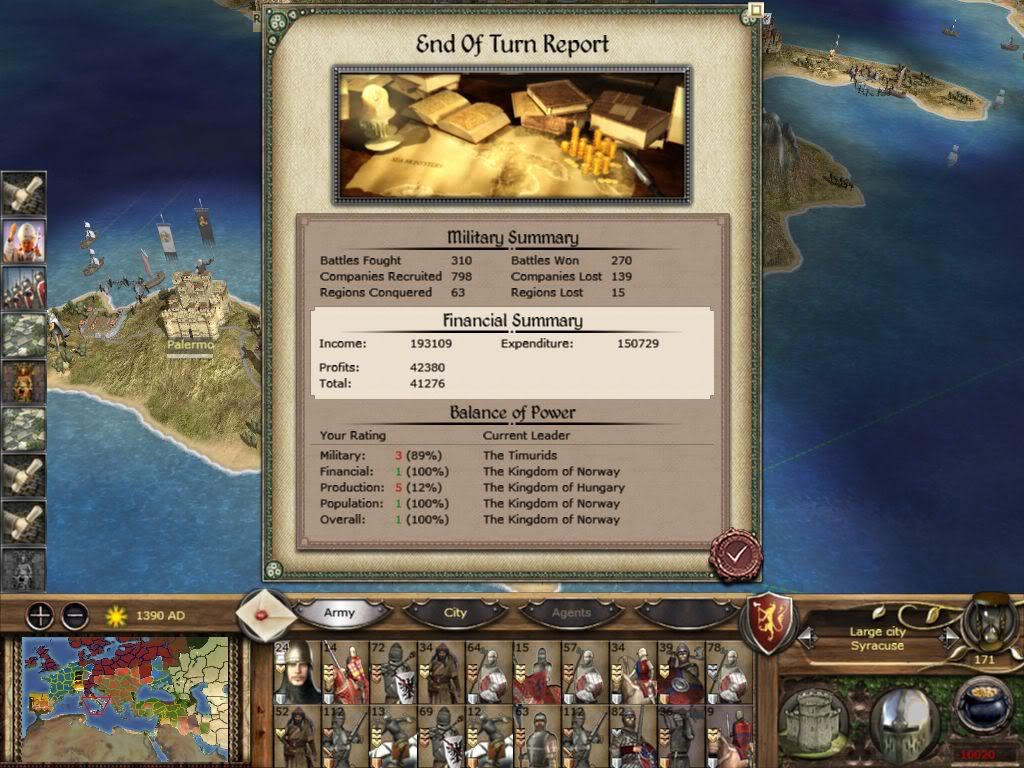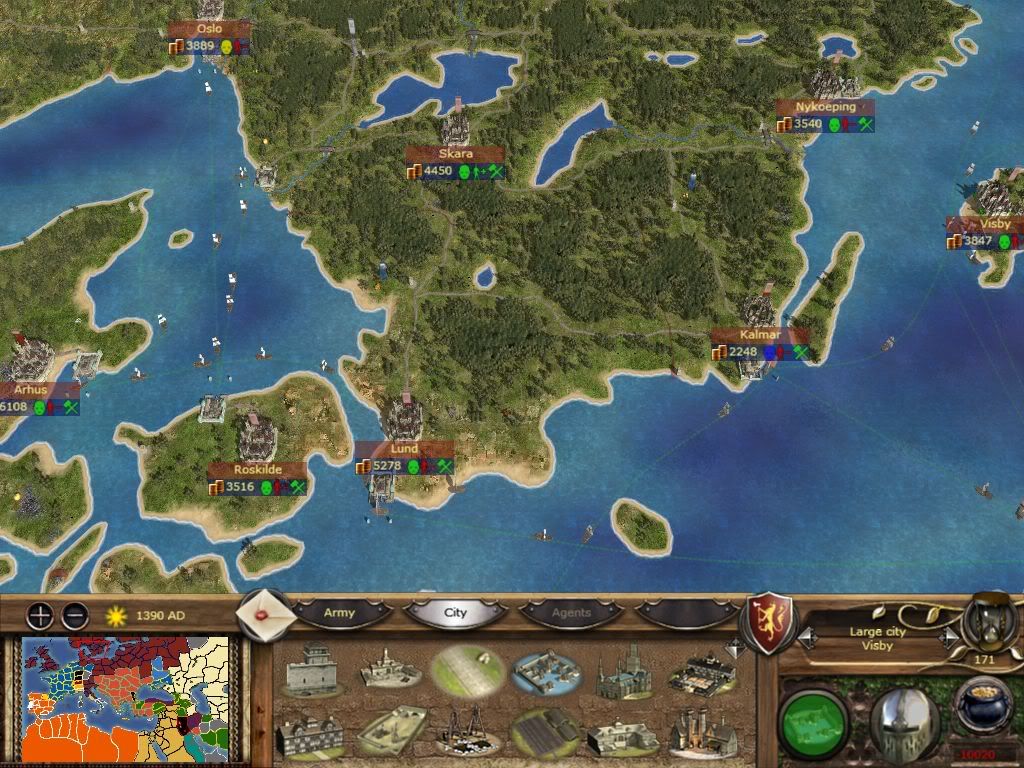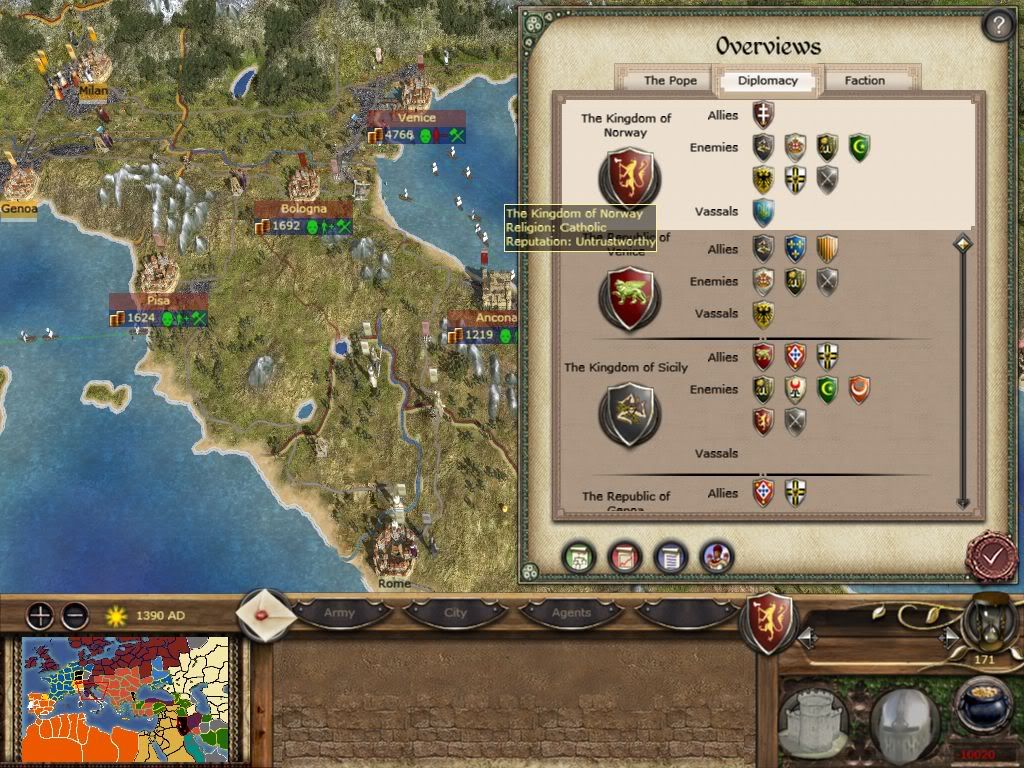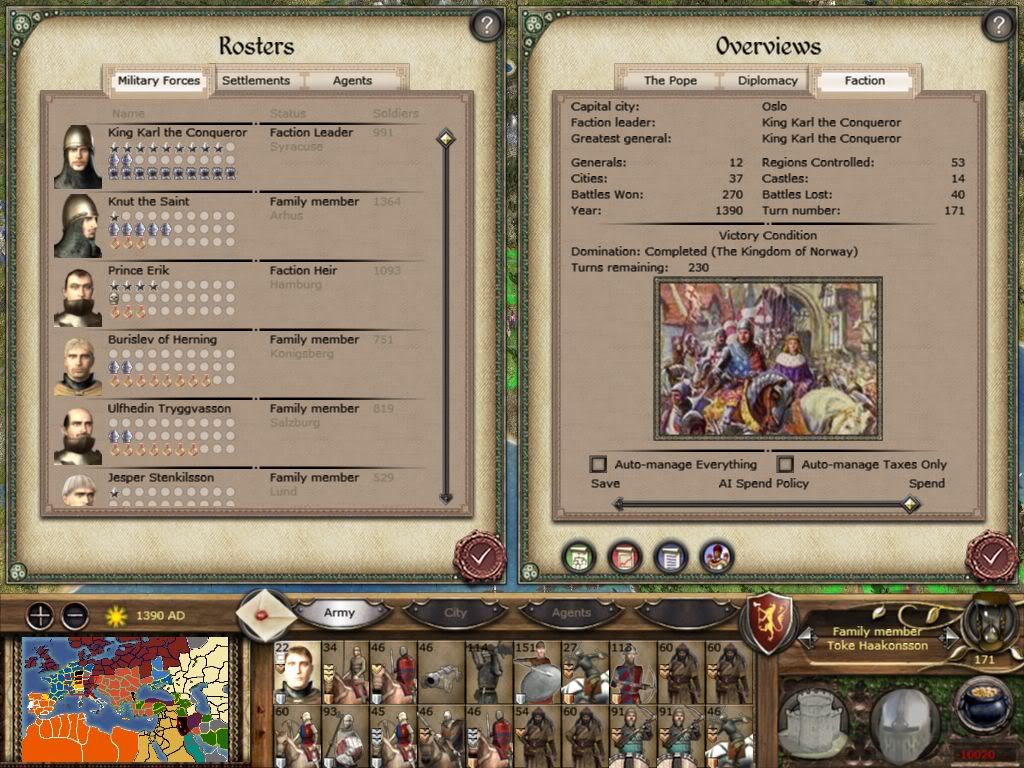King Karl has departed from Greece after handing over Athens to the French. The Pope's order to cease hostilities with Sicily has expired and Karl decides to risk a strike to the south. If he can capture Sicily itself the Normans will be greatly weakened.
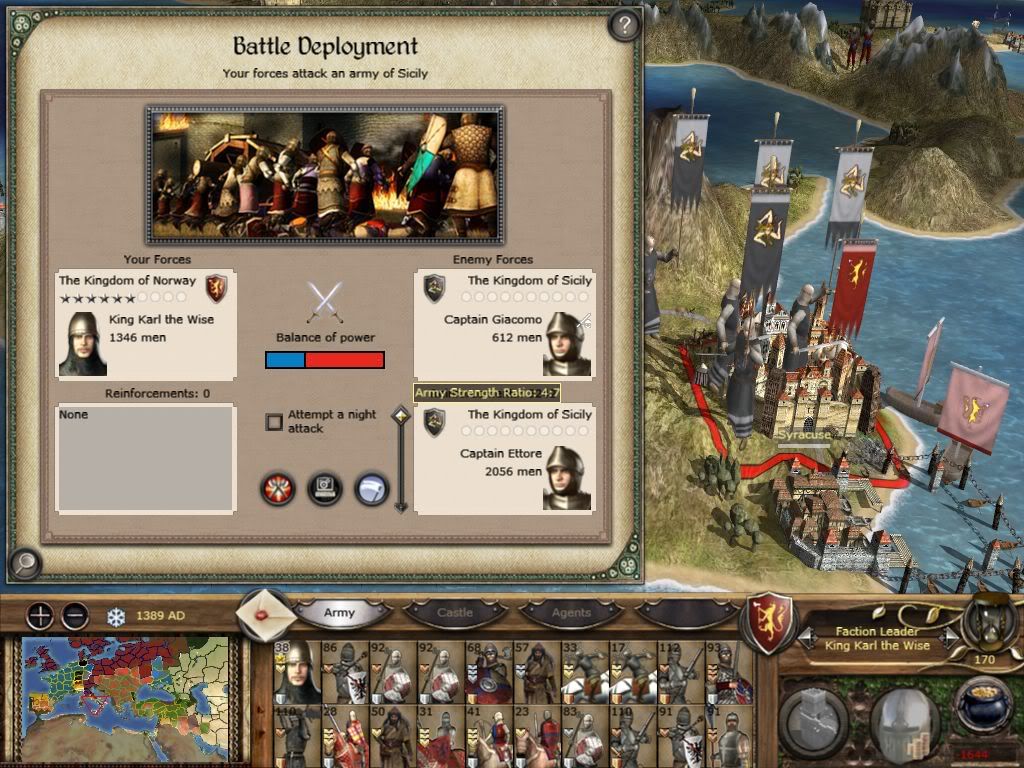
The single spy traveling with Karl manages to sneak into Syracuse and arranges by some relatively small bribes that the gates to the city will be opened to King Karl's army beneath the noses of the garrison.
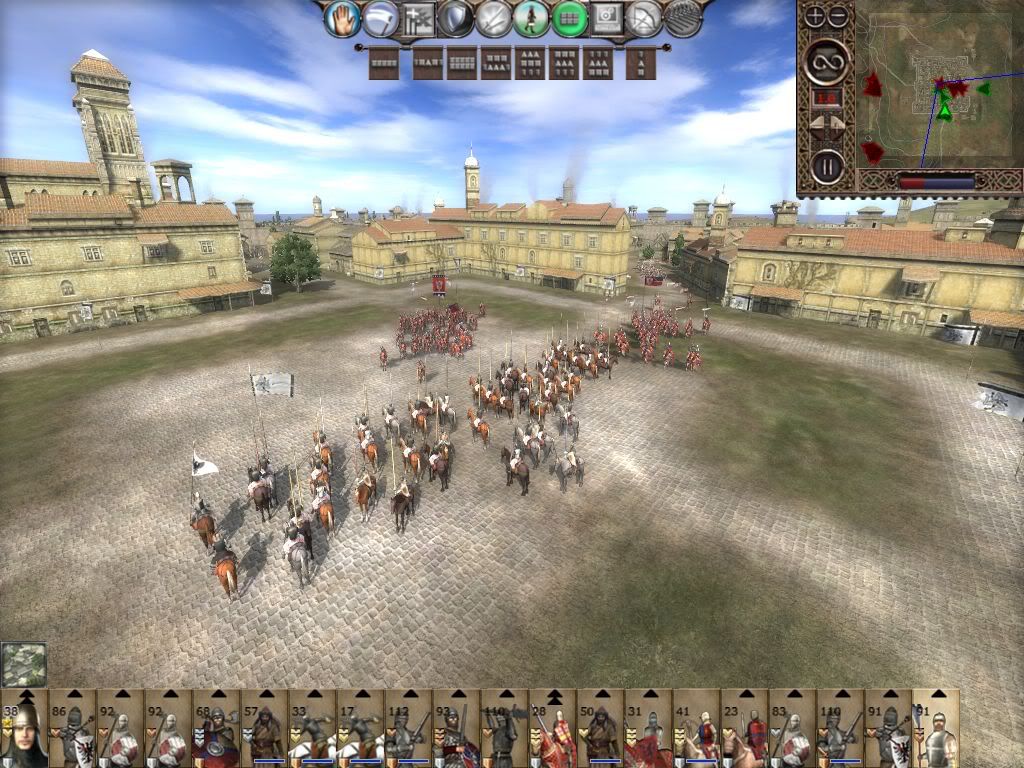
The garrison is soon roused and heavy fighting develops in the central square.
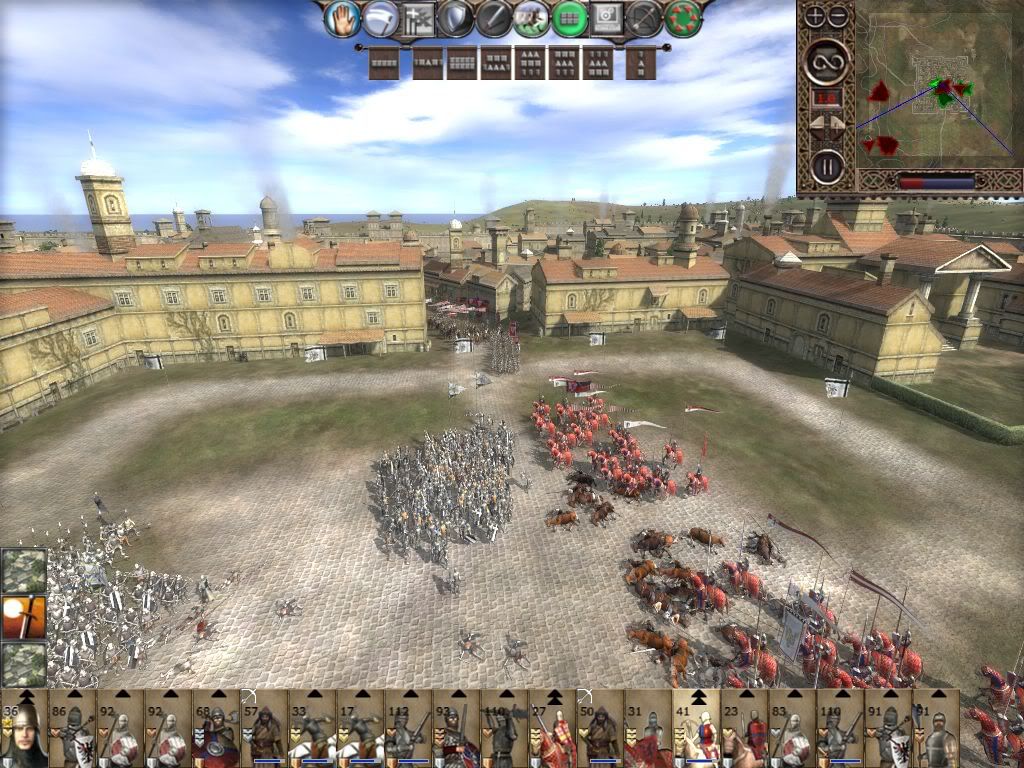
The Norman garrison puts up a hard fight hoping to hold out until the nearby Norman armies can arrive.
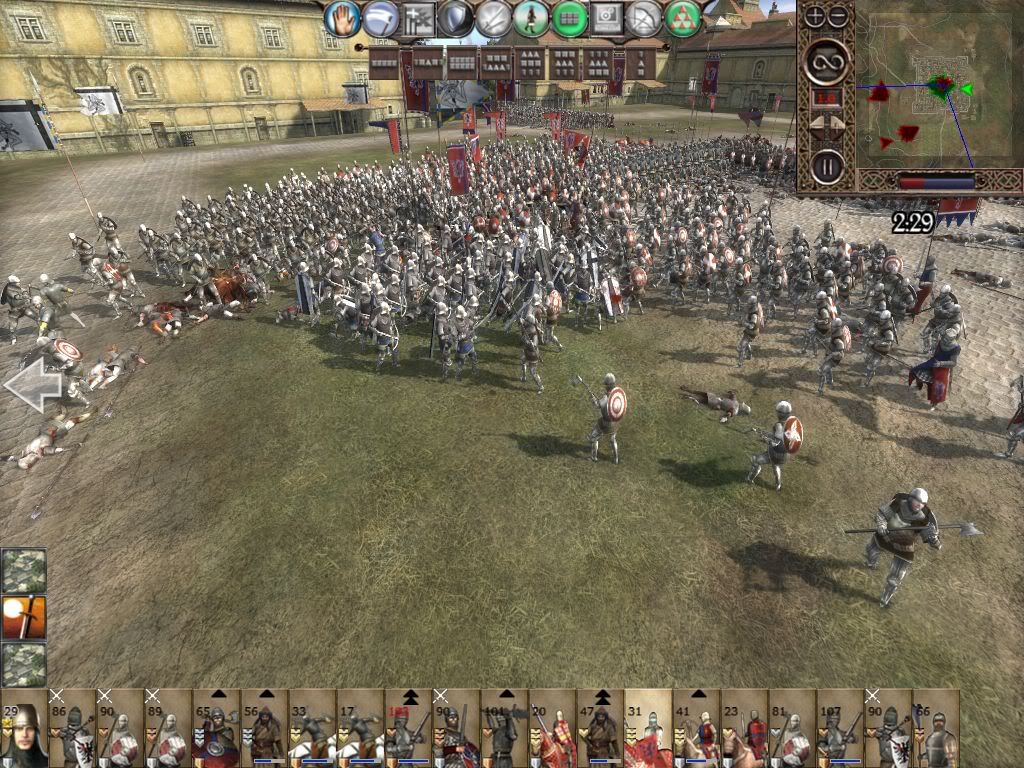
The Norwegian army simply overwhelms the garrison and King Karl considers meeting the approaching Norman armies at the gates but decides to secure Syracuse first.
Game Info-
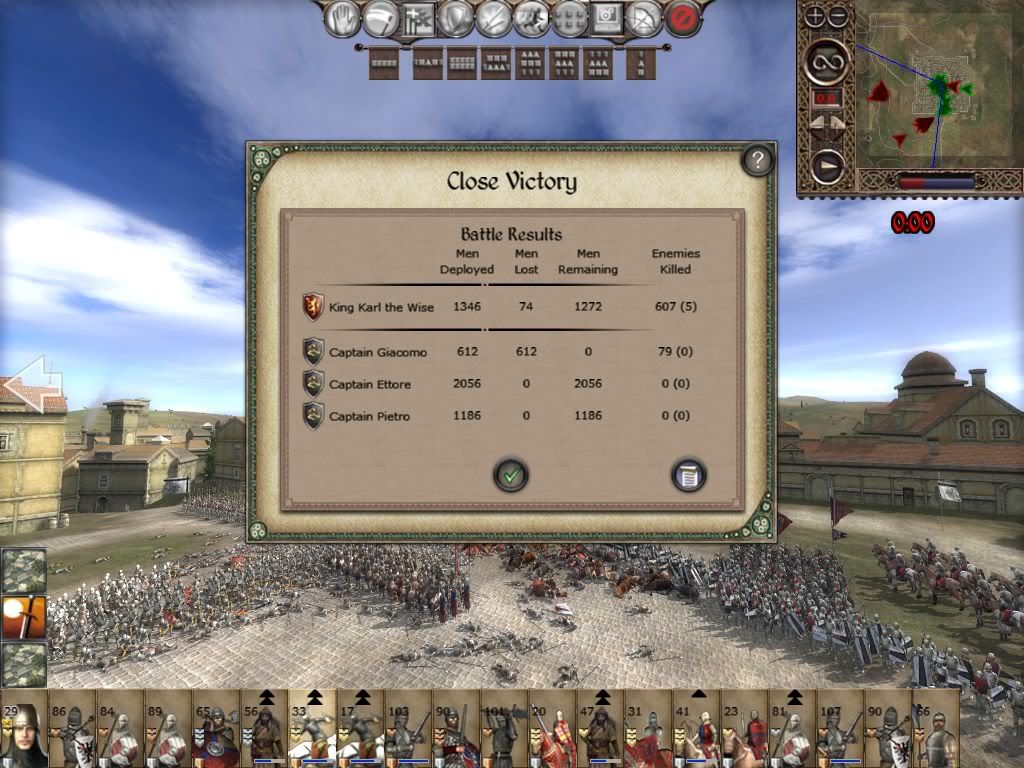
Casualties from capturing the city are fairly light and the approaching Norman armies turn away when they realize the city is held by Norway.
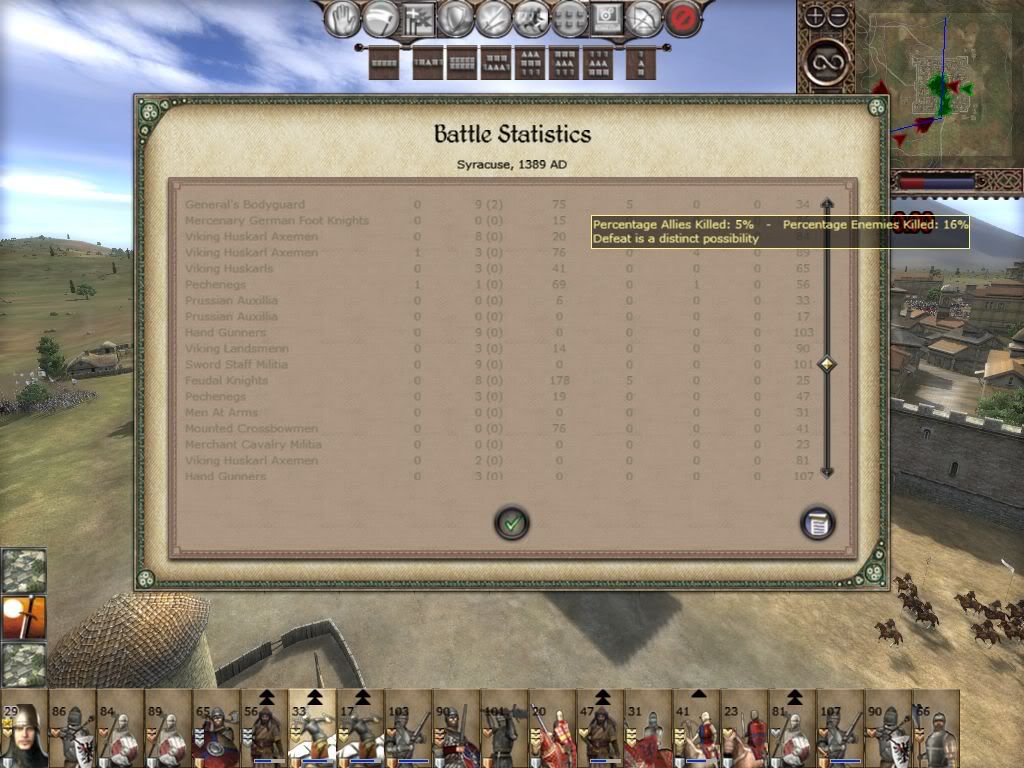
King Karl secures Syracuse more quickly than he anticipated and sallies out to catch the nearest Norman army before it can move and link with the 2nd Norman army to the NE.
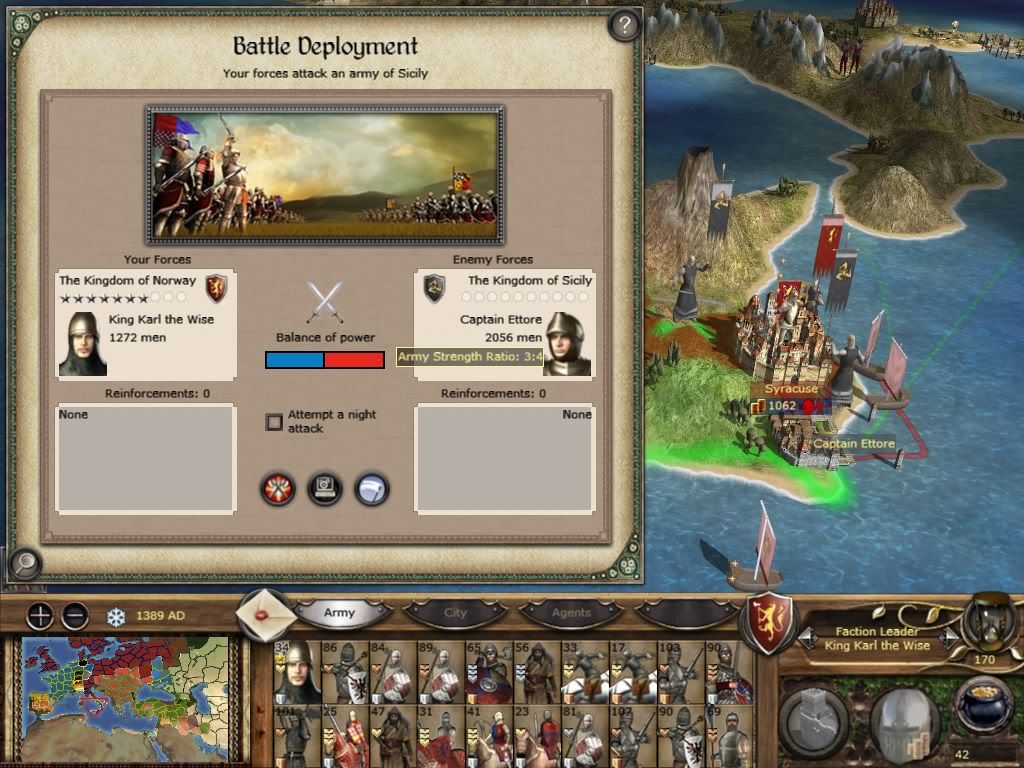
Karl sends the cavalry forward but the Pecheneg horse archers take serious losses from the Pavise crossbows in the Norman army so Karl orders his heavy cavalry to charge.
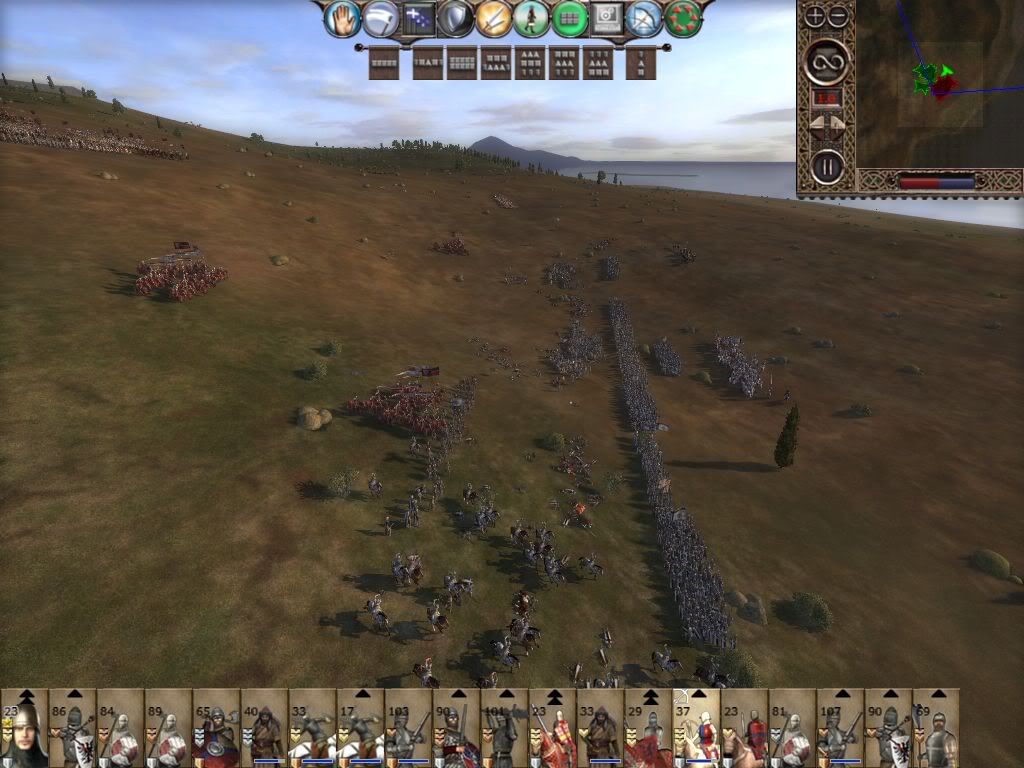
While the Norwegian heavy cavalry charges the Norman lines repeatedly the Normans send their own heavy cavalry up the slope into the Norwegian infantry. A hail of javelins greet them and Huskarl axemen readied for the charge.
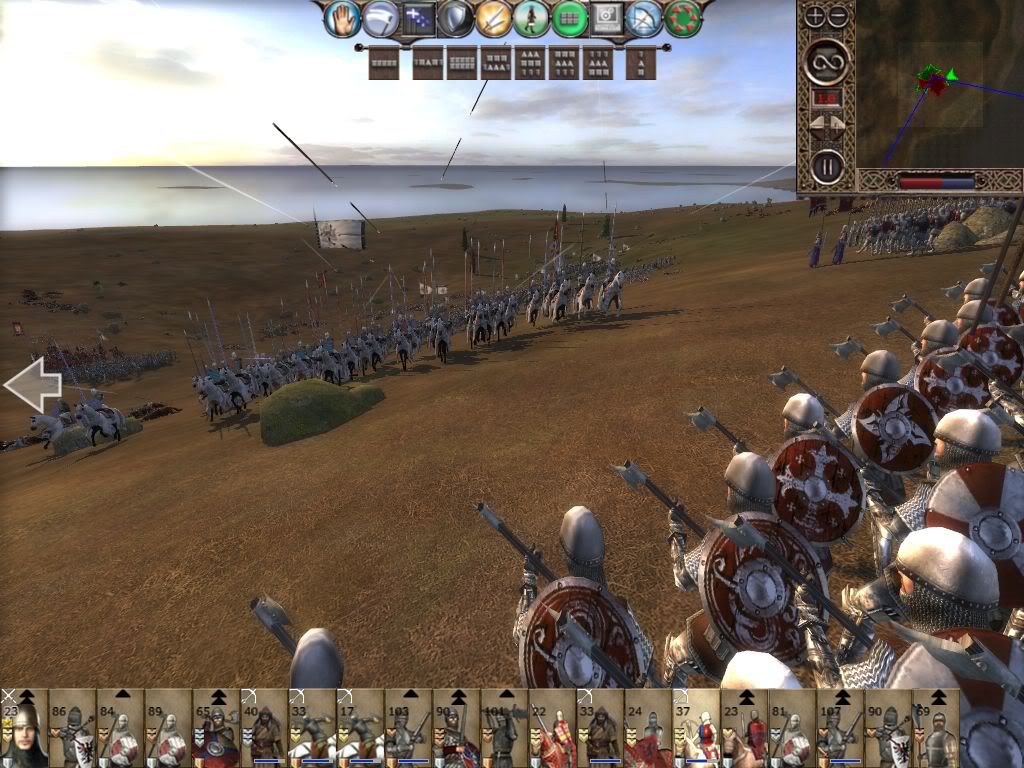
Karl charges the Norman knights from their rear once their charge has foundered on the slope and the Huskarl infantry.

Karl slays the Norman commander with his charge and the rest of the Norman army offers slight resistance when the Norwegian infantry charges down the hill into their lines. Casualties are light.

The Pecheng horse archers take the heaviest losses because they are so difficult to replace.

Karl advances rapidly to force the next Norman army into battle.
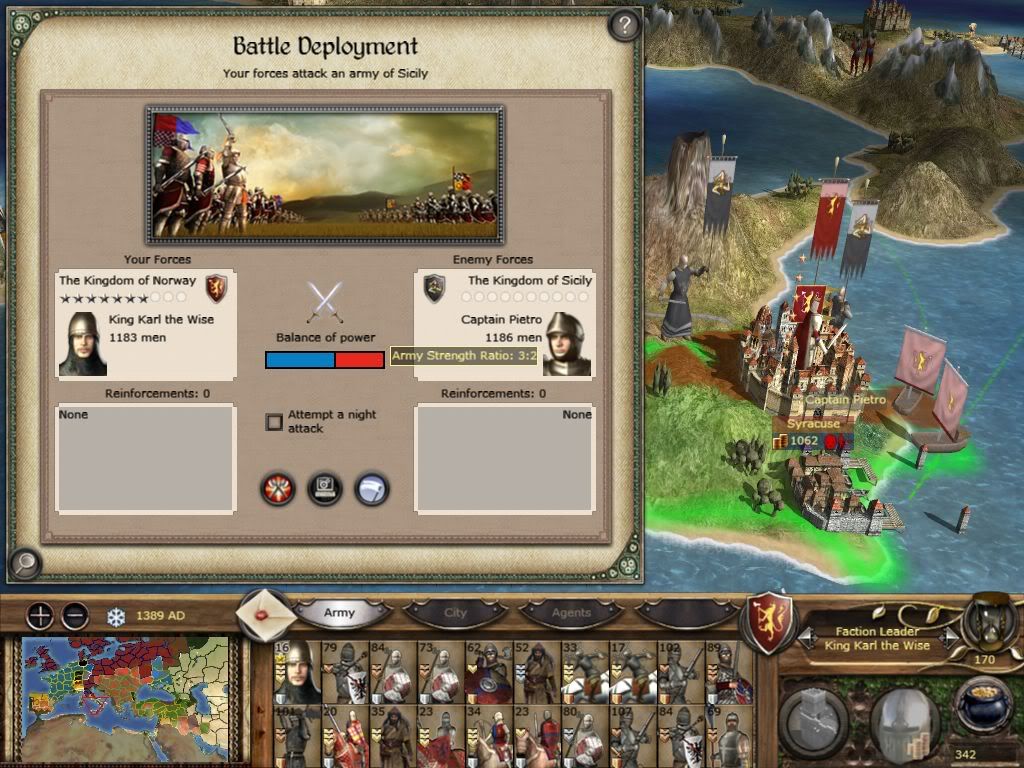
The battle opens under heavy rain and the armies quickly clash...
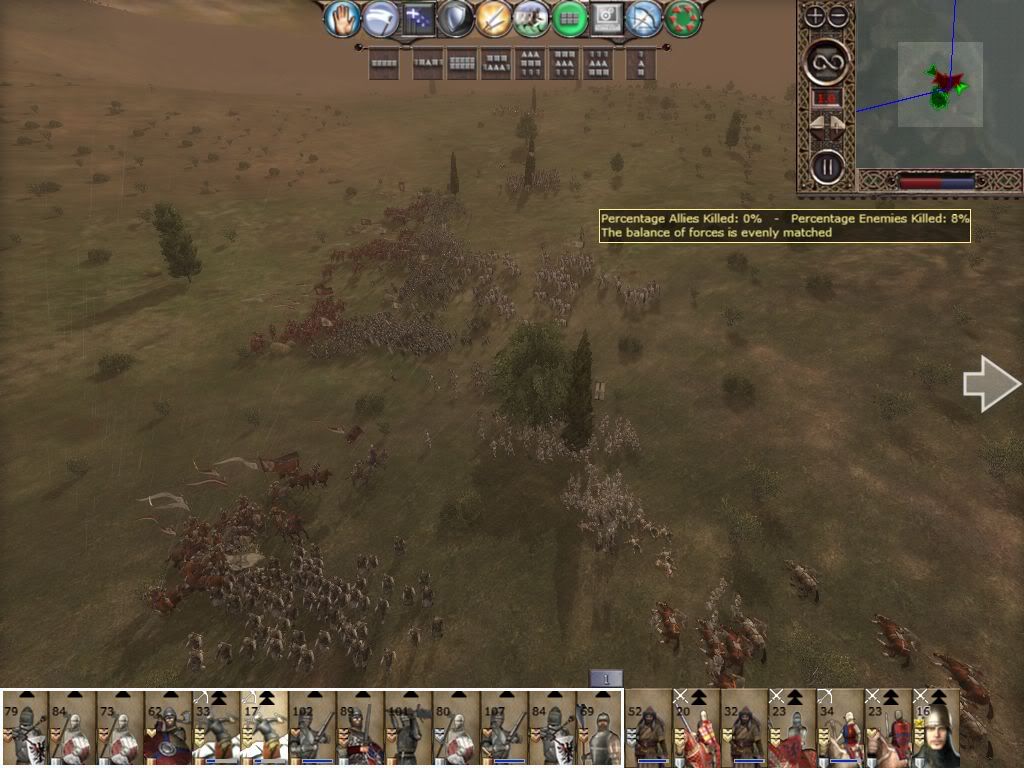
Prussian light cavalry succeed in drawing off some of the Norman heavy cavalry and loose several volleys of javelins.
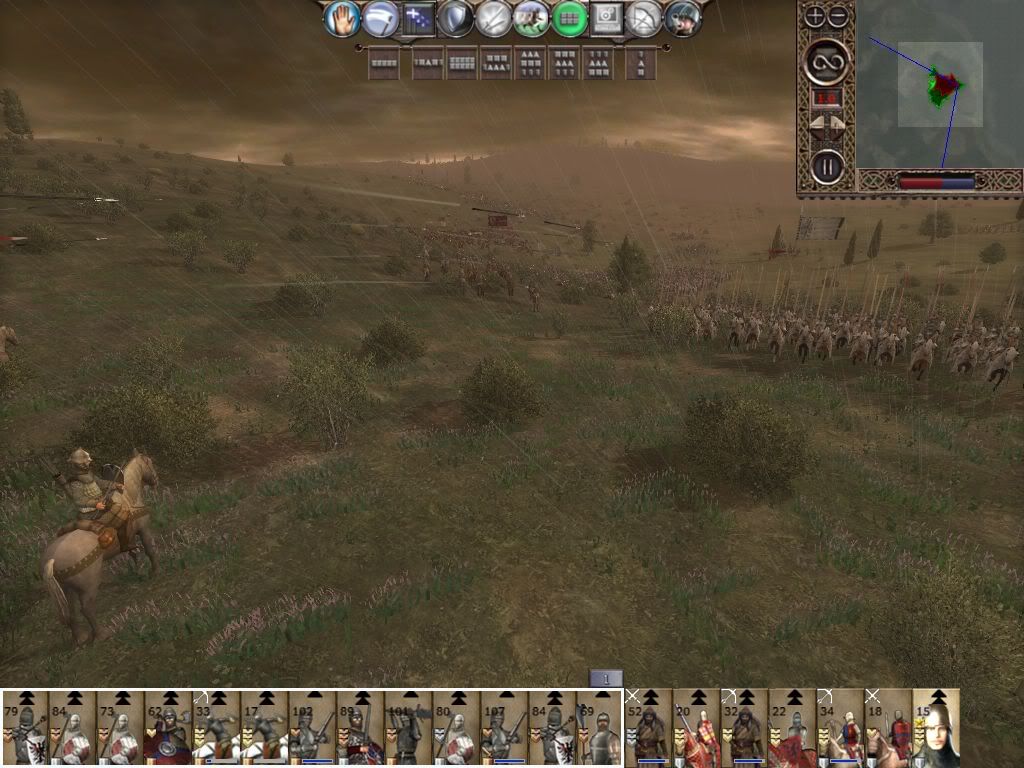
The Norwegian infantry storms the Norman lines and faces stiff resistance.

The Normans finally buckle when their commander is slain but the Prussian light cavalry has lost the interest of the pursuing Norman heavy cavalry who return with a devastating charge against a company of Norwegian Swordstaff militia.
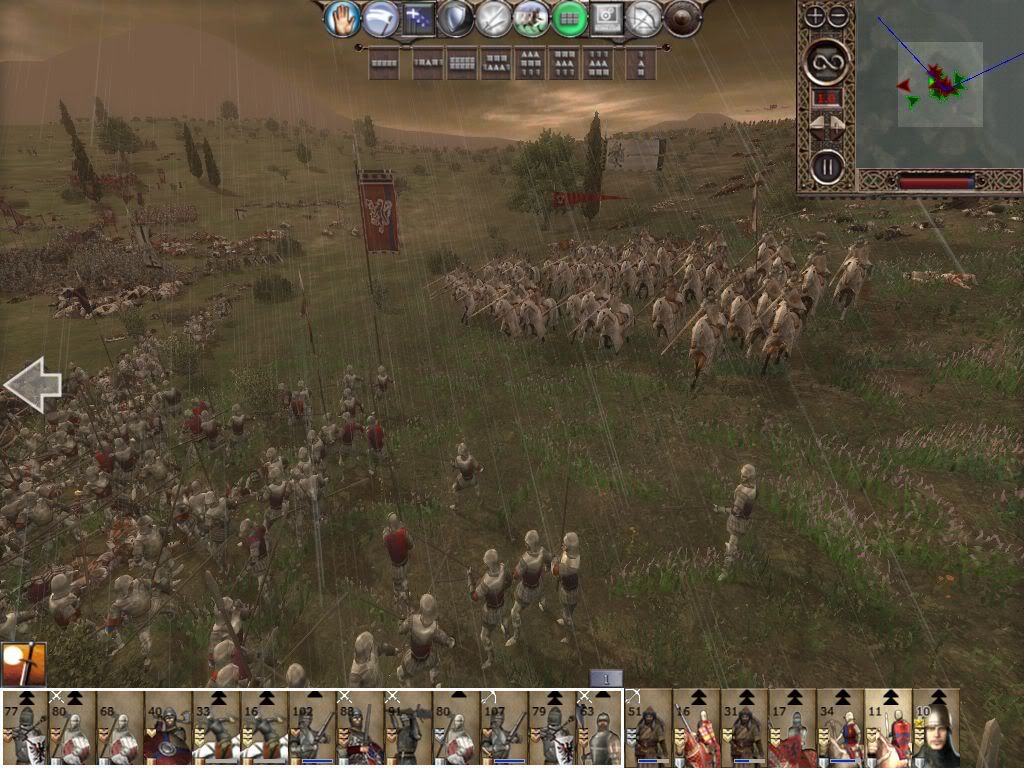
The rain ends just as the Prussians sweep towards the rear of the last company of Norman knights who flee the field as Handgunners open fire on their flank.

The battle is a victory.
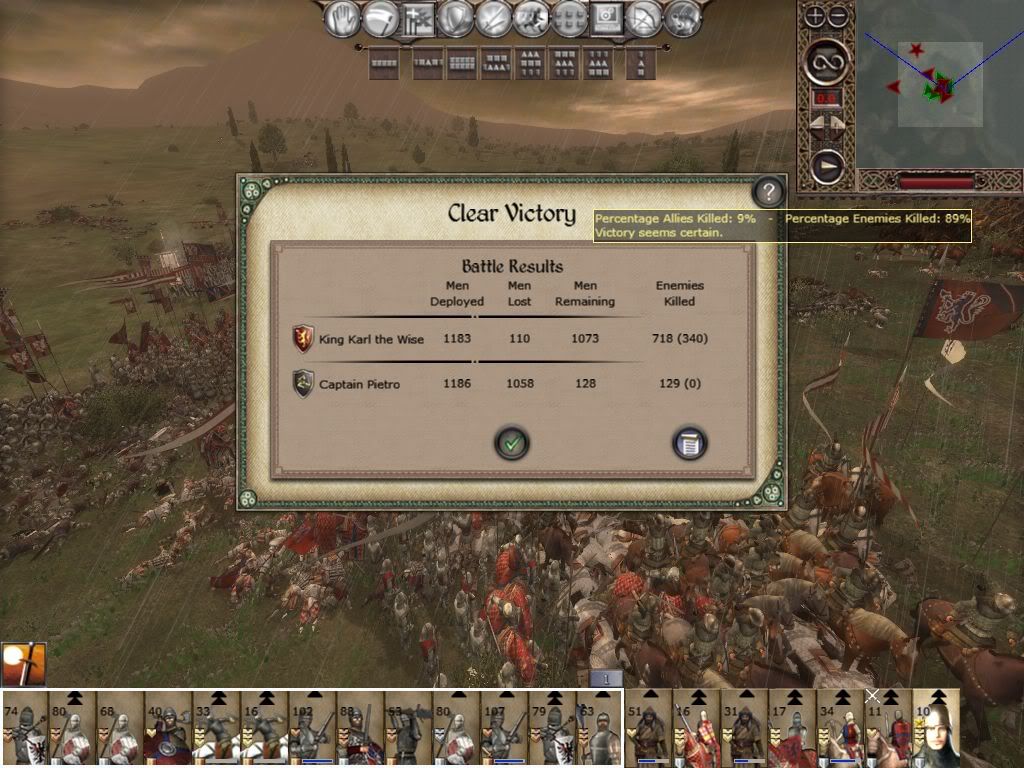
The Swordstaff militia company takes the heaviest losses.
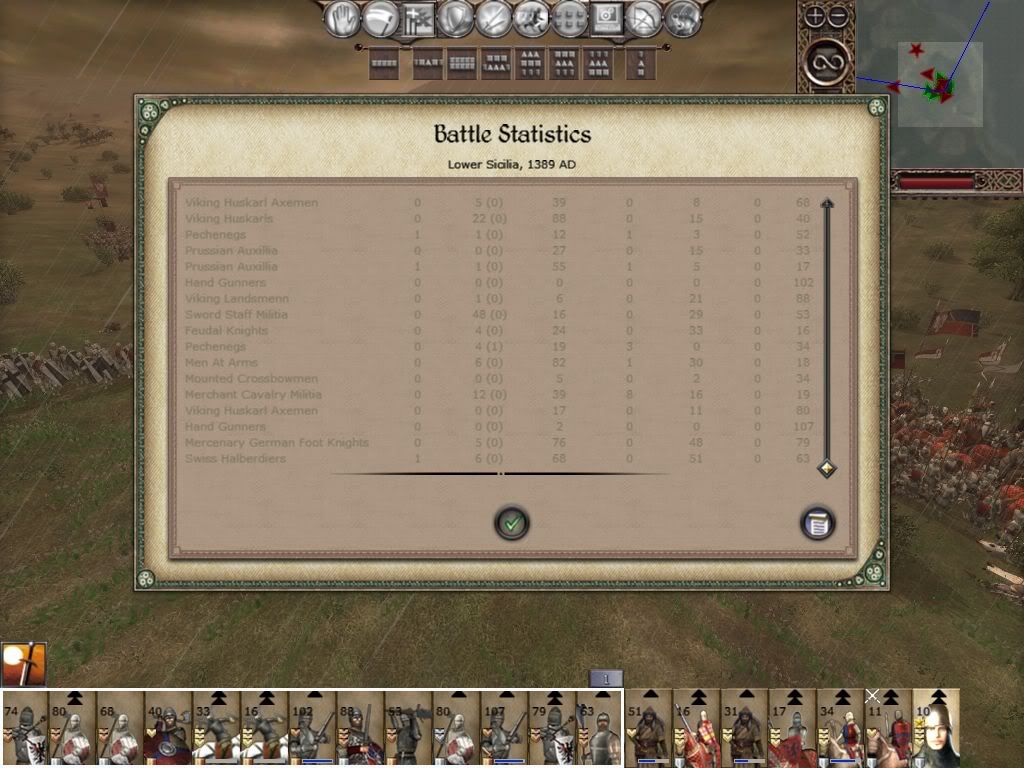
Karl approaches the final Norman army near Syracuse and forces them into battle.

The Norman occupy the top of a ridge and Karl is forced to deploy his army as near as possible and hope to attain the ridge quickly as the Normans have several companies of Muslim archers and Pavise crossbowmen.
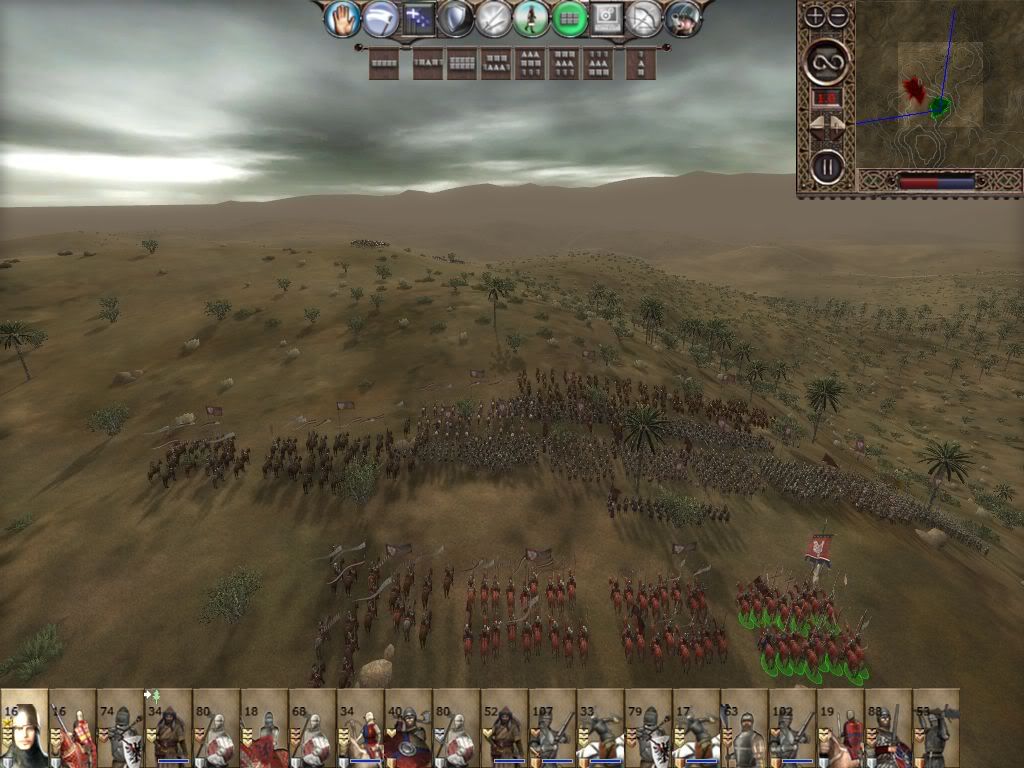
The Normans also brought 2 companies of Mounted crossbowmen which are the first to face a charge by the entirety of the Norwegian cavalry.
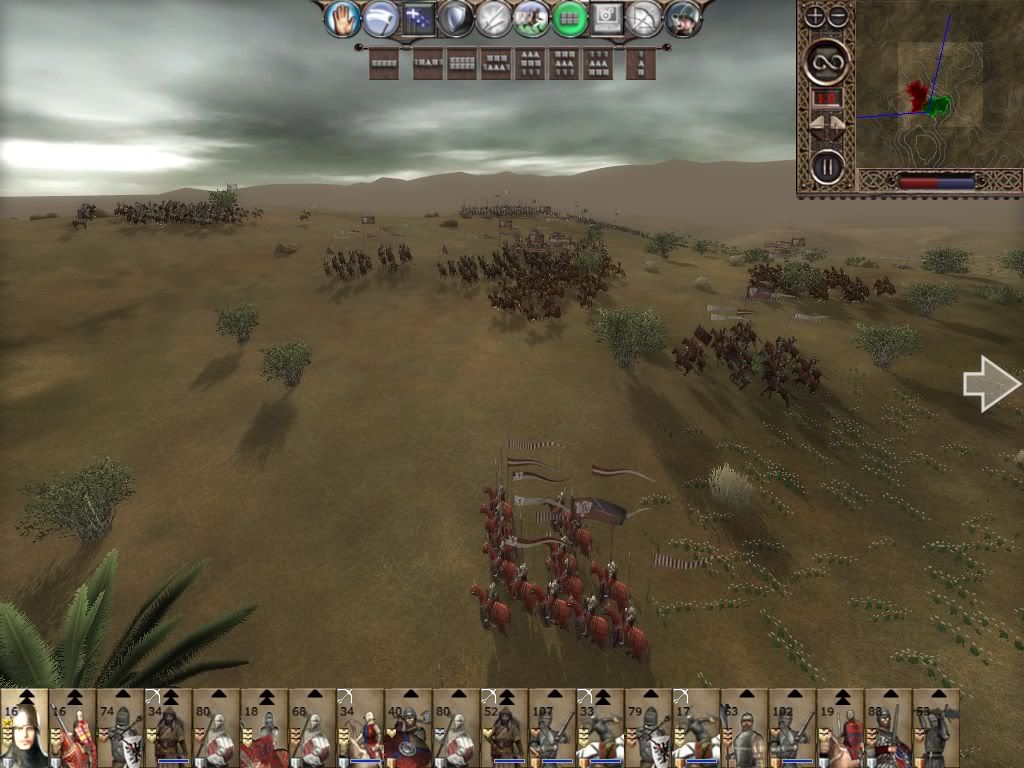
The Norman light cavalry is quickly eliminated and a stray unit of Muslim archers caught in the open. Karl decides to risk a direct charge on the Norman commander and his bodyguard of heavy cavalry before the rest of the Norman infantry can protect their general.
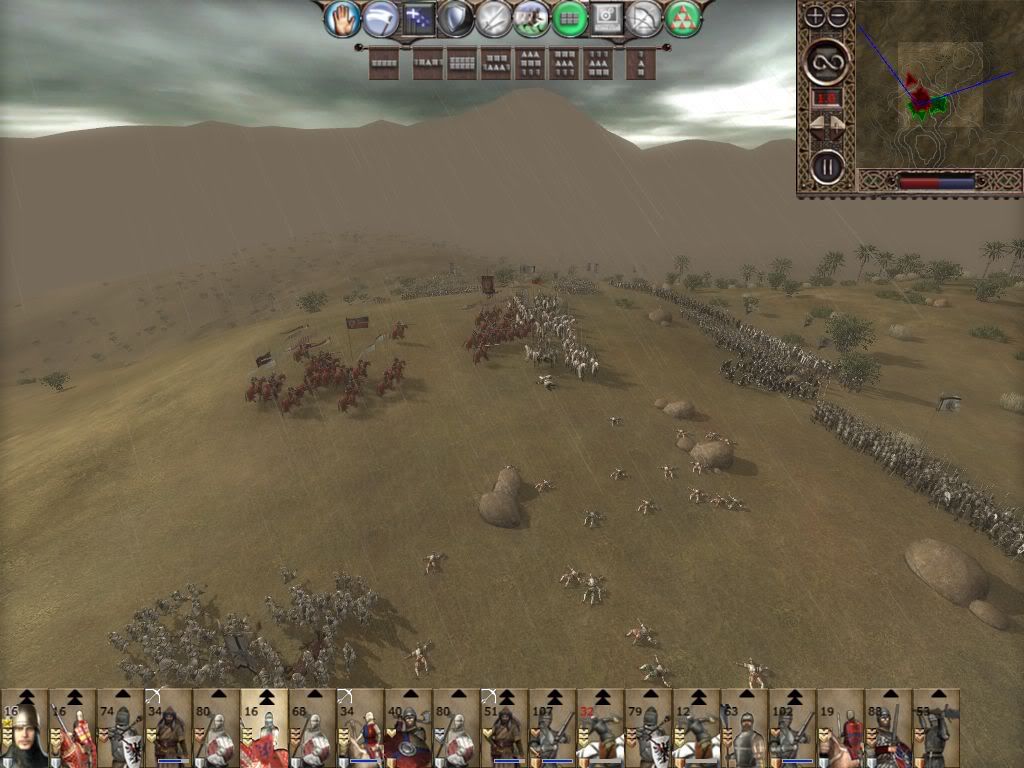
The Norwegian infantry which had been climbing the hill at a slow pace designed to sustain their stamina now break into a charge while Norwegian light infantry breaks off and chases down unprotected companies of Muslim archers on the Norman flanks.

Karl is forced to retreat when his attack on the Norman commander is beaten off but the Pecheneg horse archers move forward with the last of the Muslim archers eliminated and finish the job.
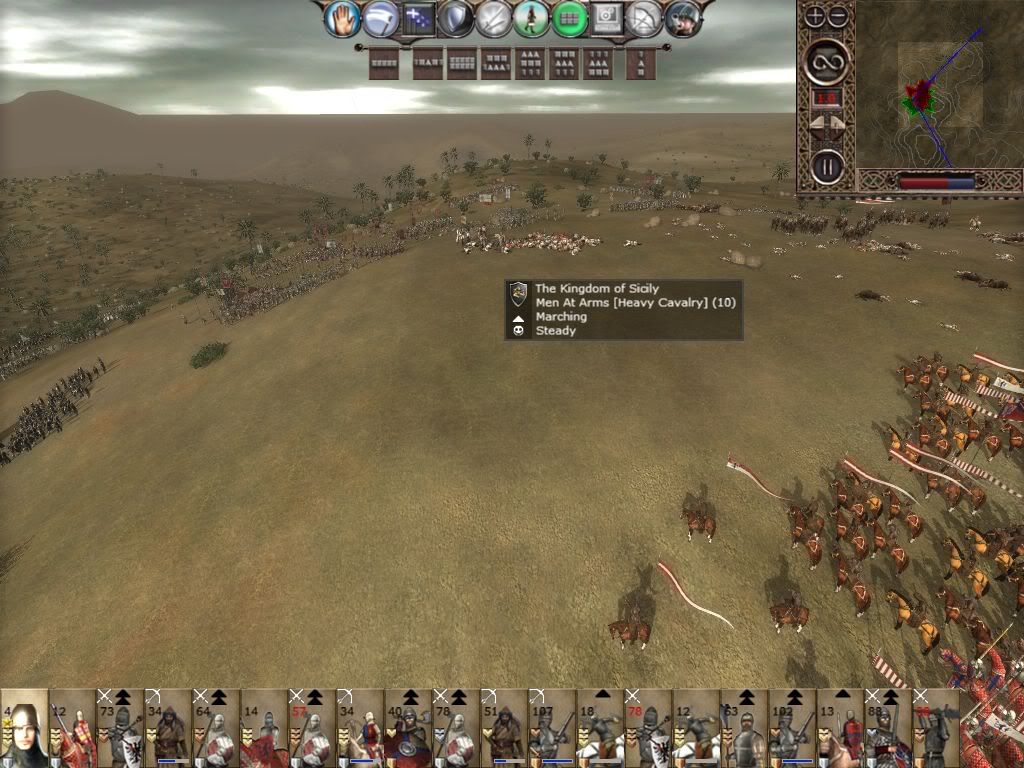
The battle swings into the Norwegians favor with the death of the Norman commander but 2 Norman companies put up a ferocious fight. A company of Halberd Men at Arms and another of Halberd militia. Surrounded on all sides their courage finally falters but lead to more heavy casualties than necessary.
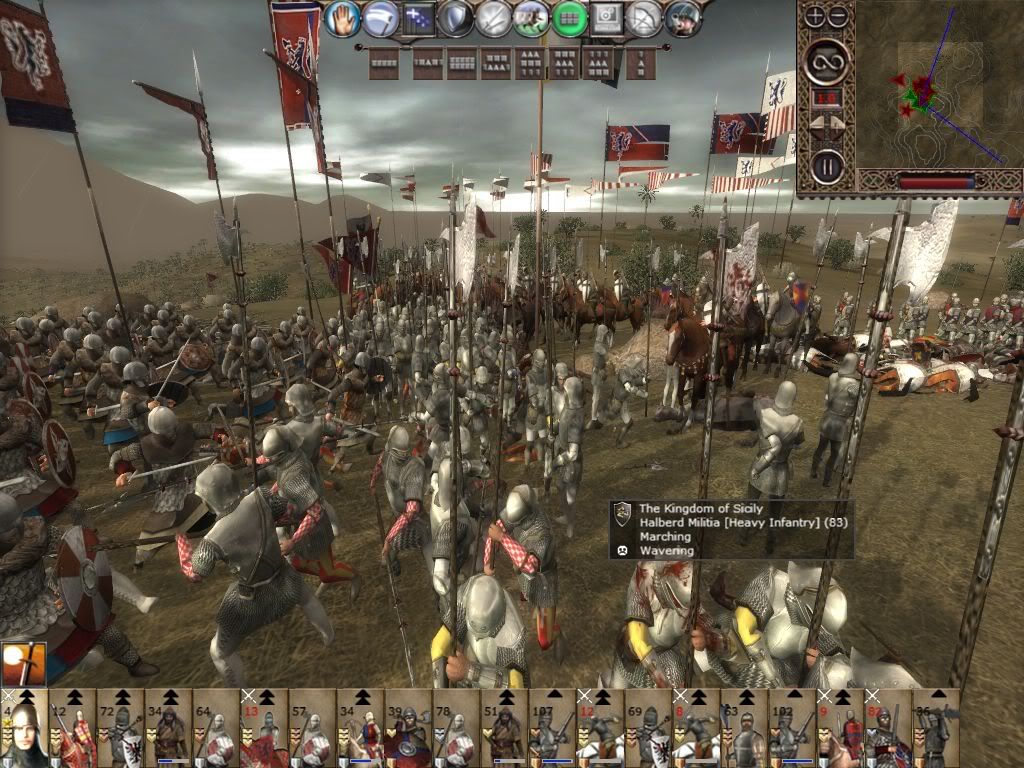
The battle is a clear victory but after 4 successive battles King Karl's army is beginning to show the strain of a long campaign.
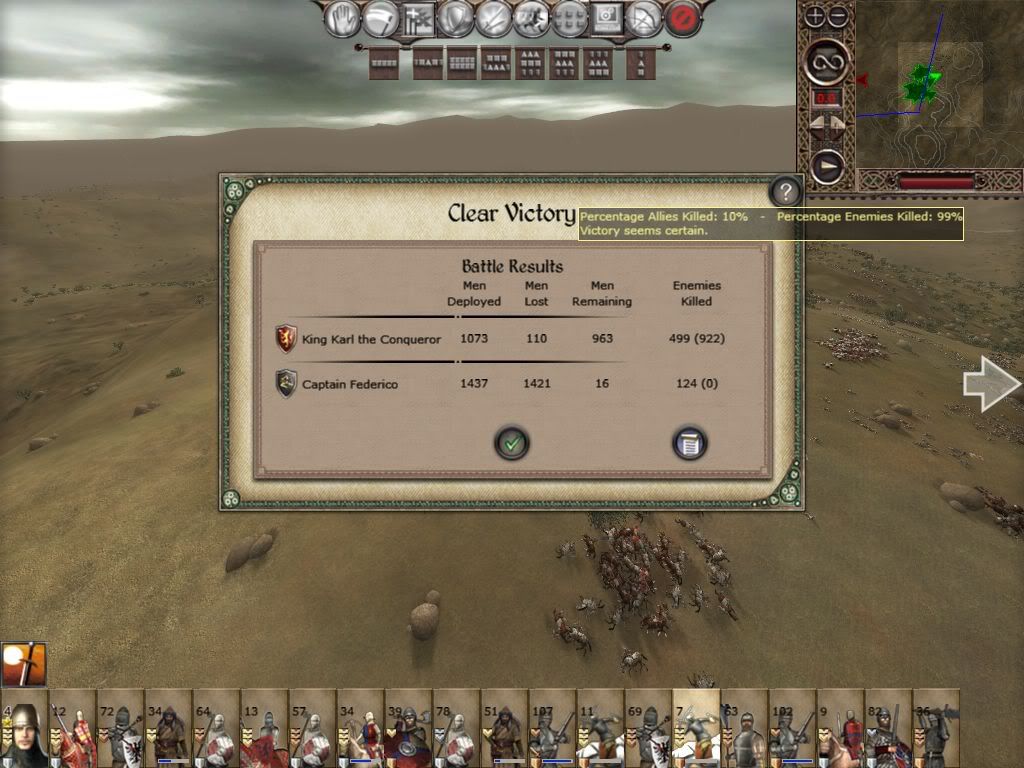
Casualties among the Norwegian cavalry have slowly accumulated and will need careful management or reinforcements before the next battle.
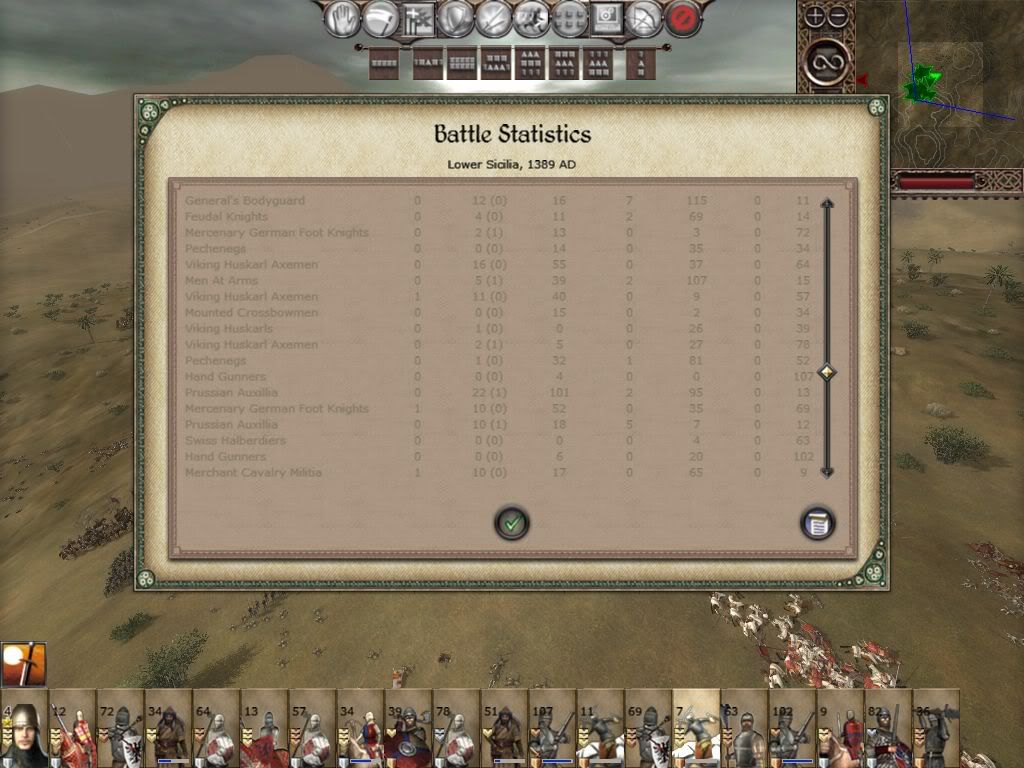
The Normans have fielded several units unfamiliar to Karl- Muslim archers, Sword and buckler men, and Halberd Men at Arms. Sicily has so far refused to meet ransom for its defeated armies after every battle.
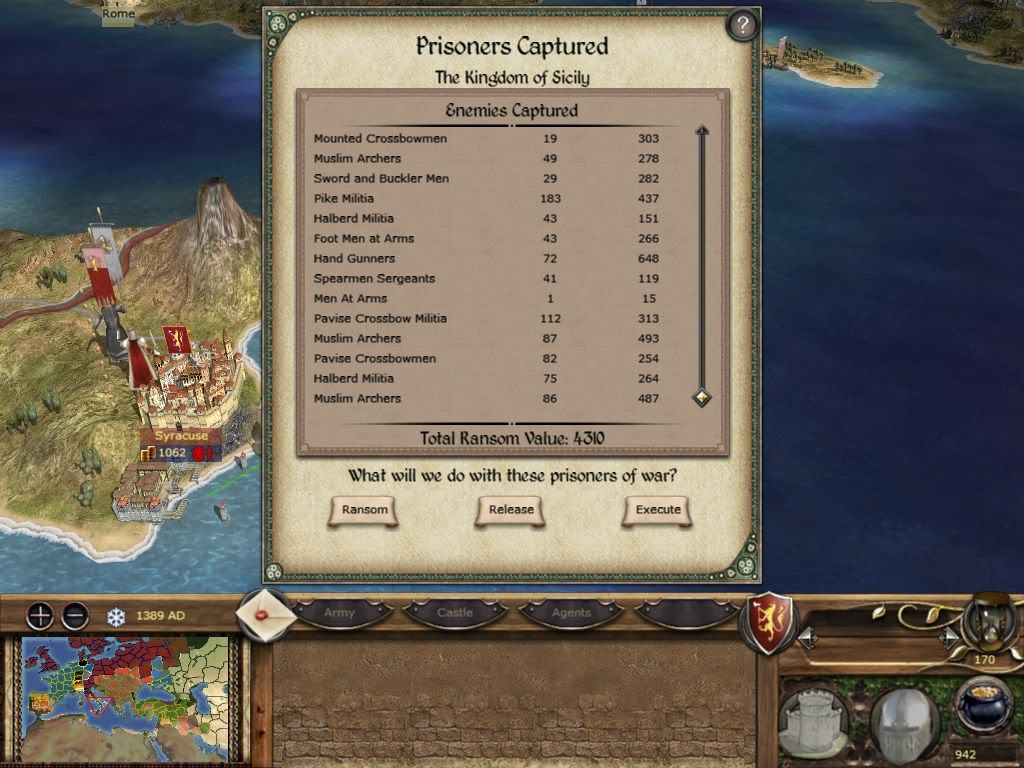
King Karl hears reports of the Norman armies guarding Palermo. A tough battle awaits to capture that Citadel.
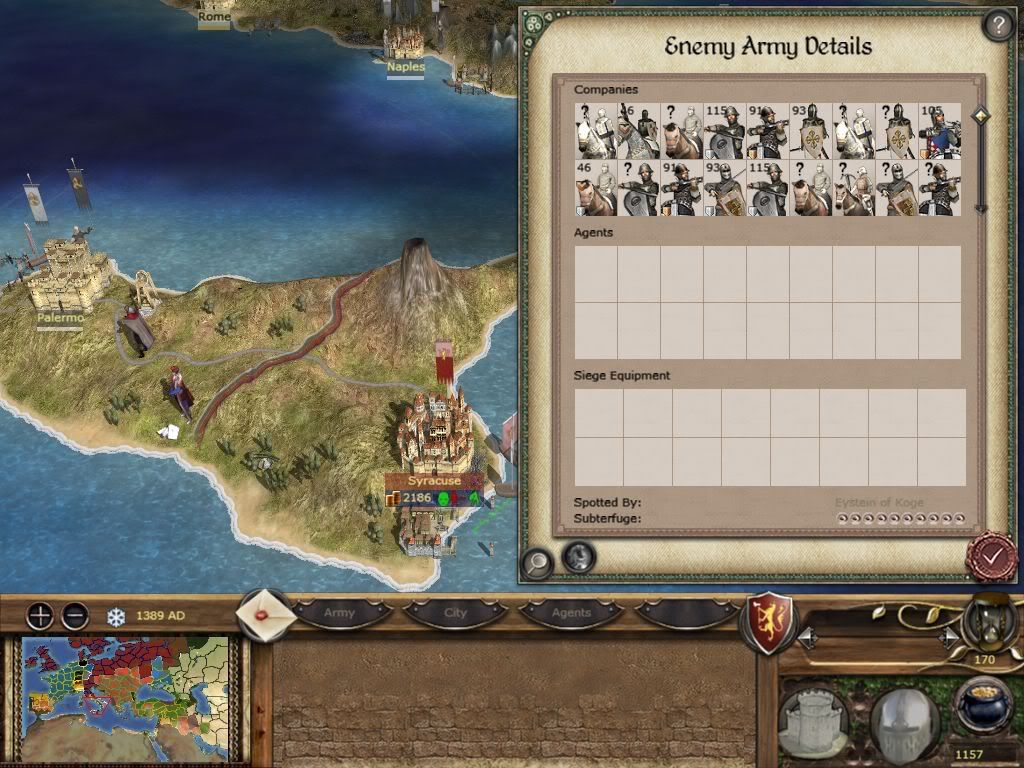
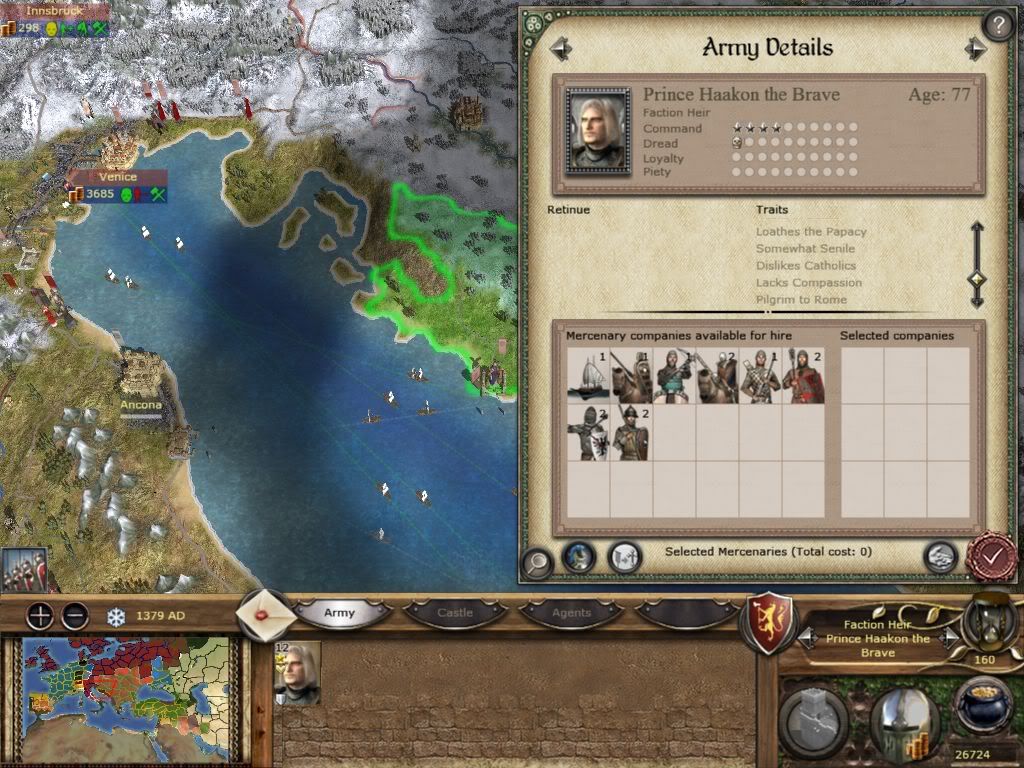





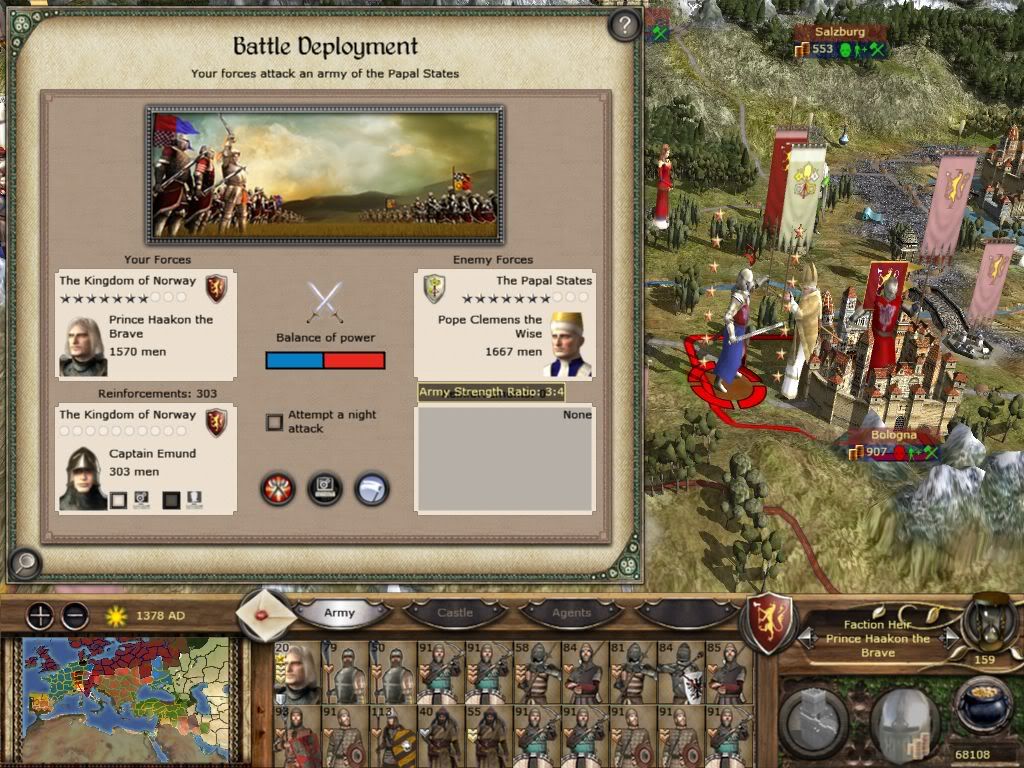
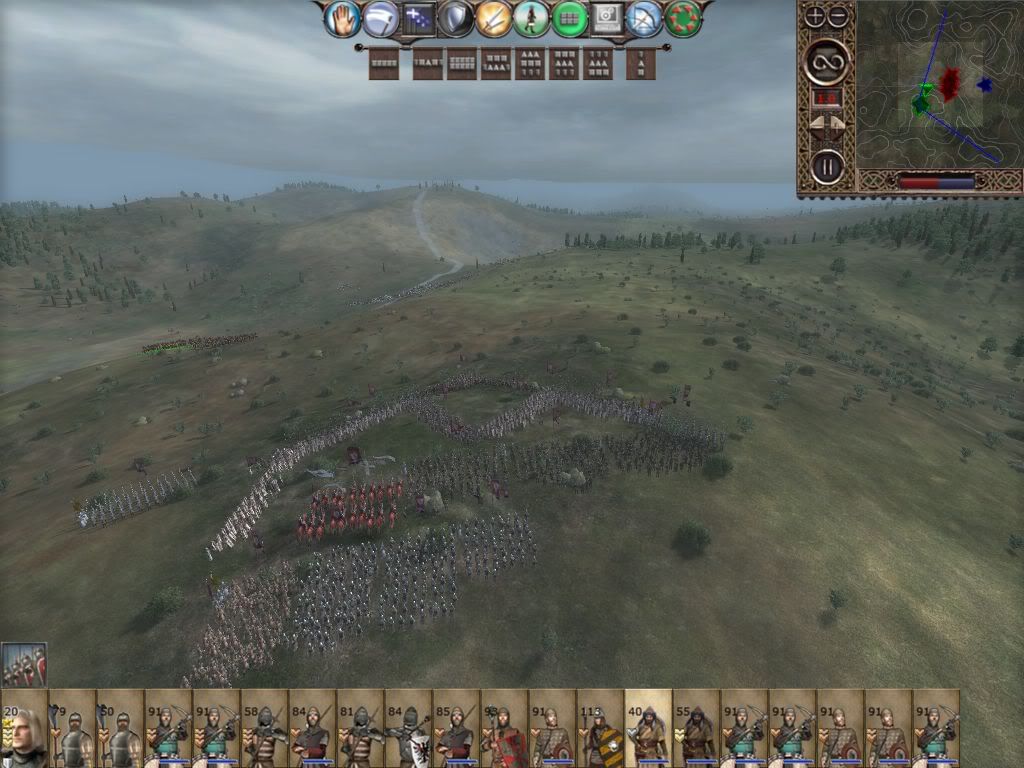
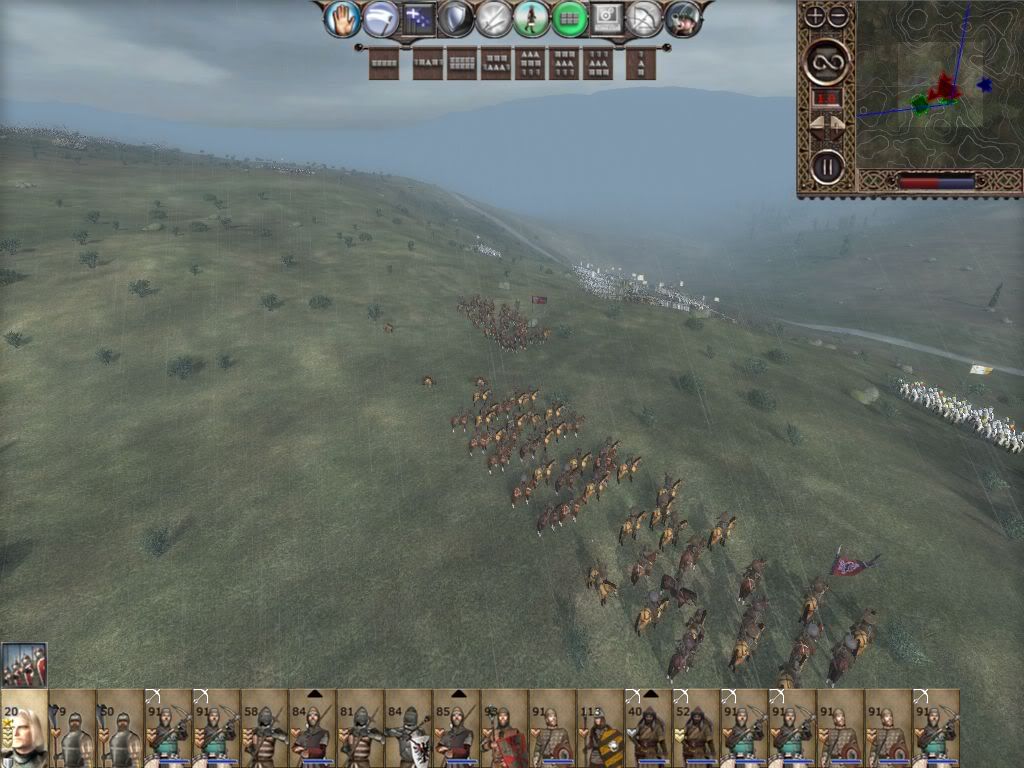

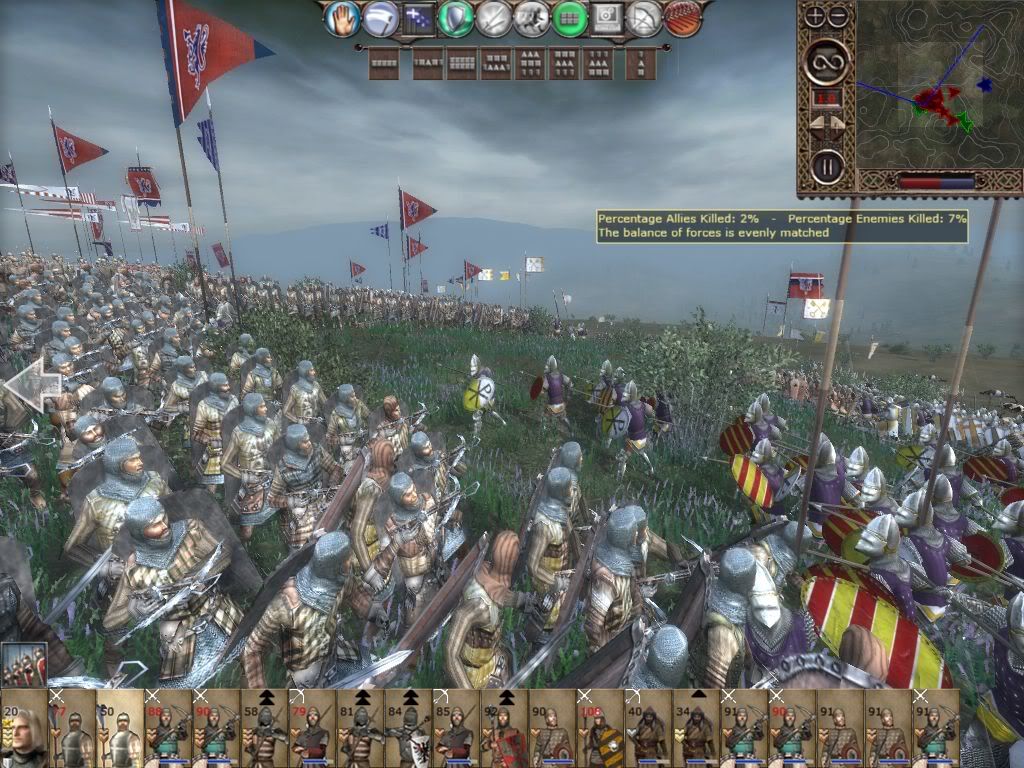
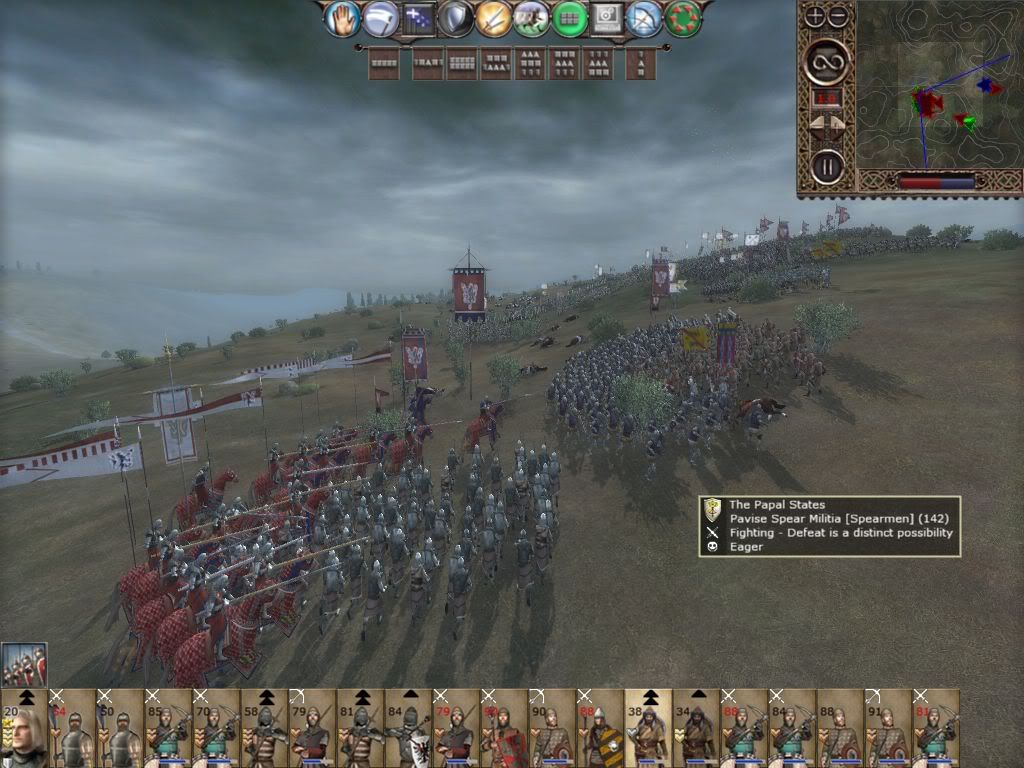
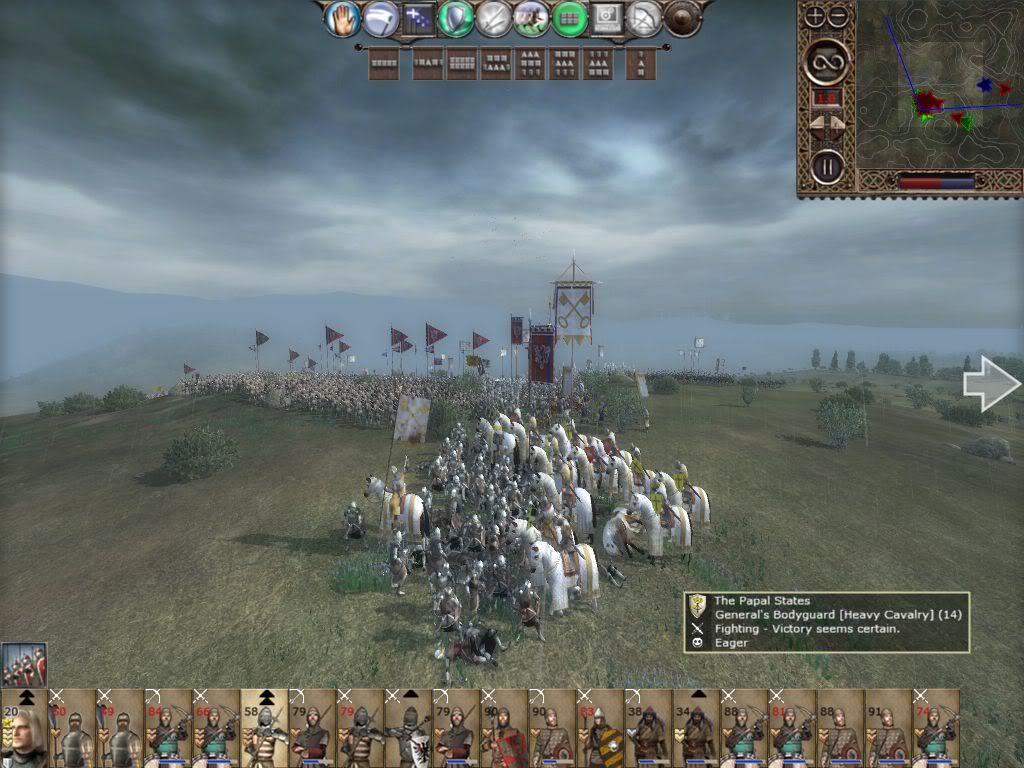
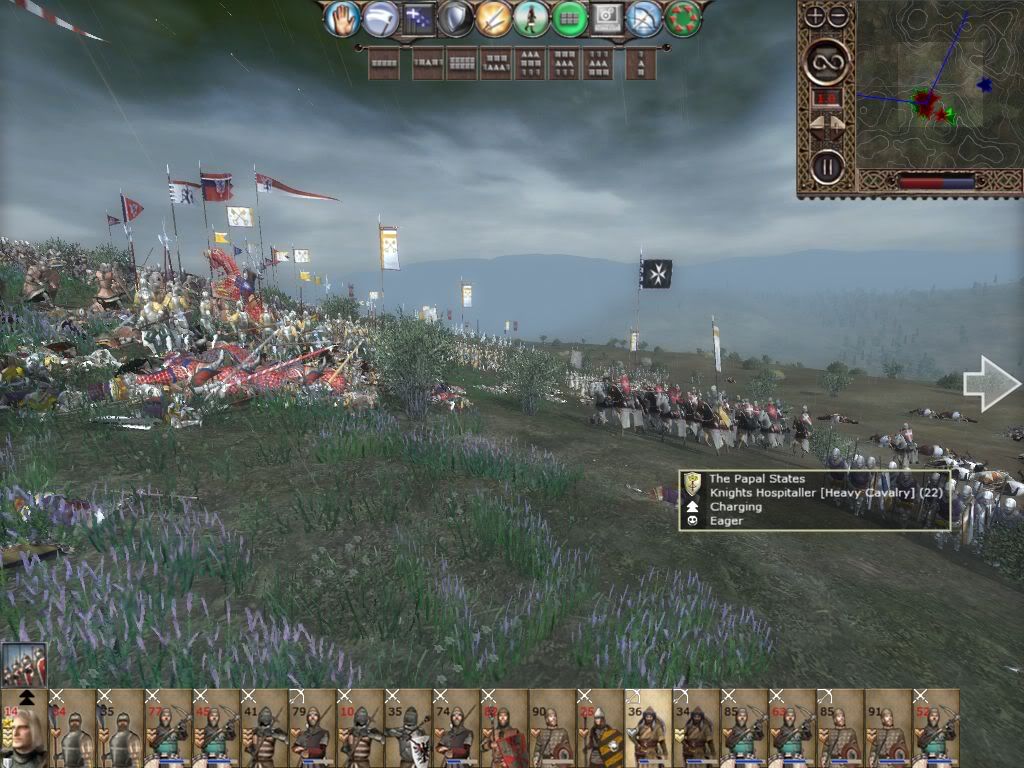
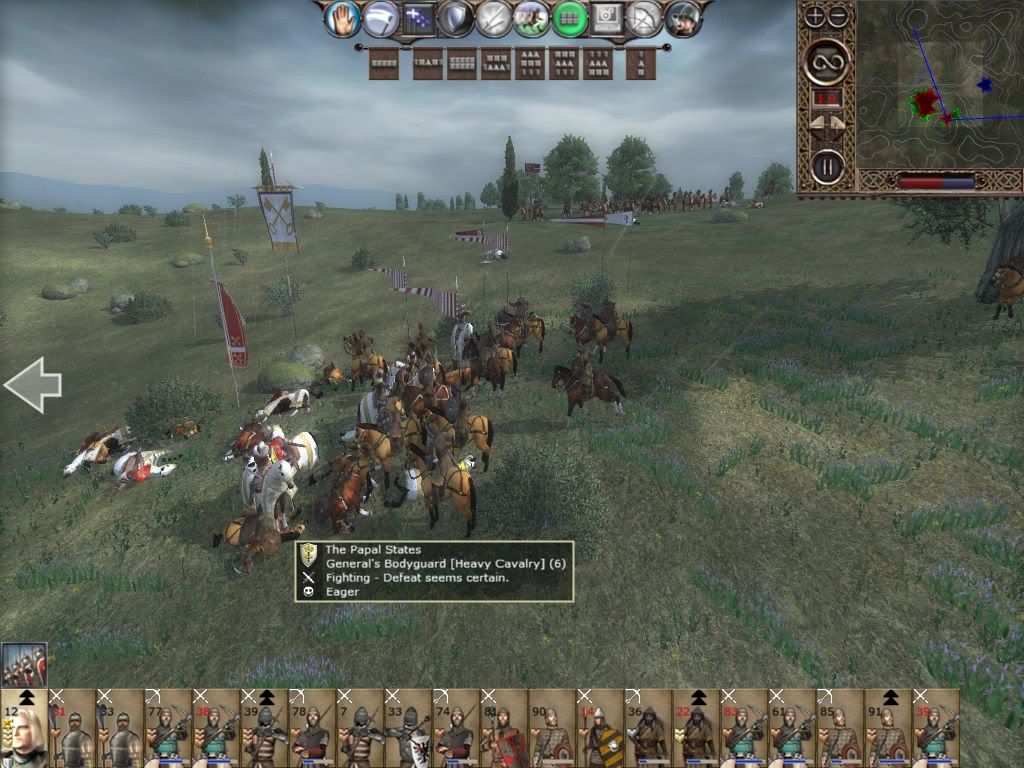
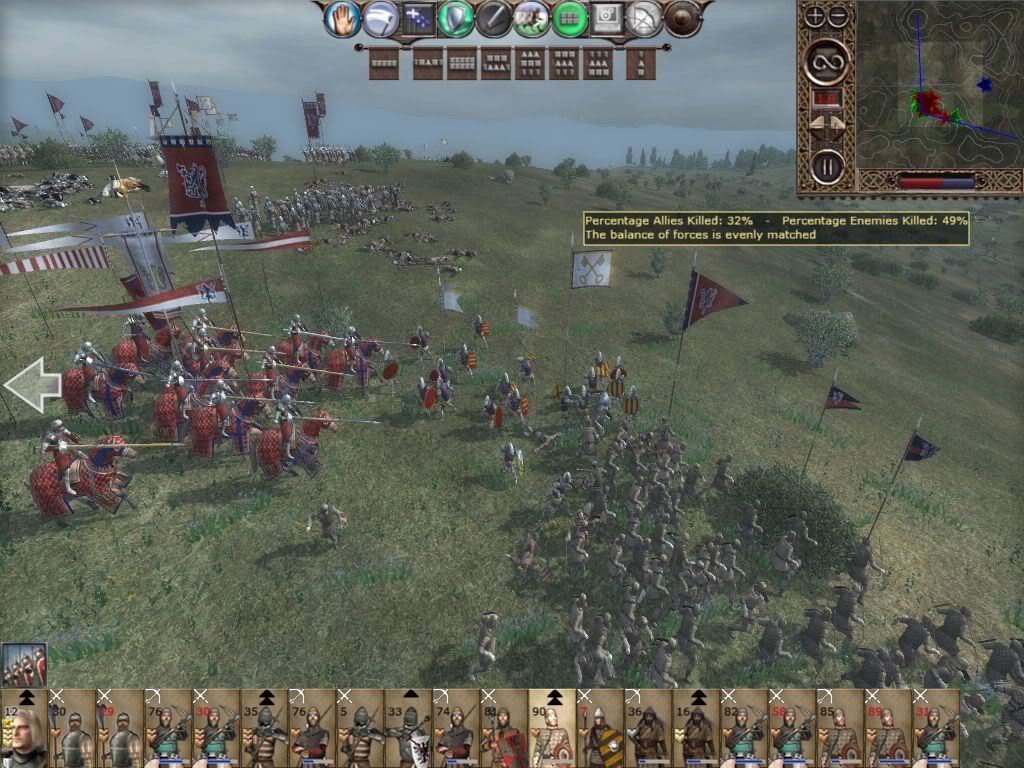
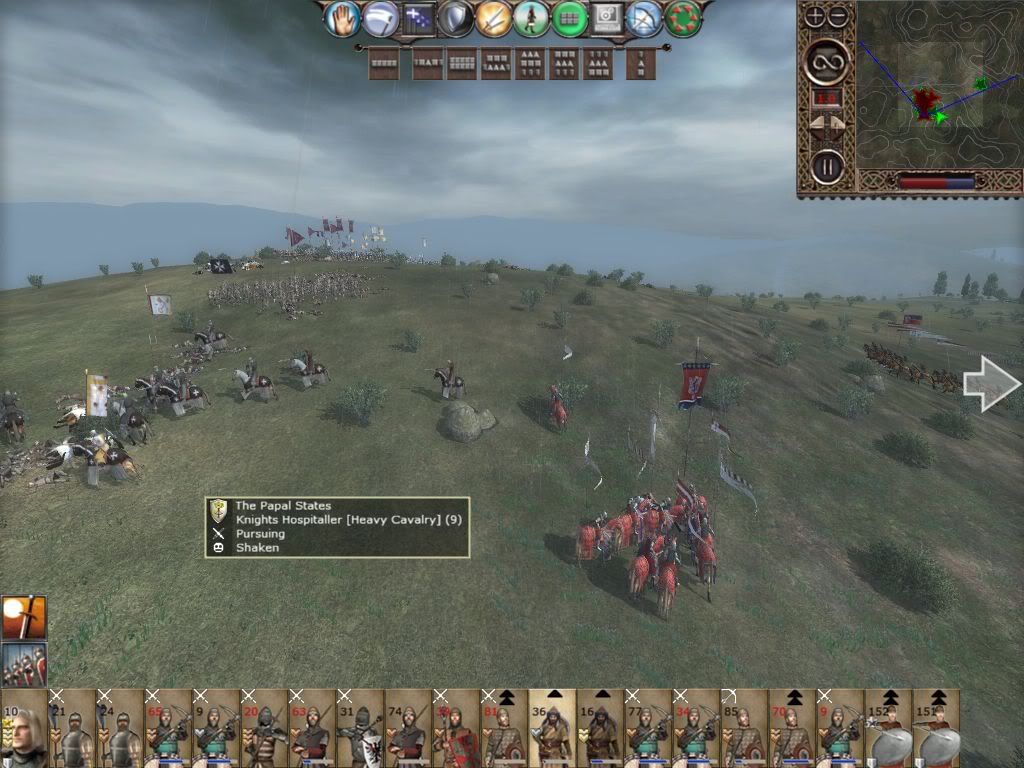
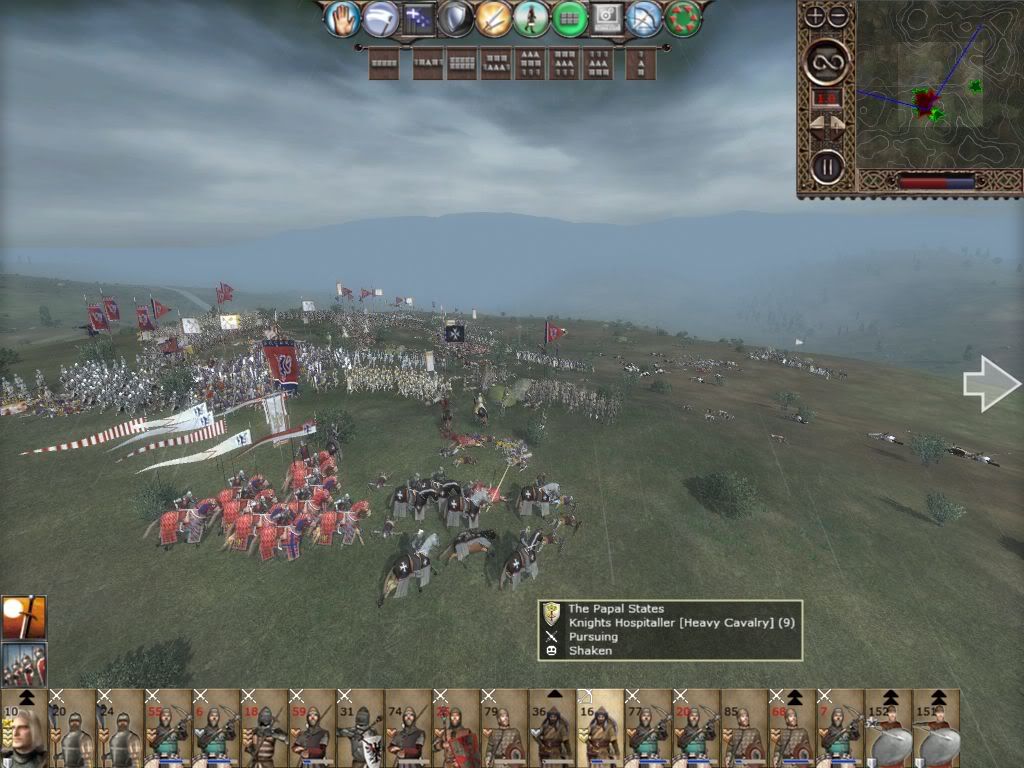
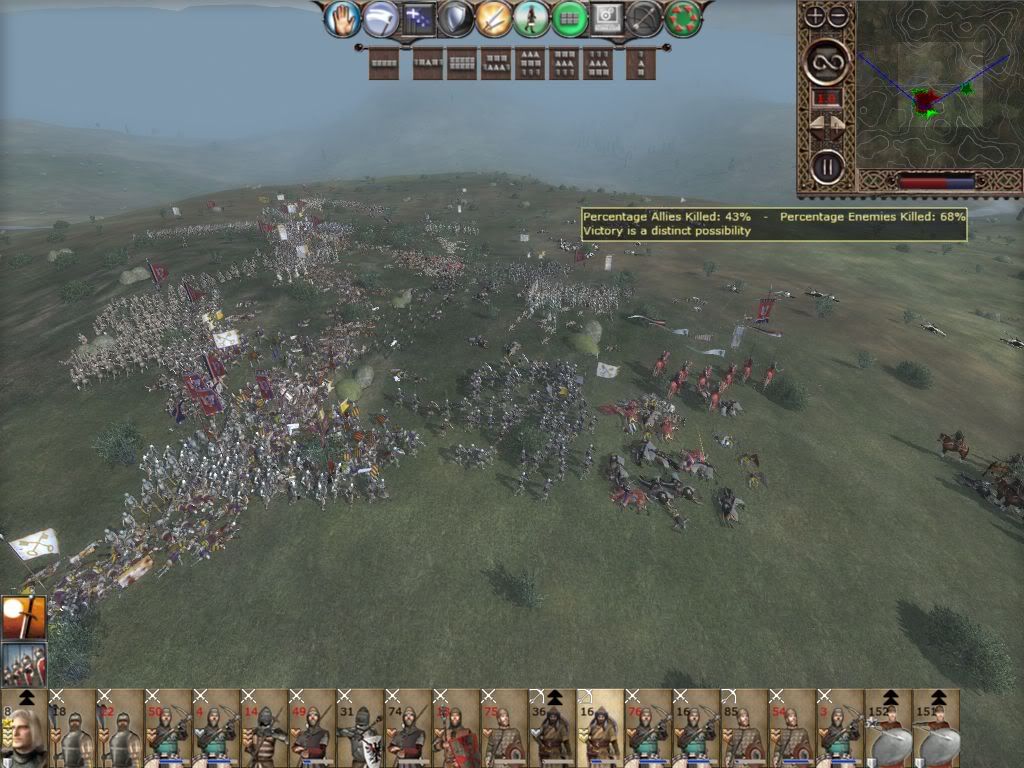
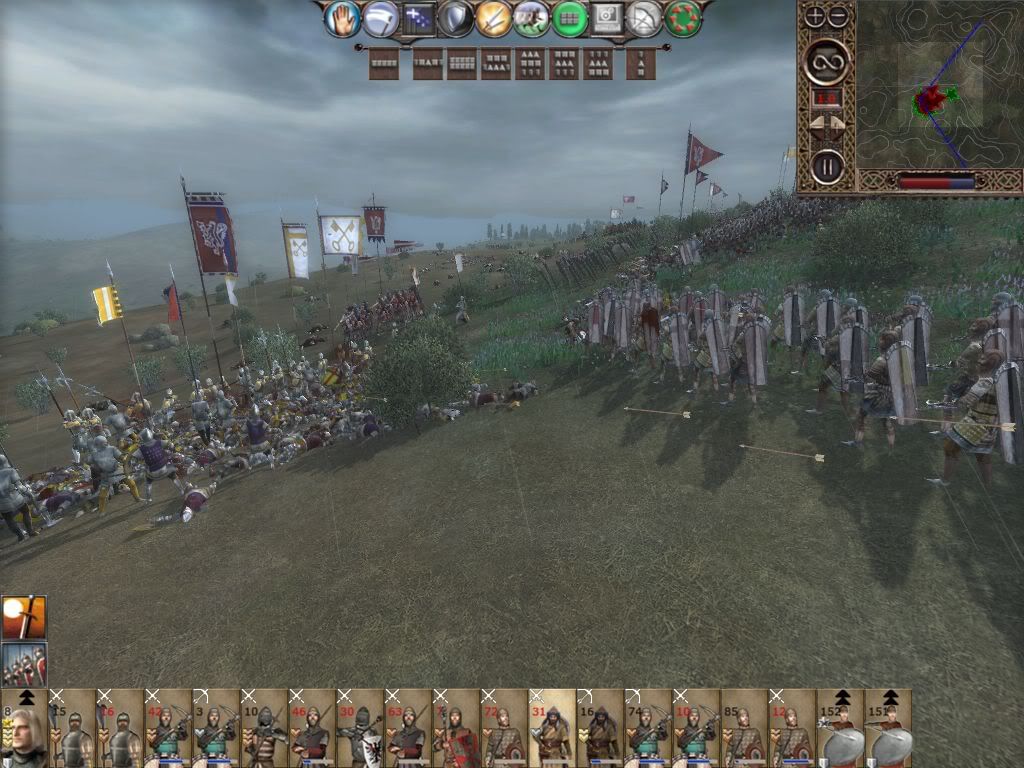
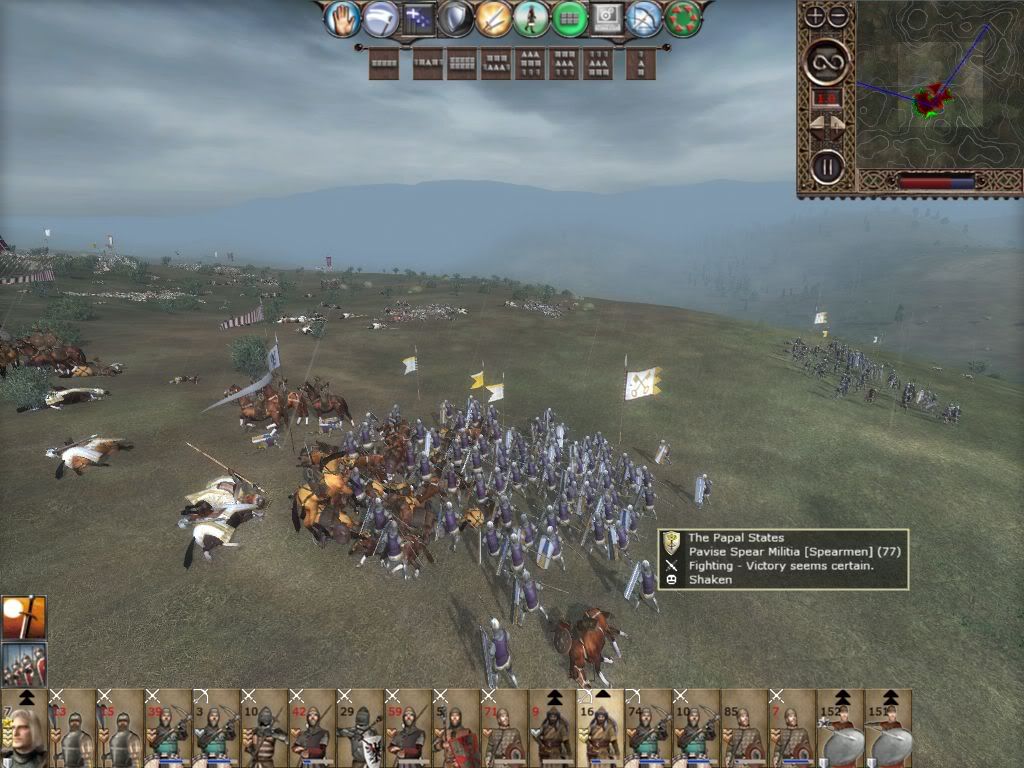
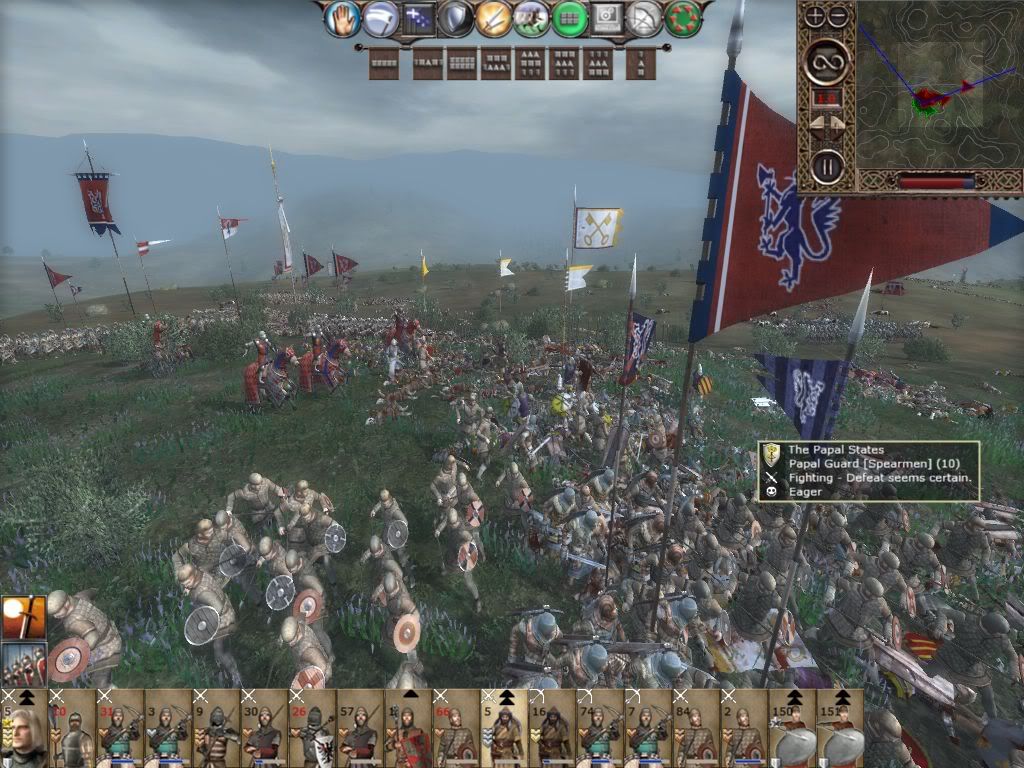
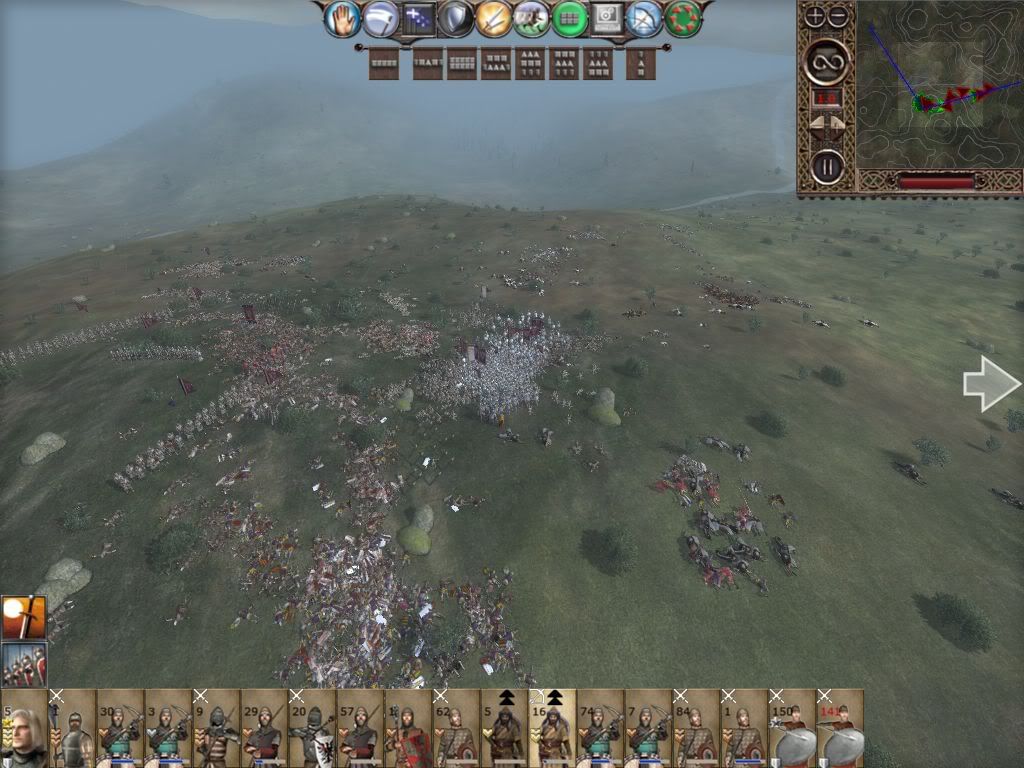
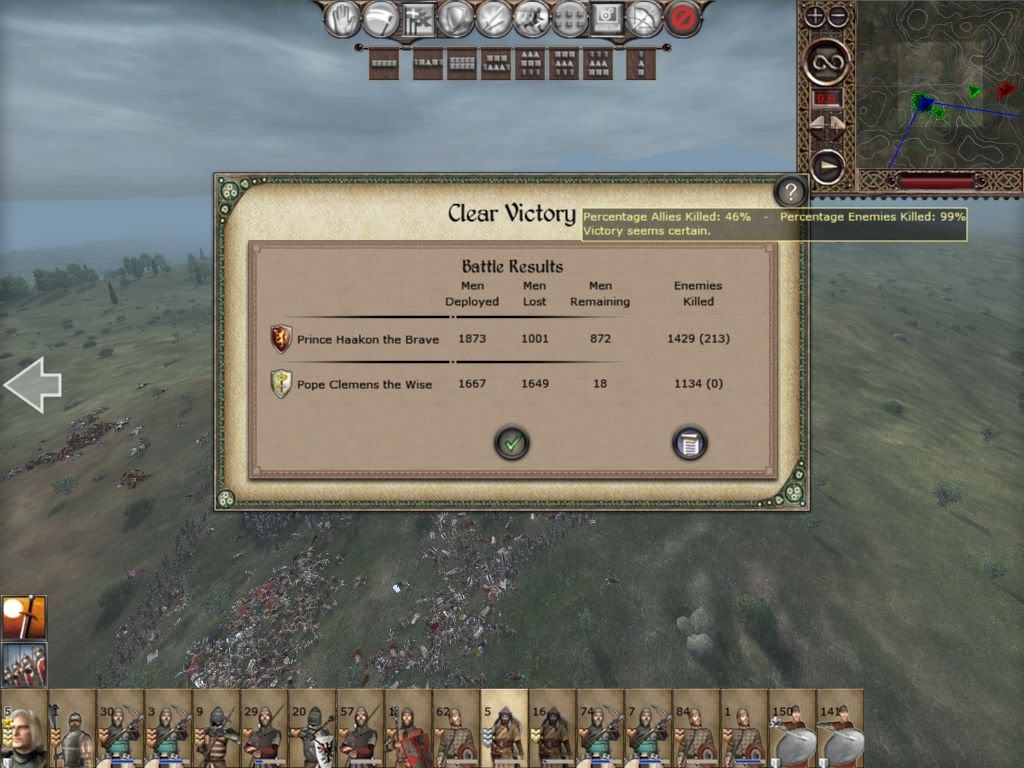
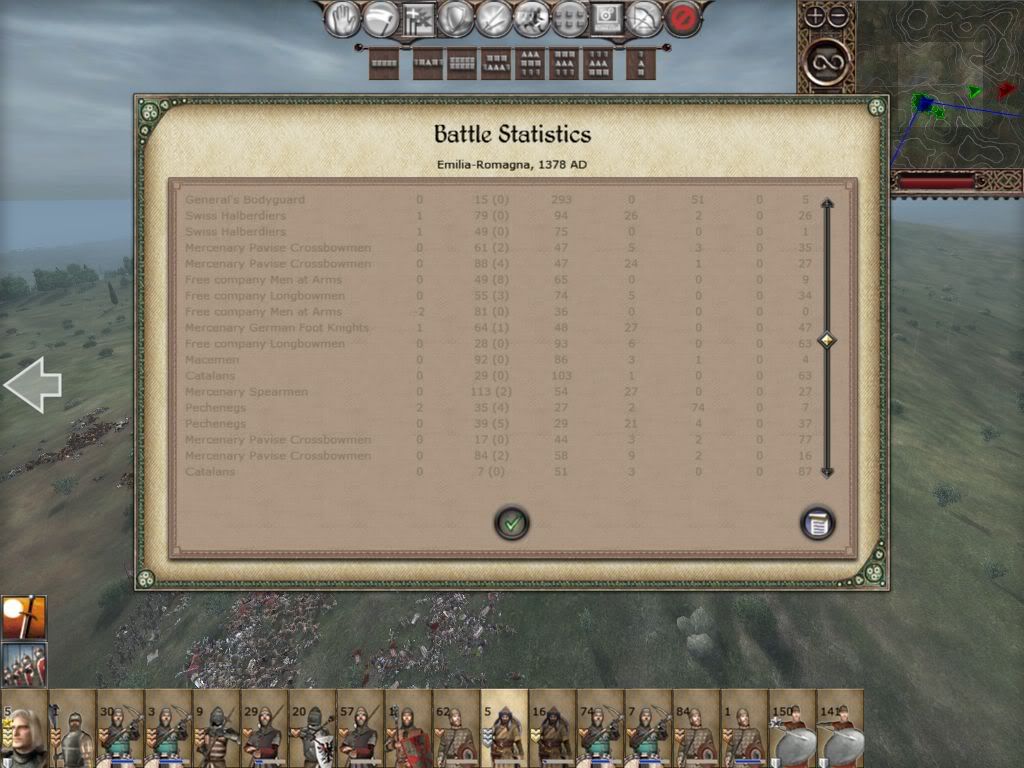
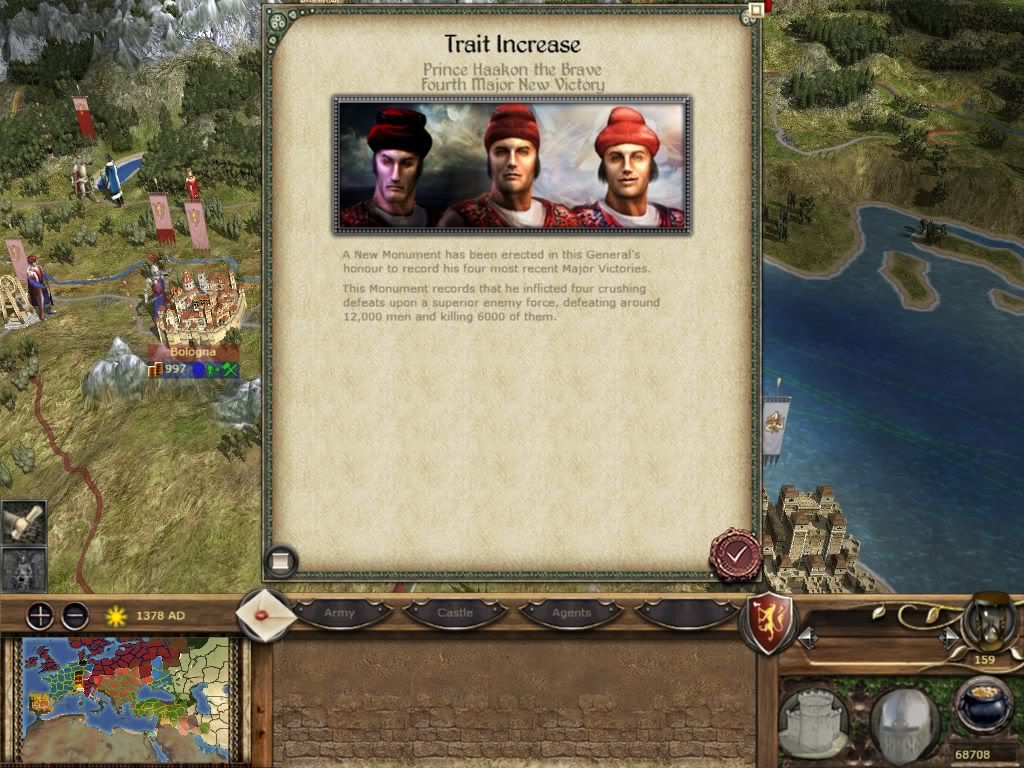
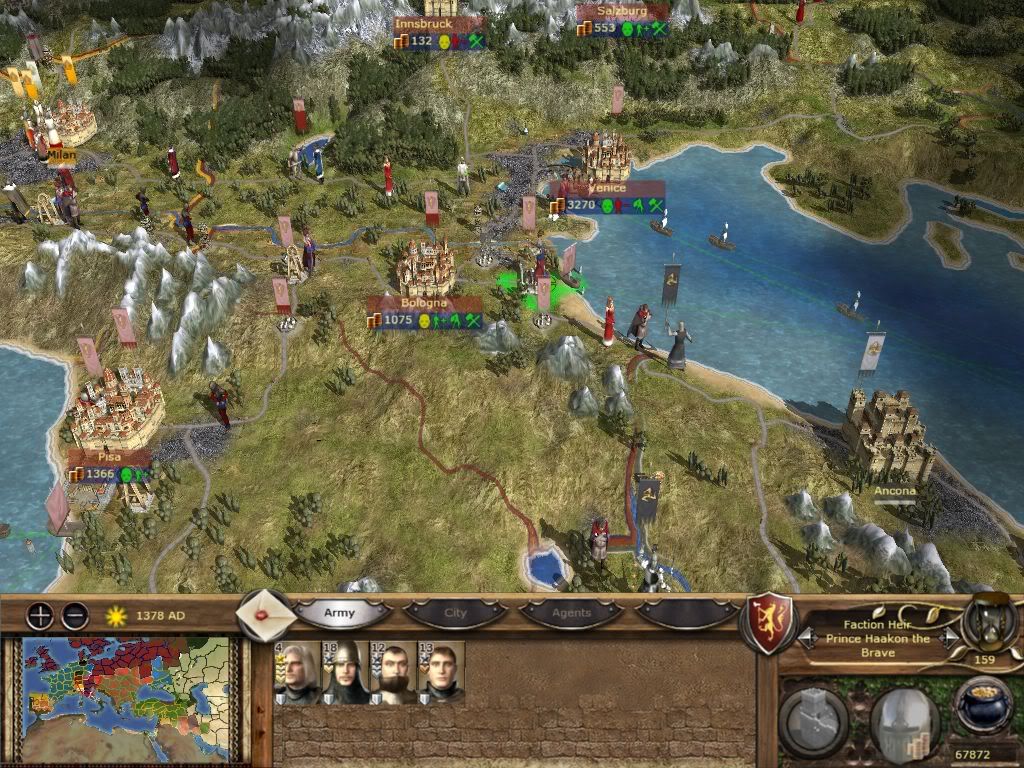

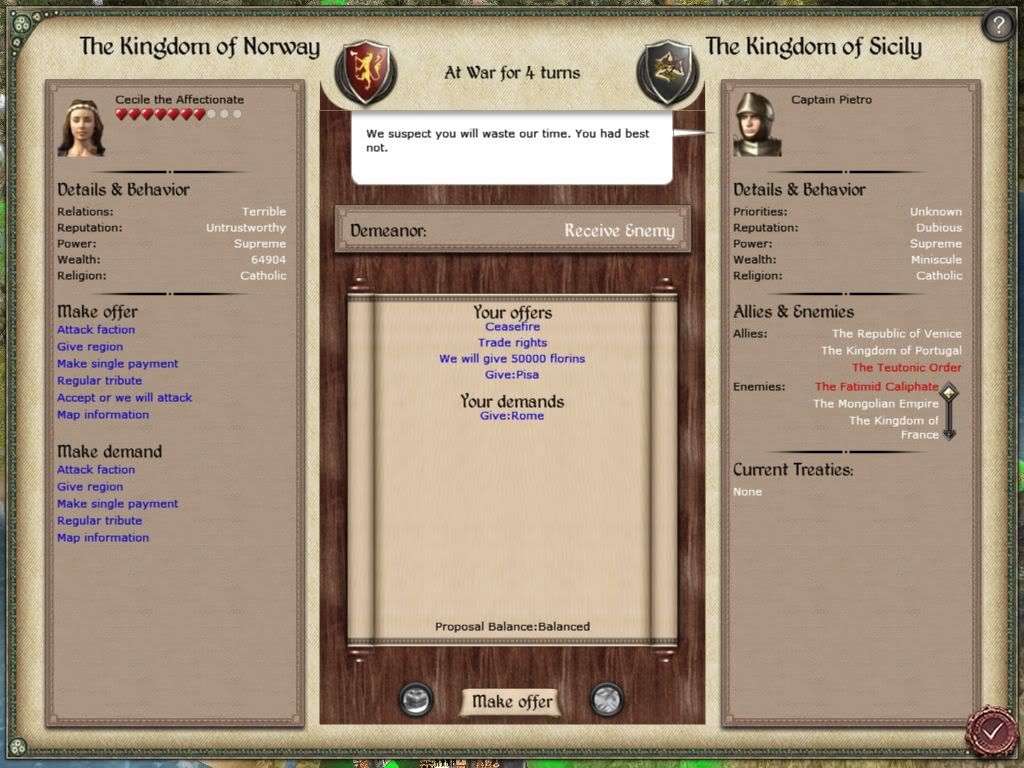
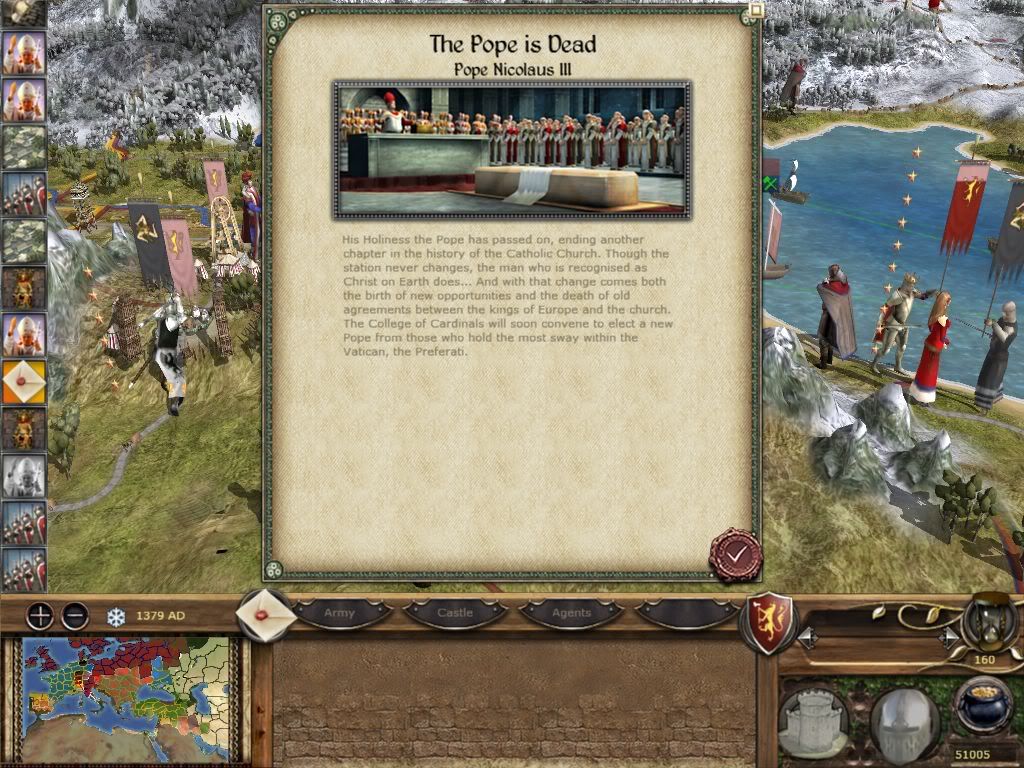
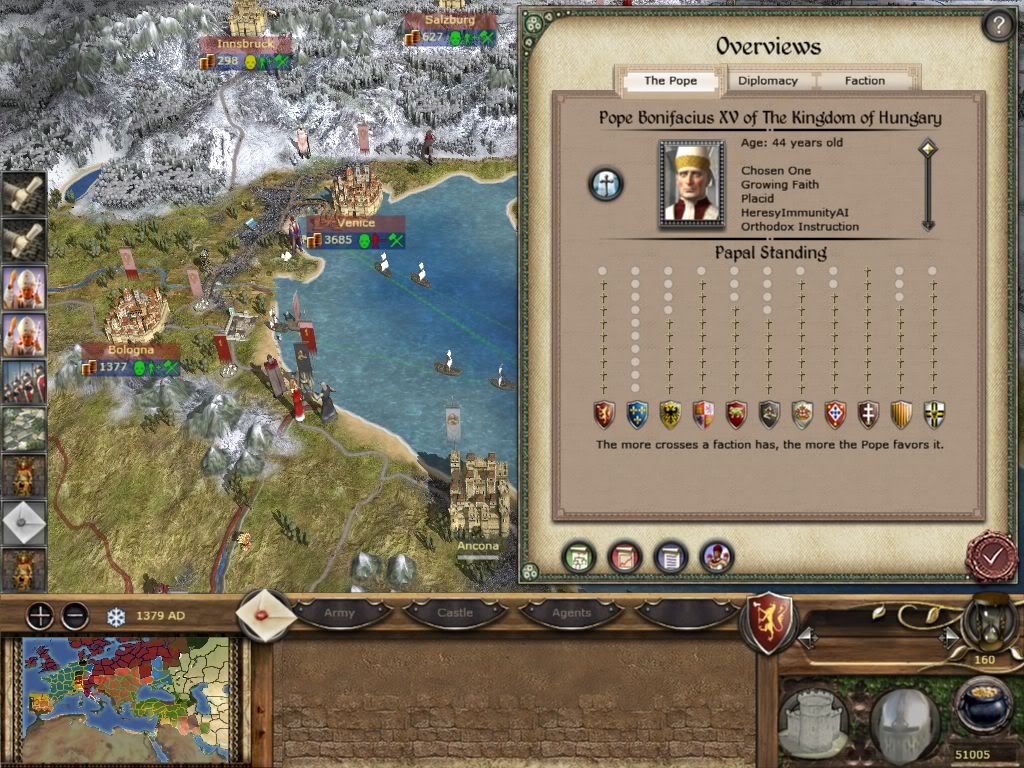
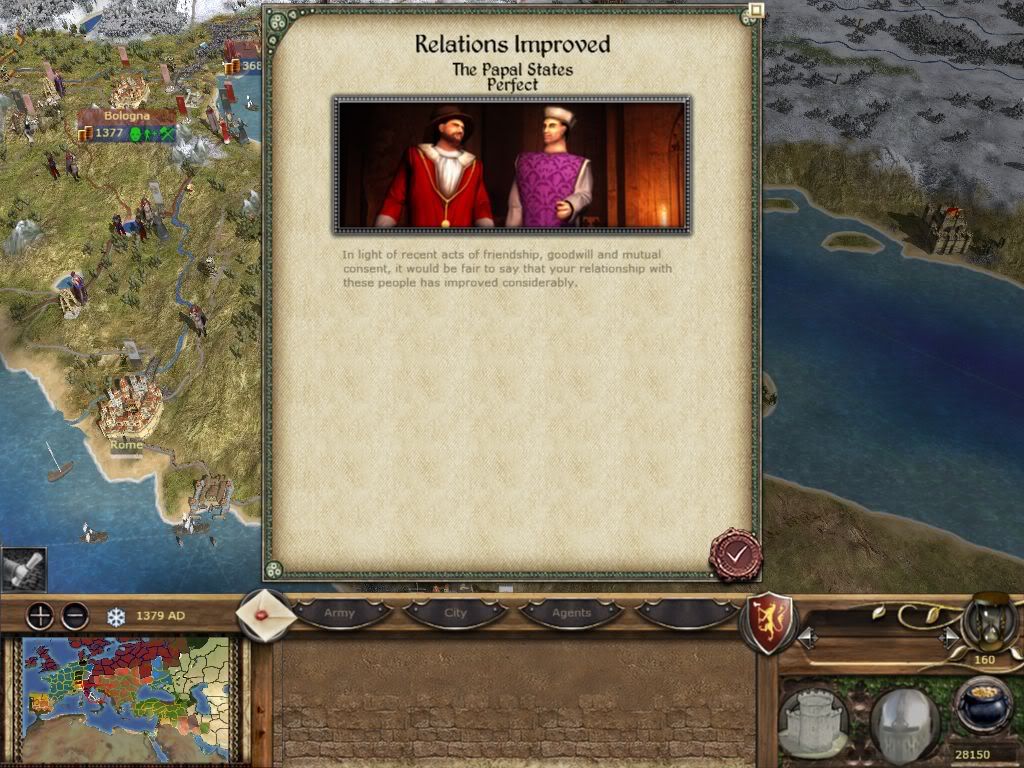

 Reply With Quote
Reply With Quote